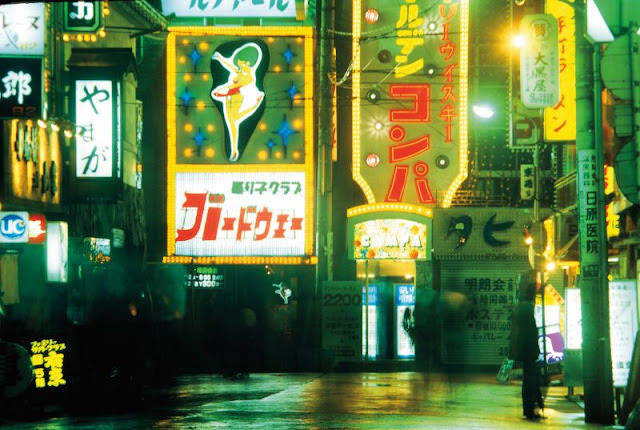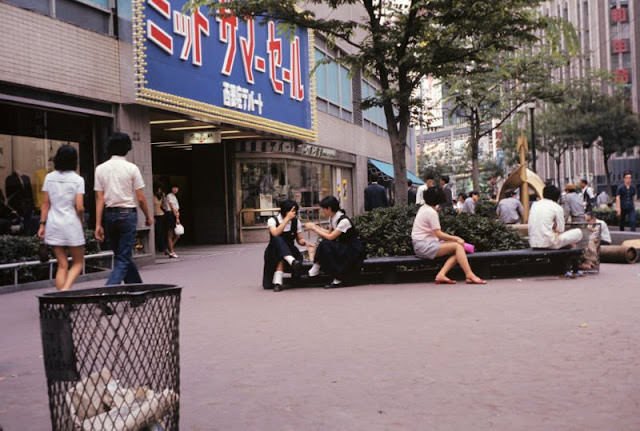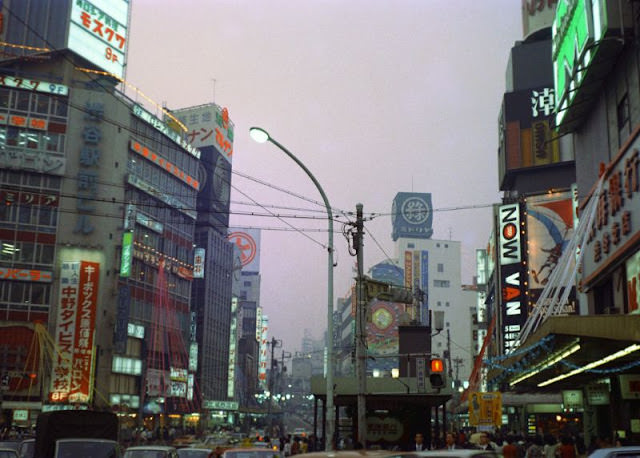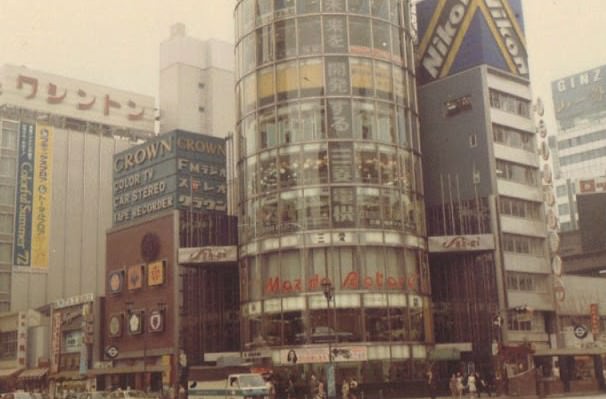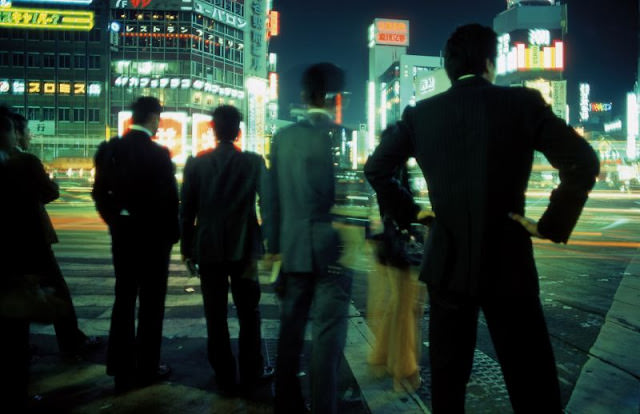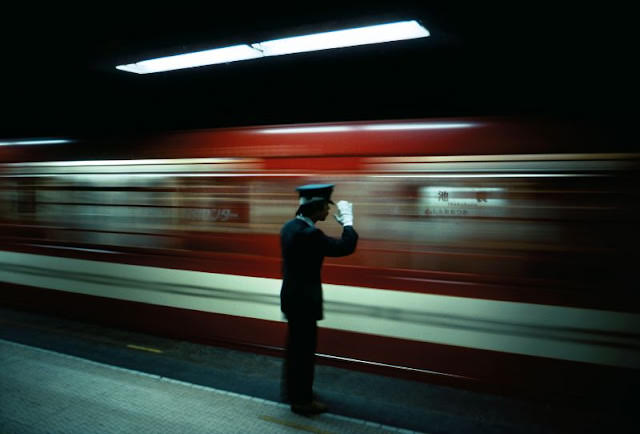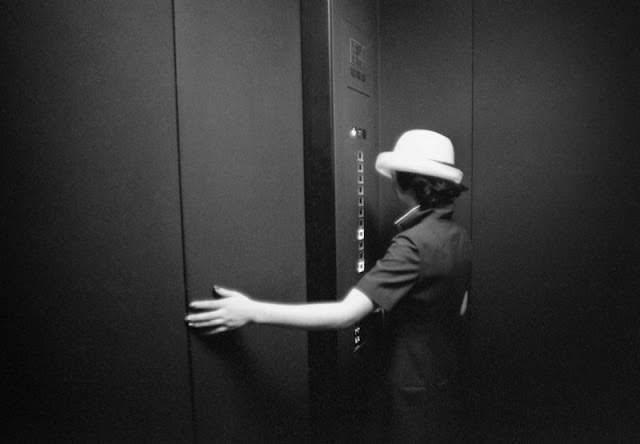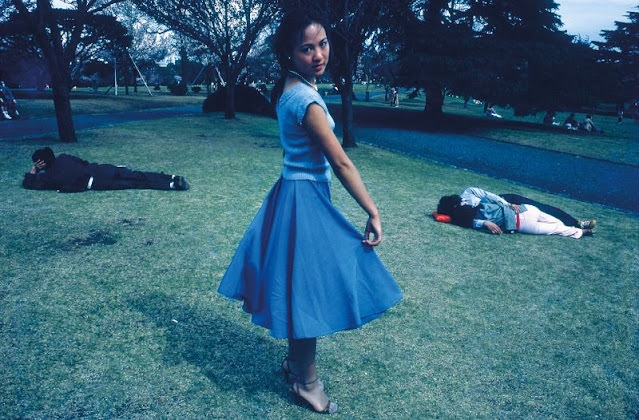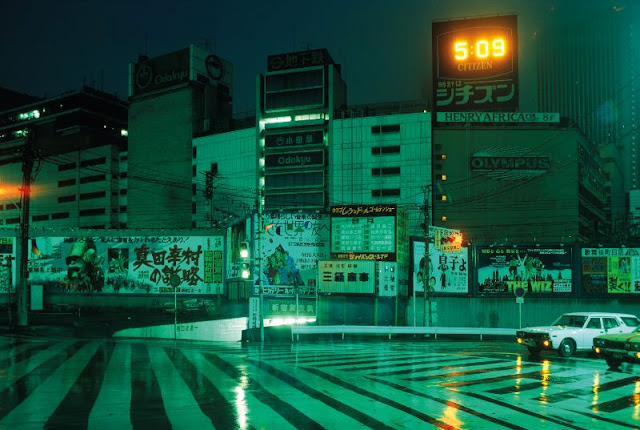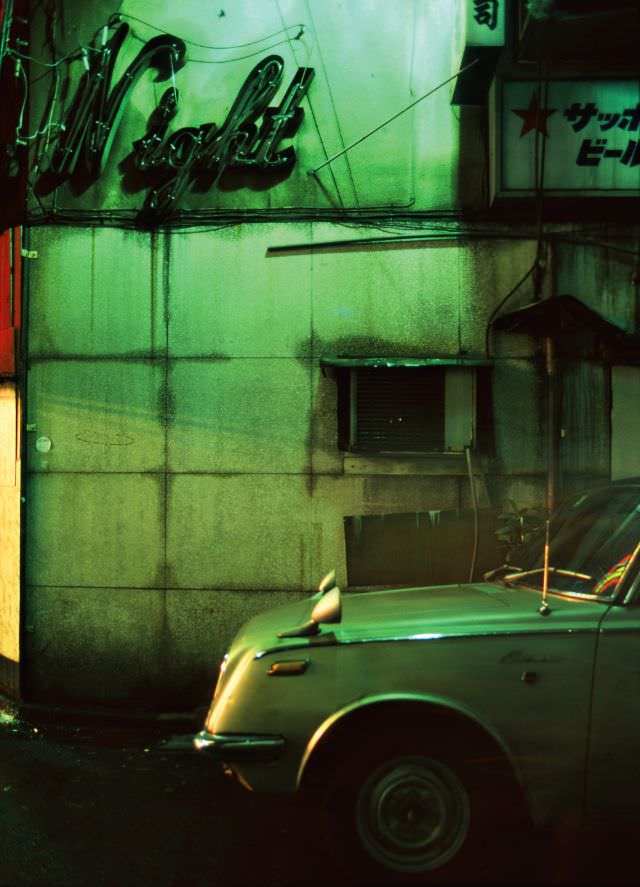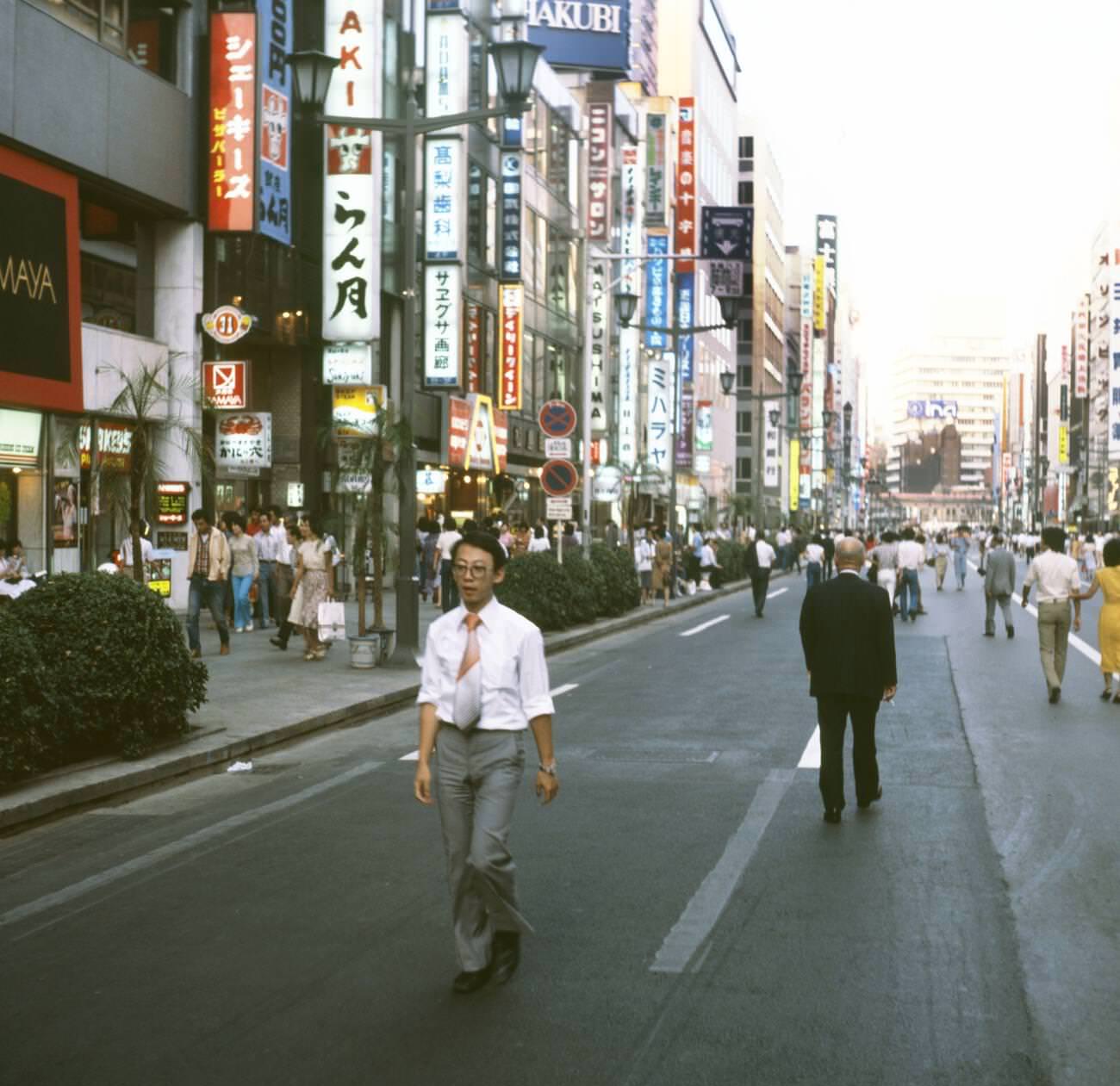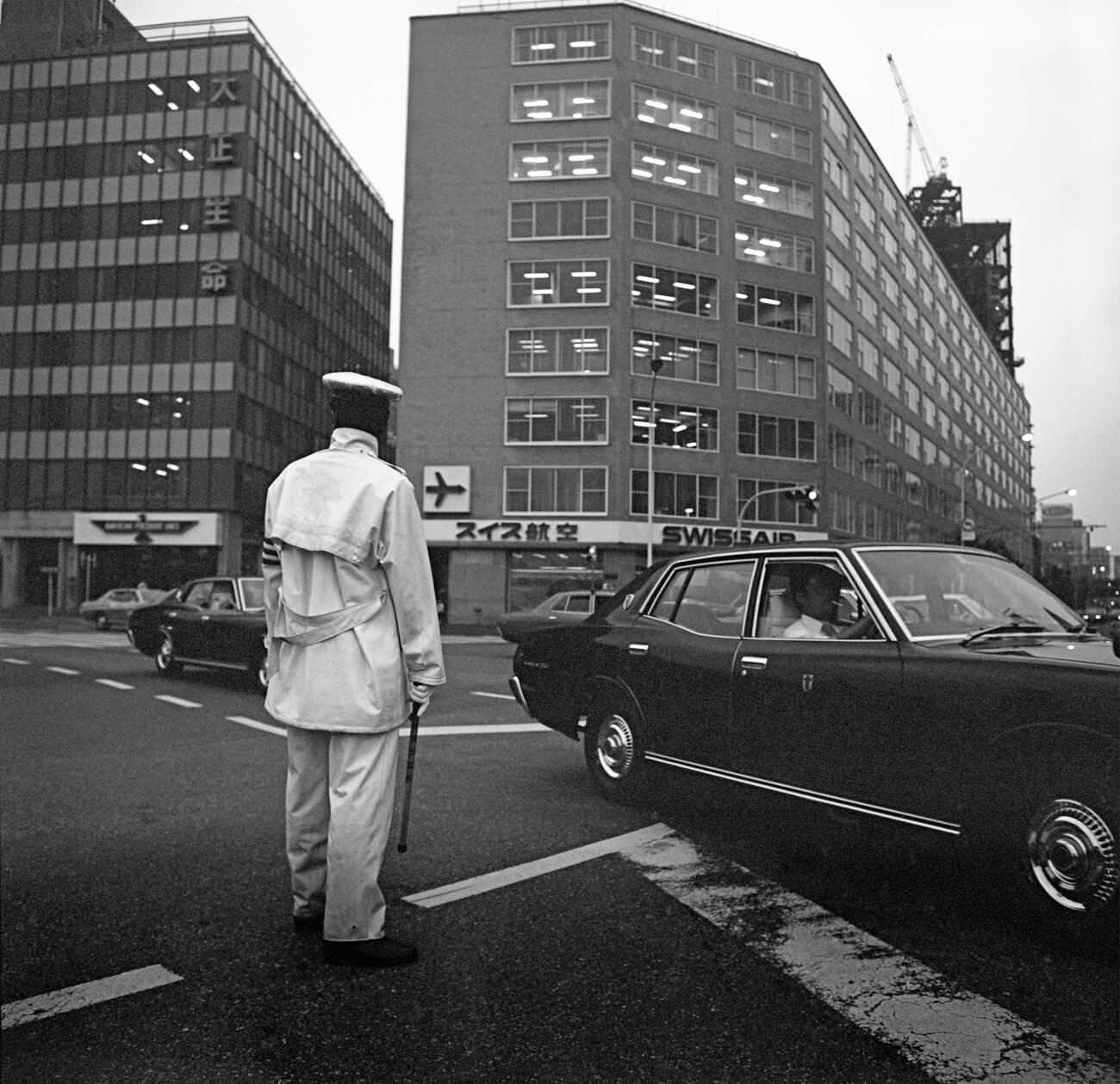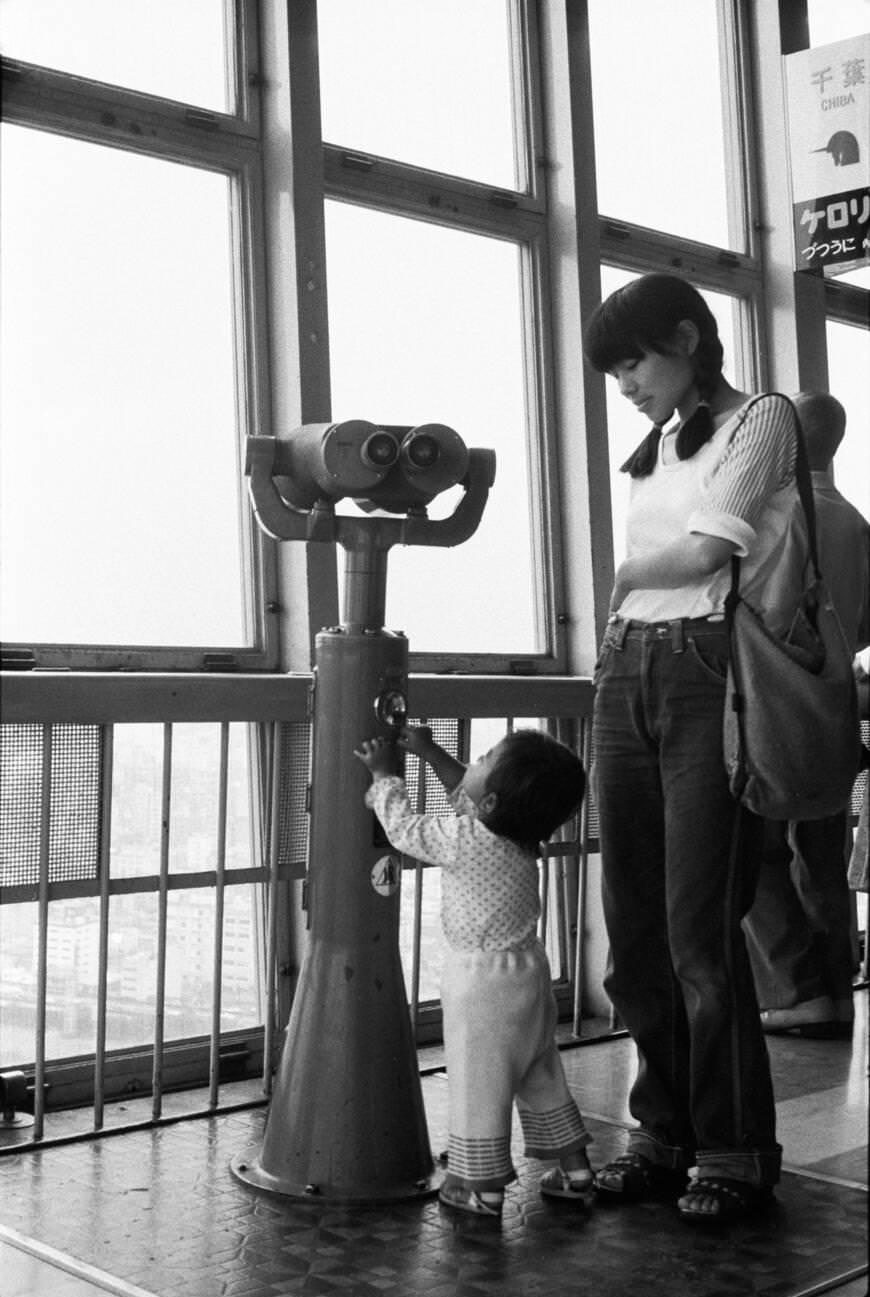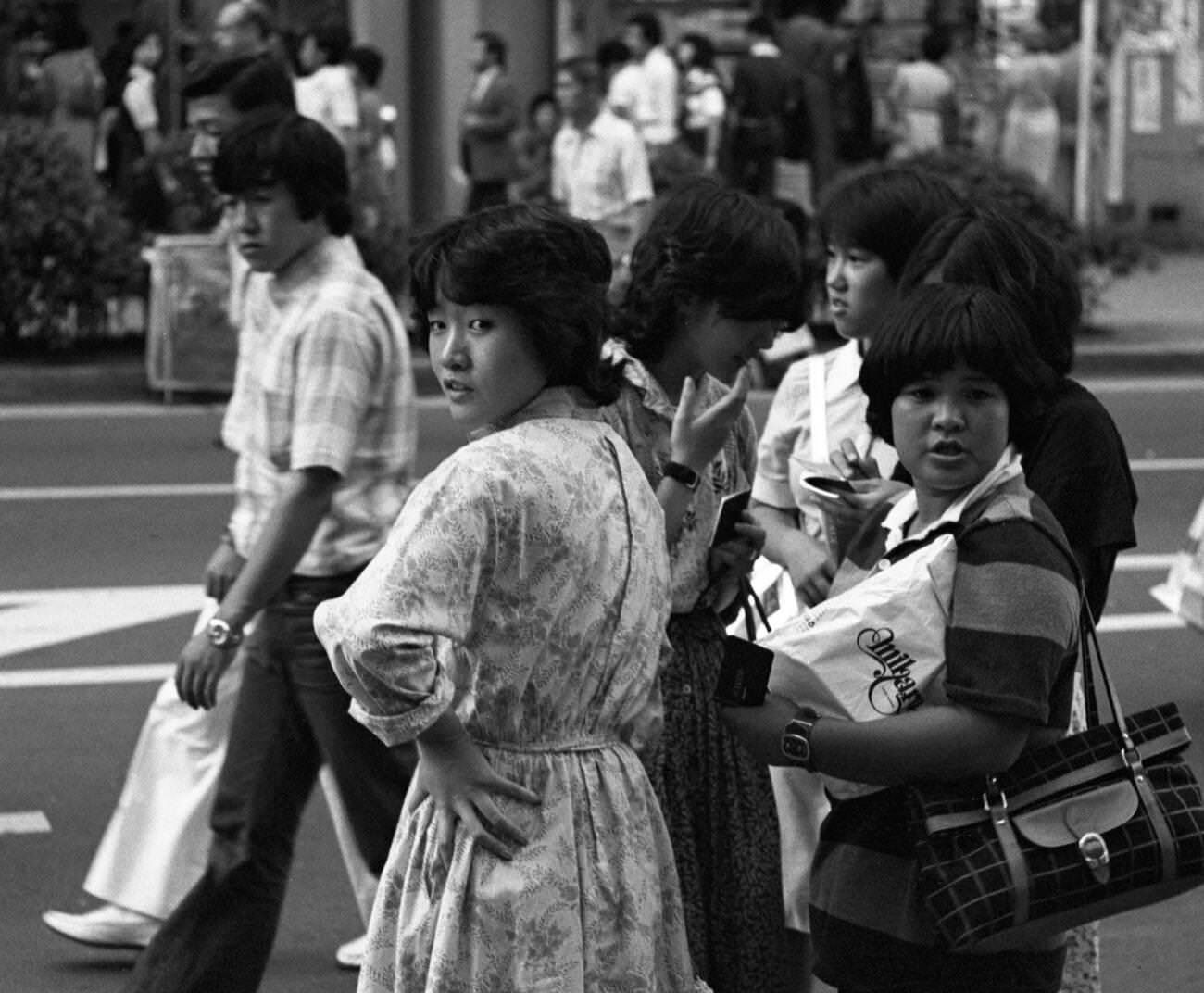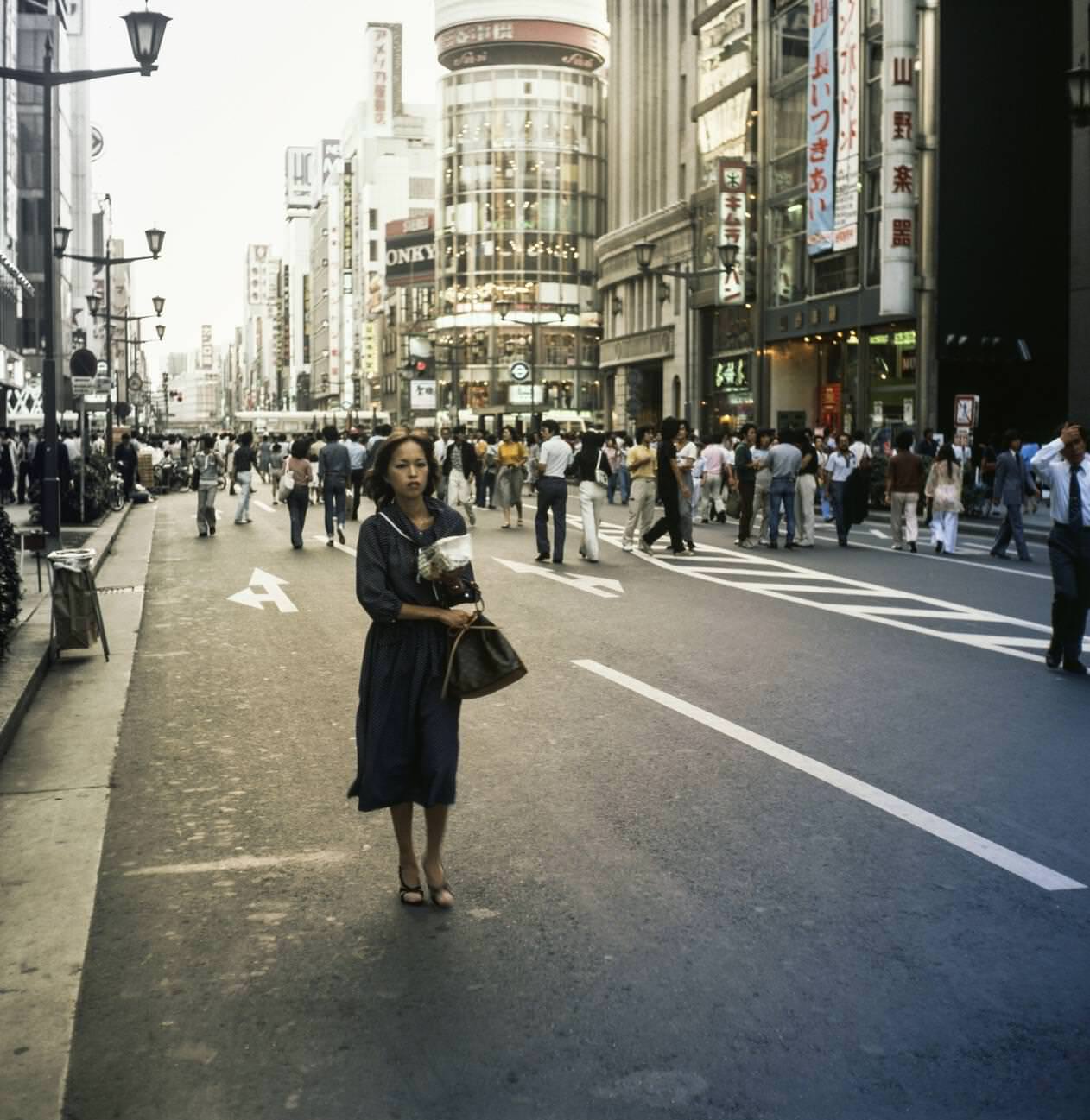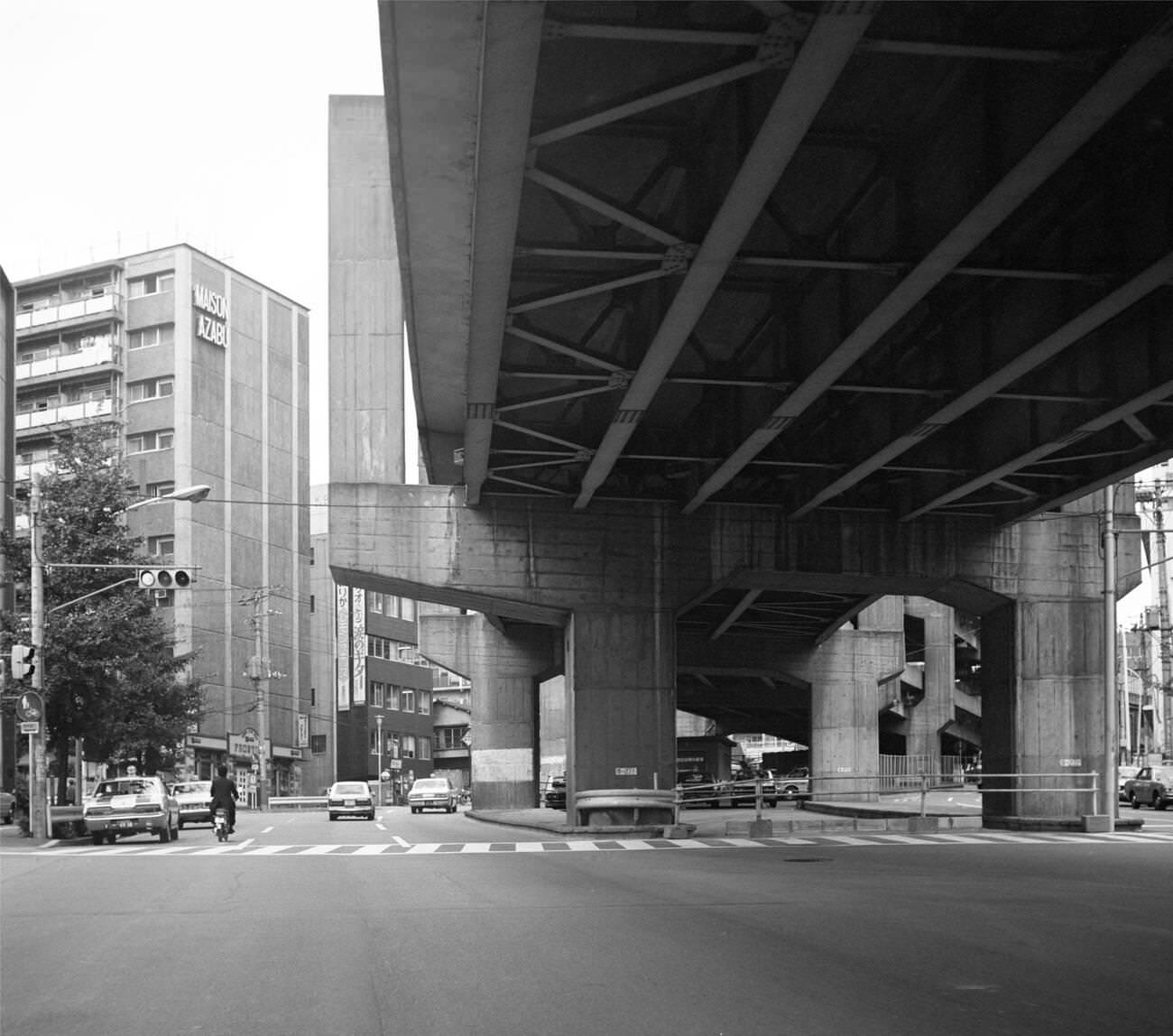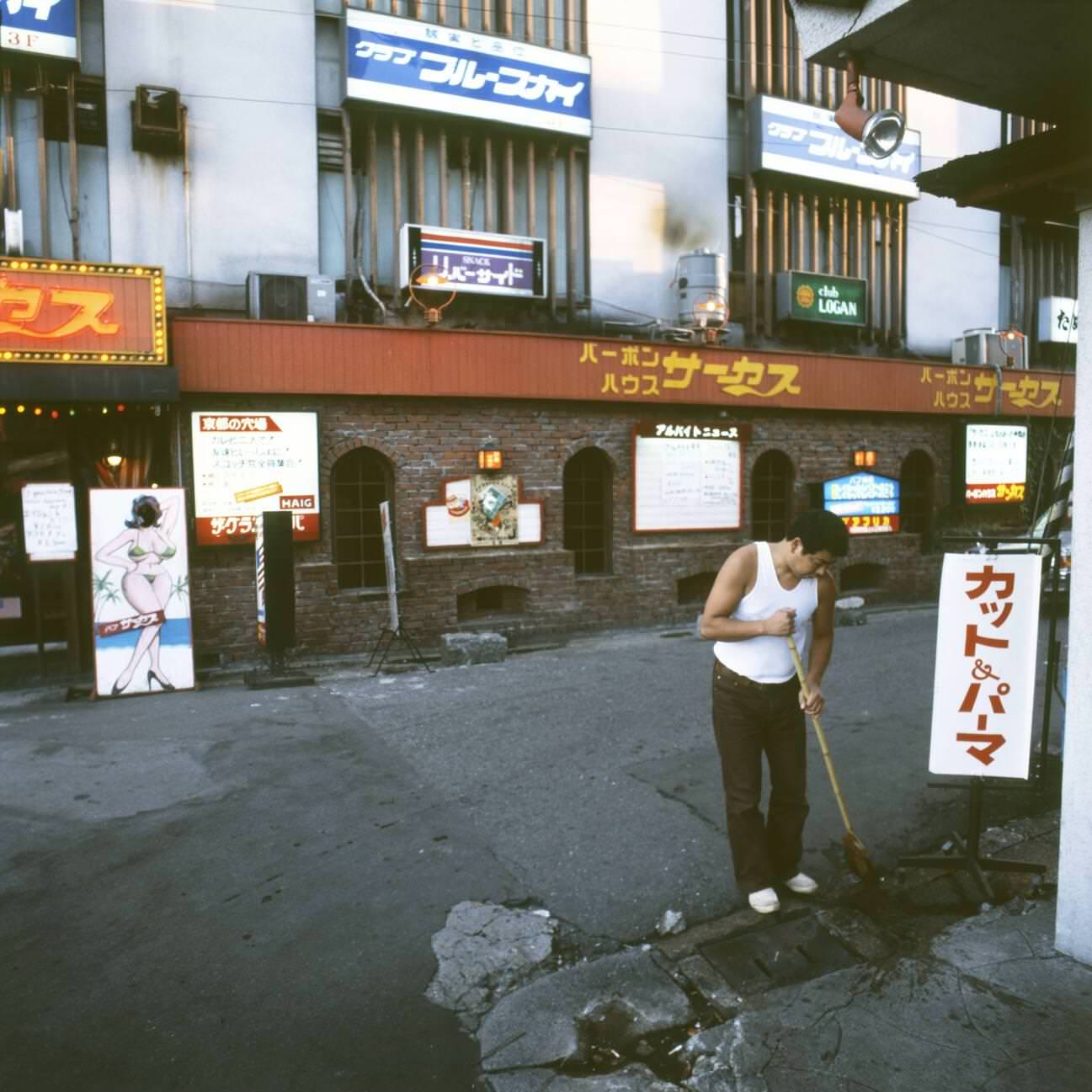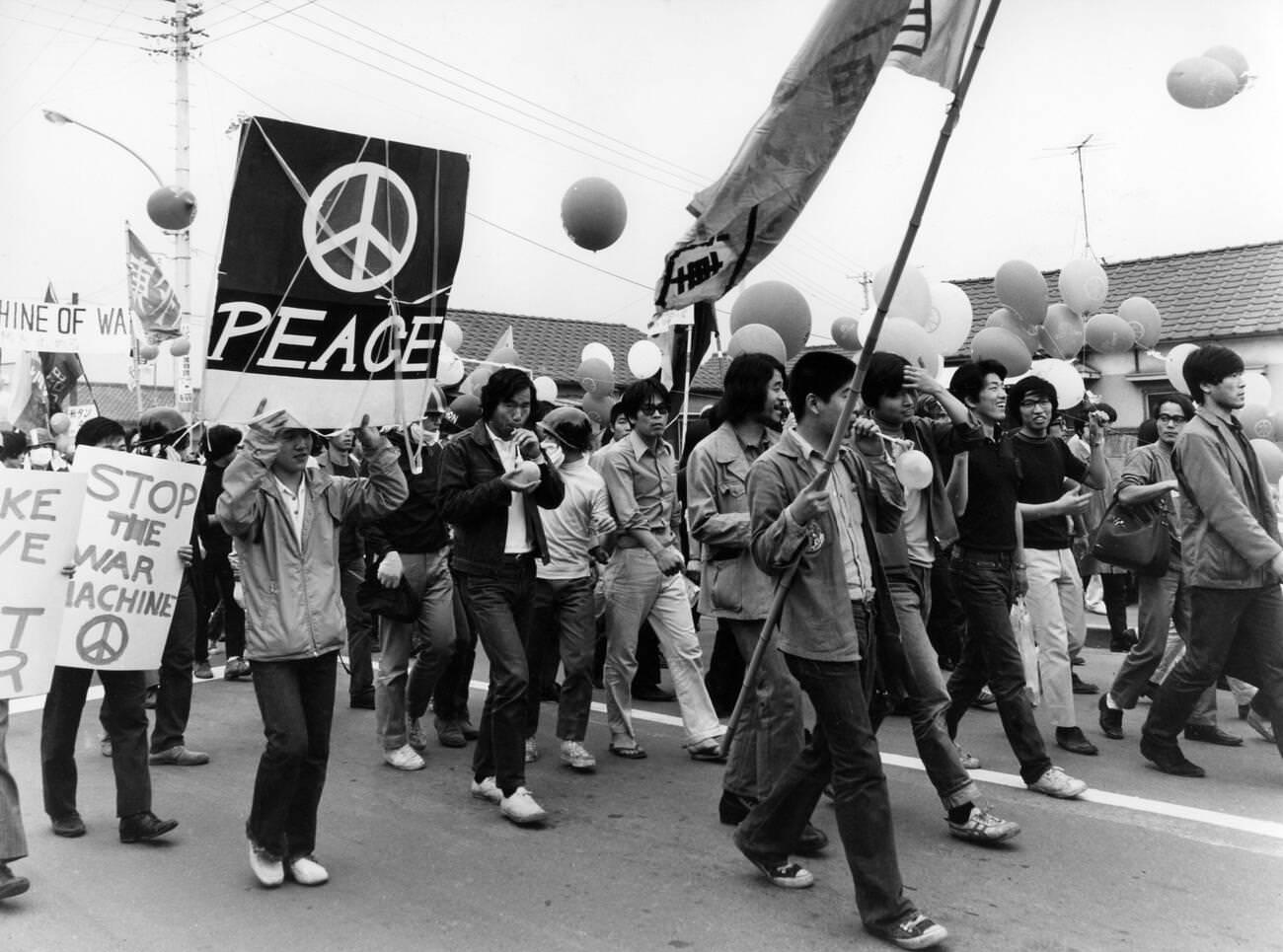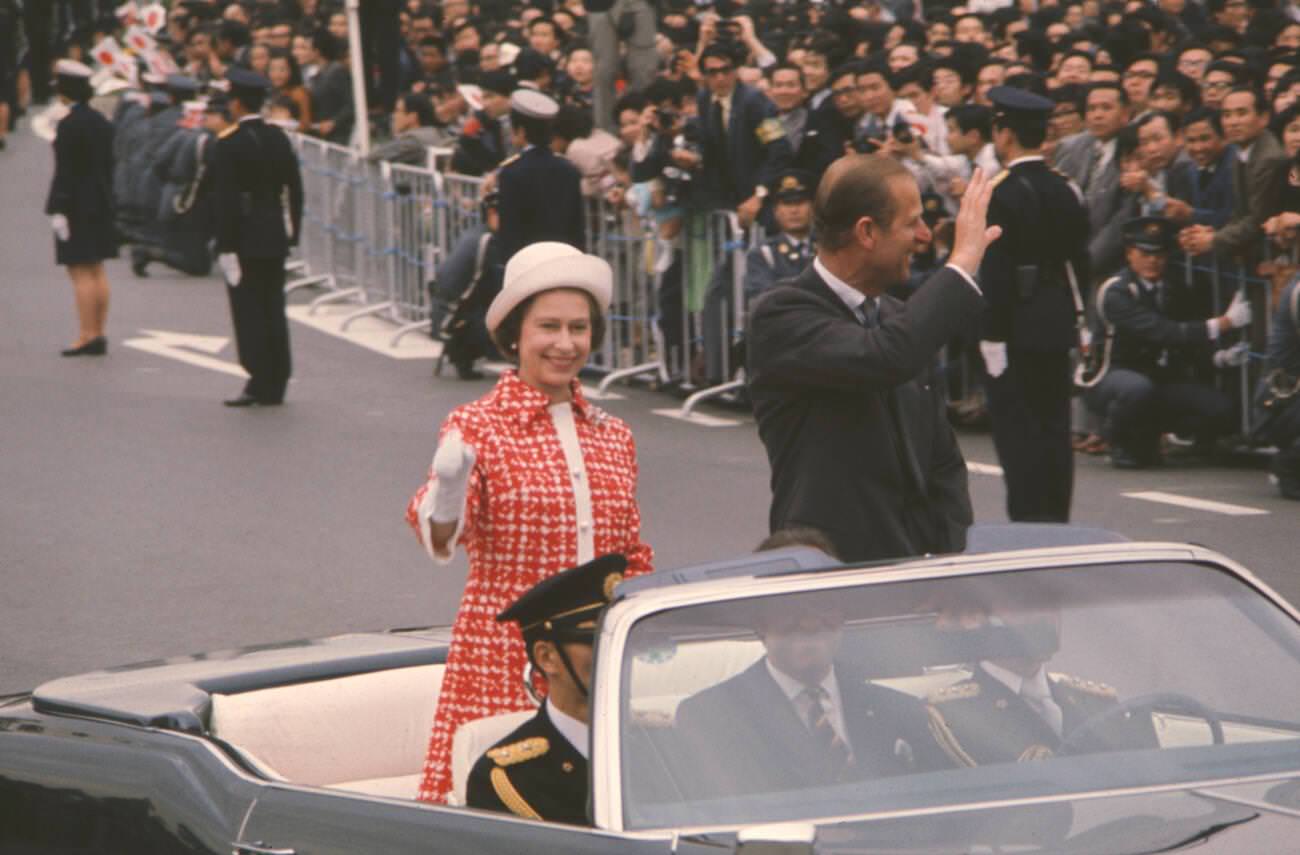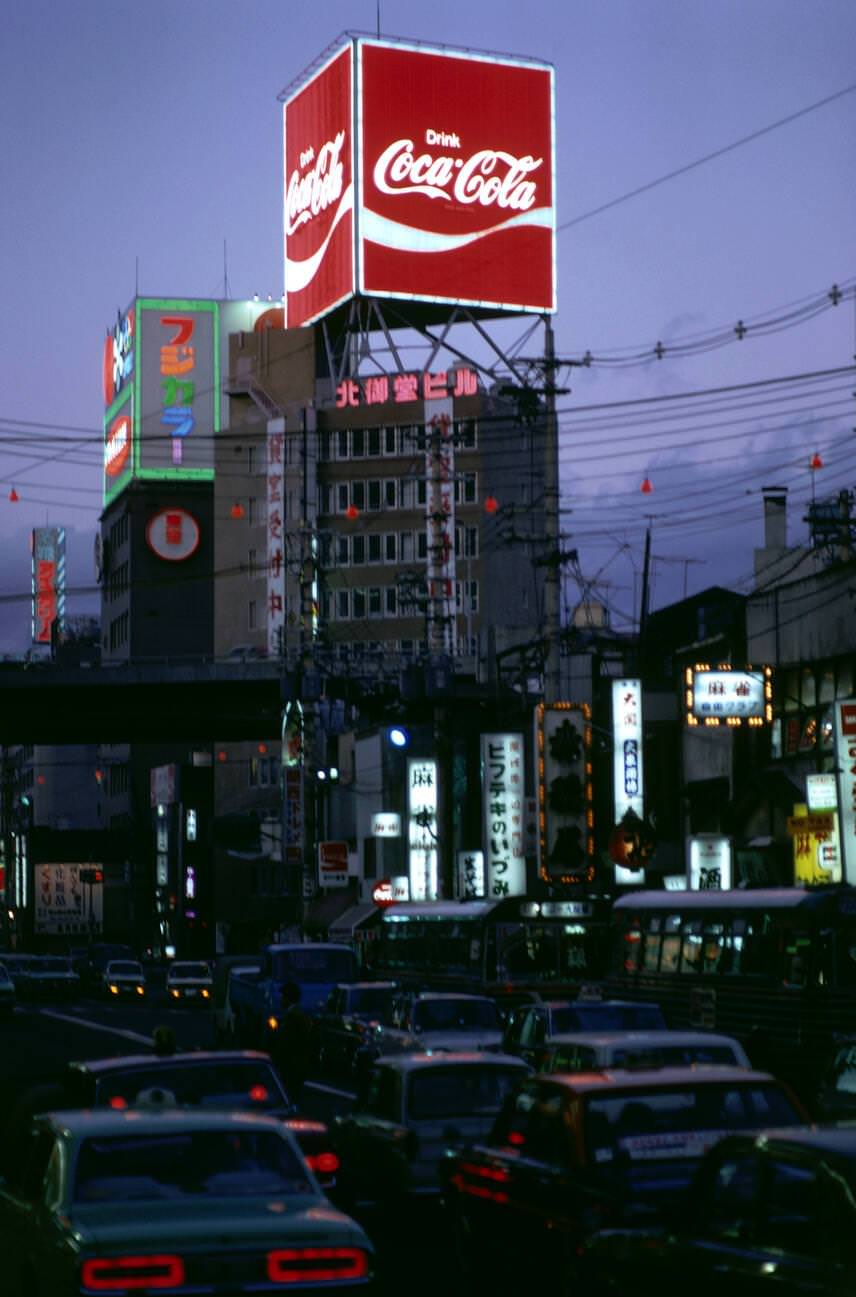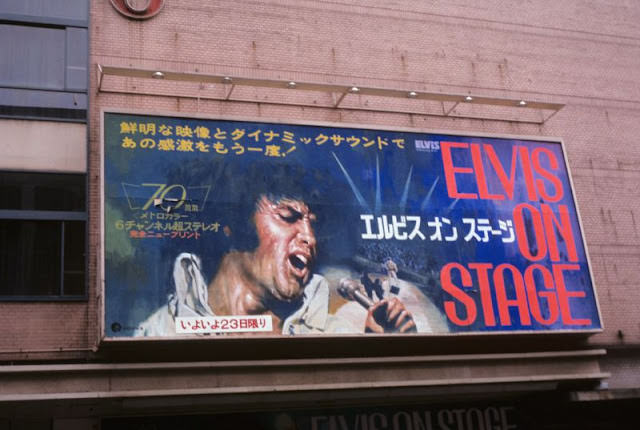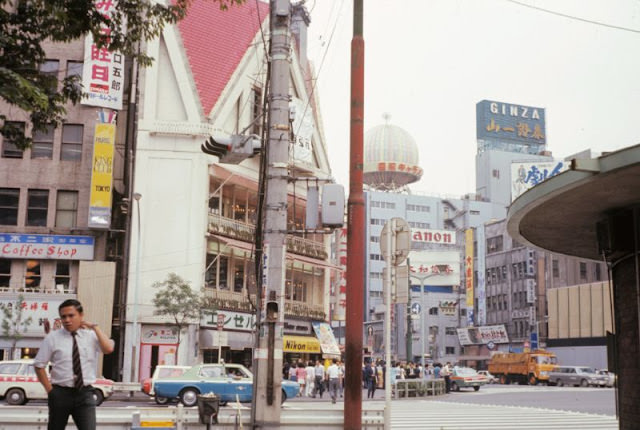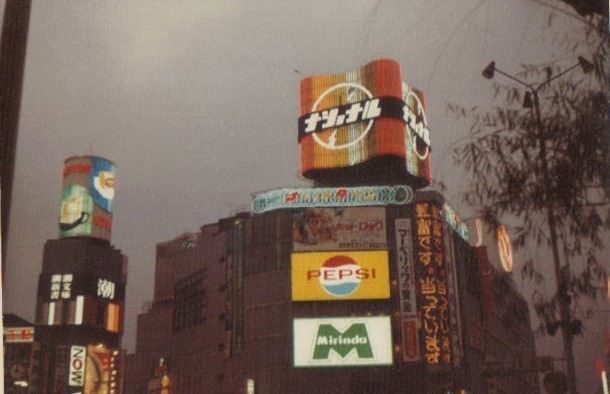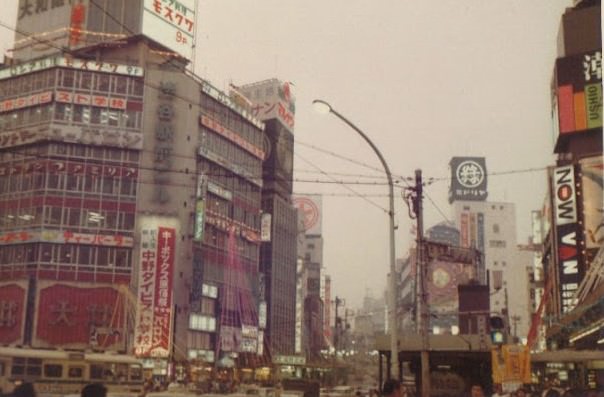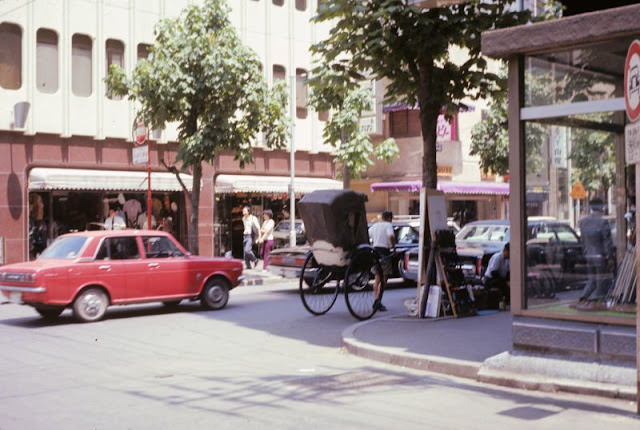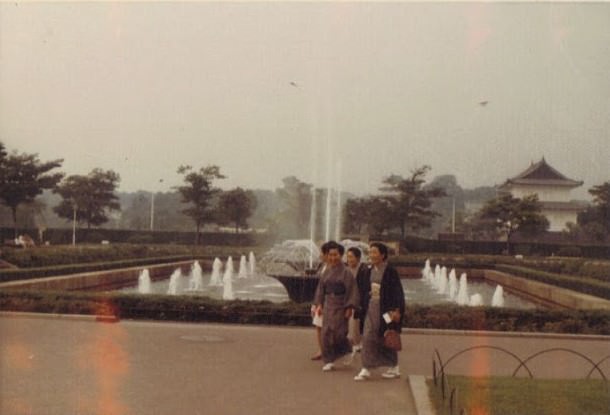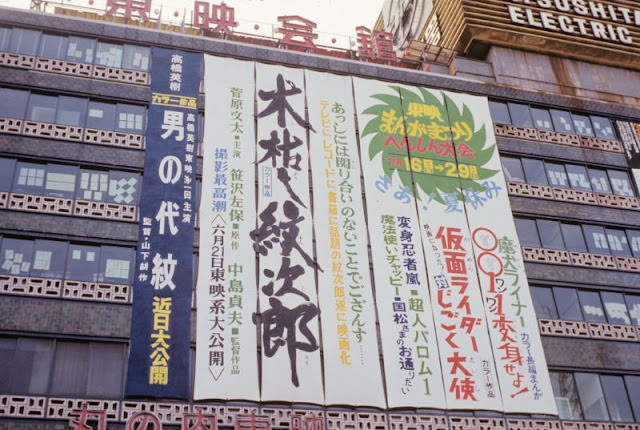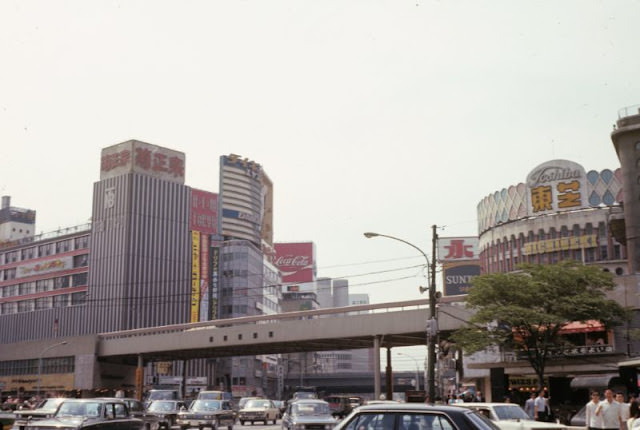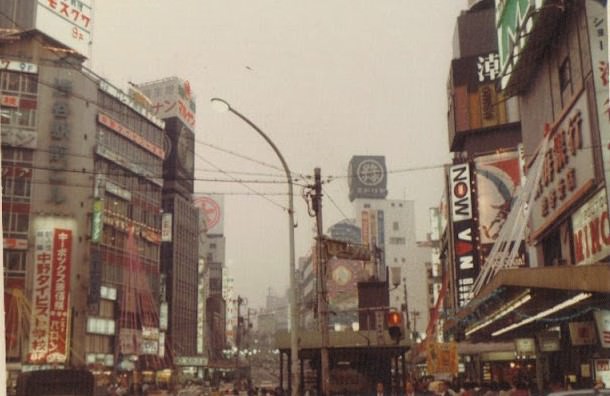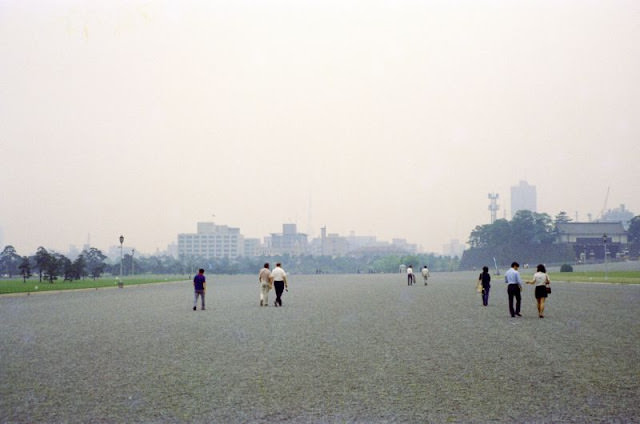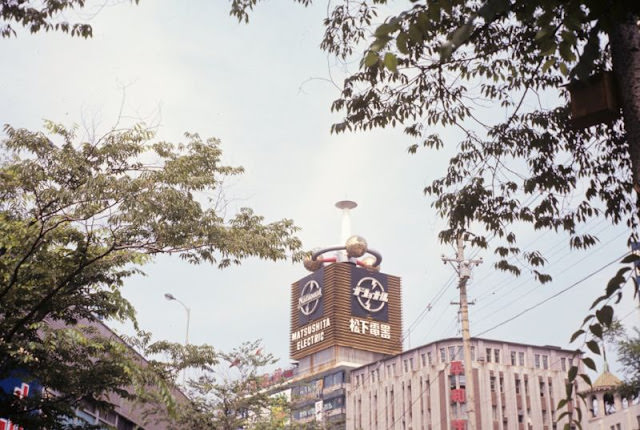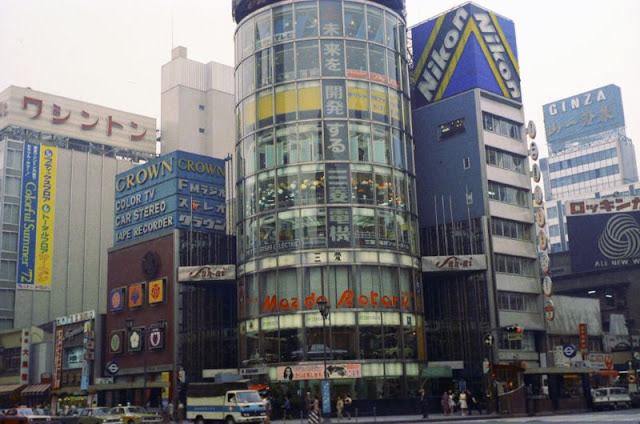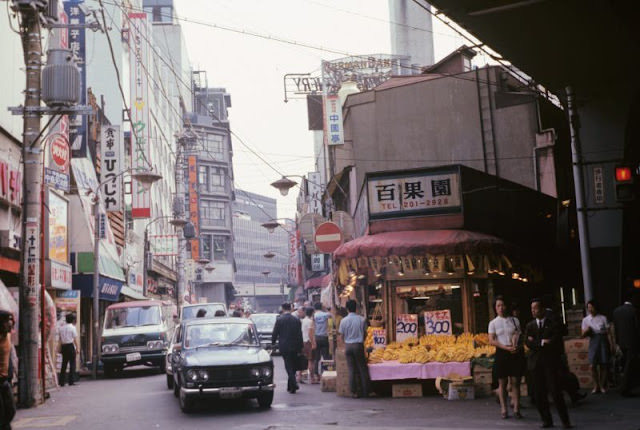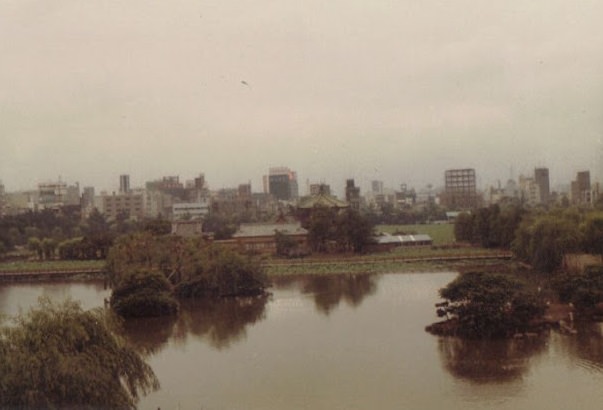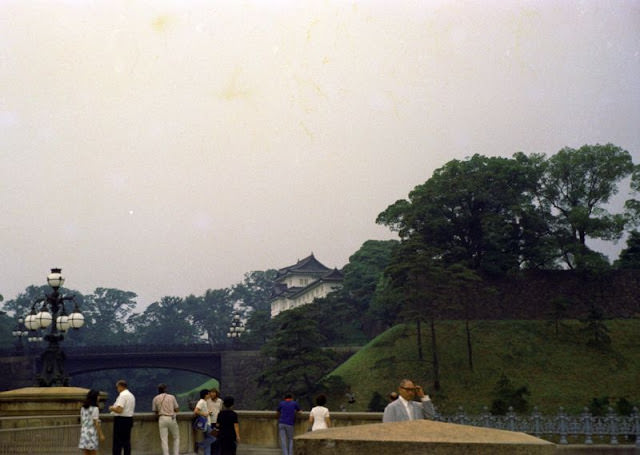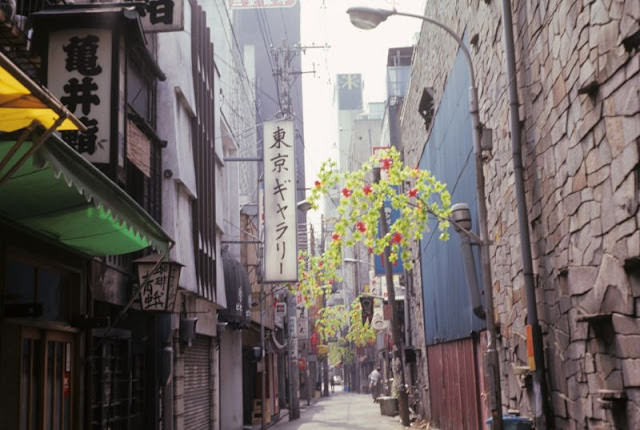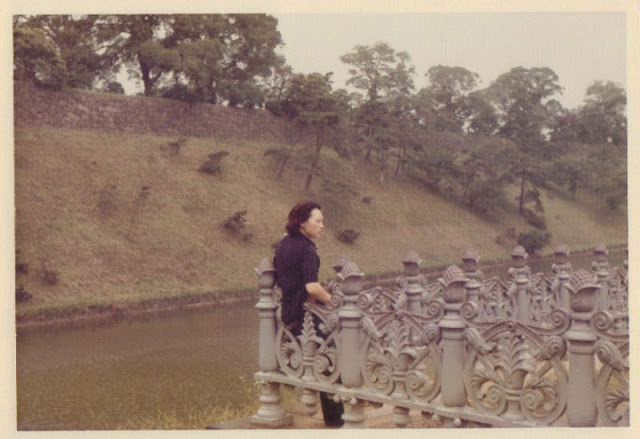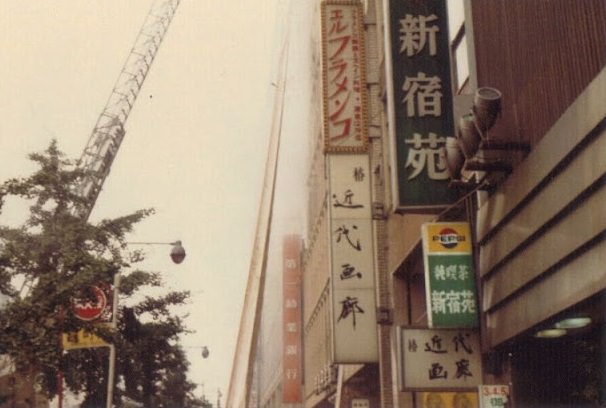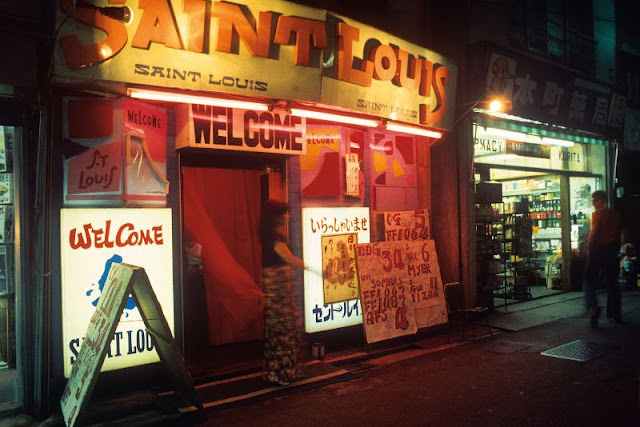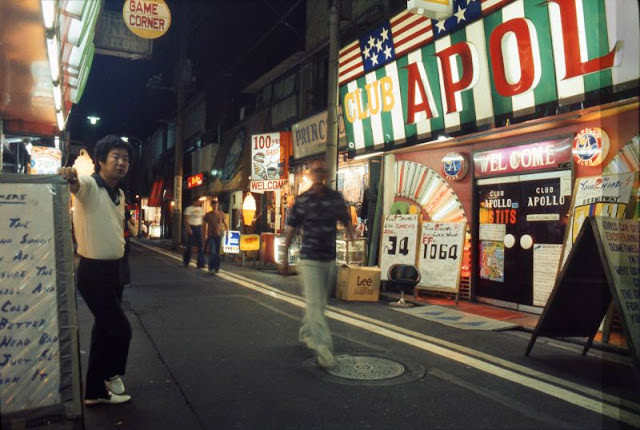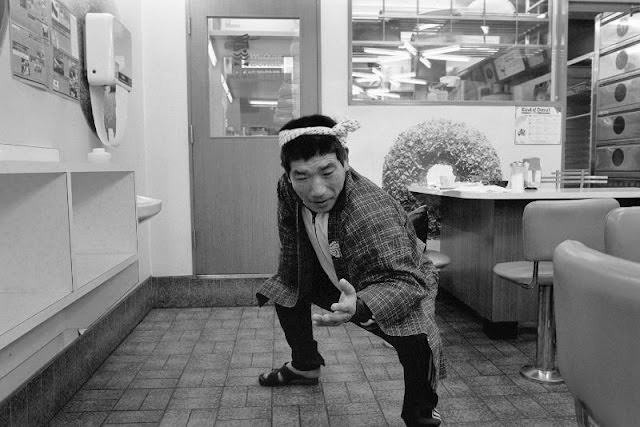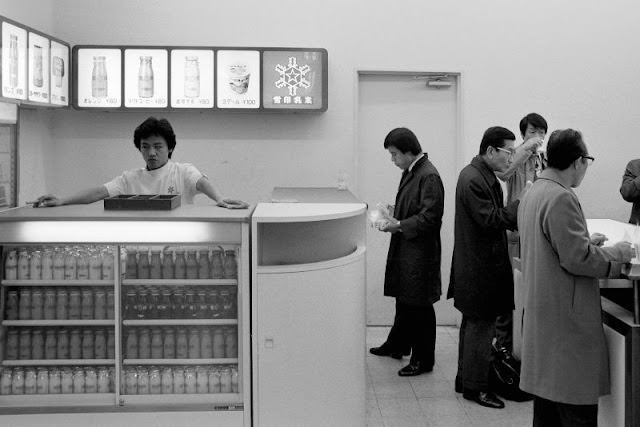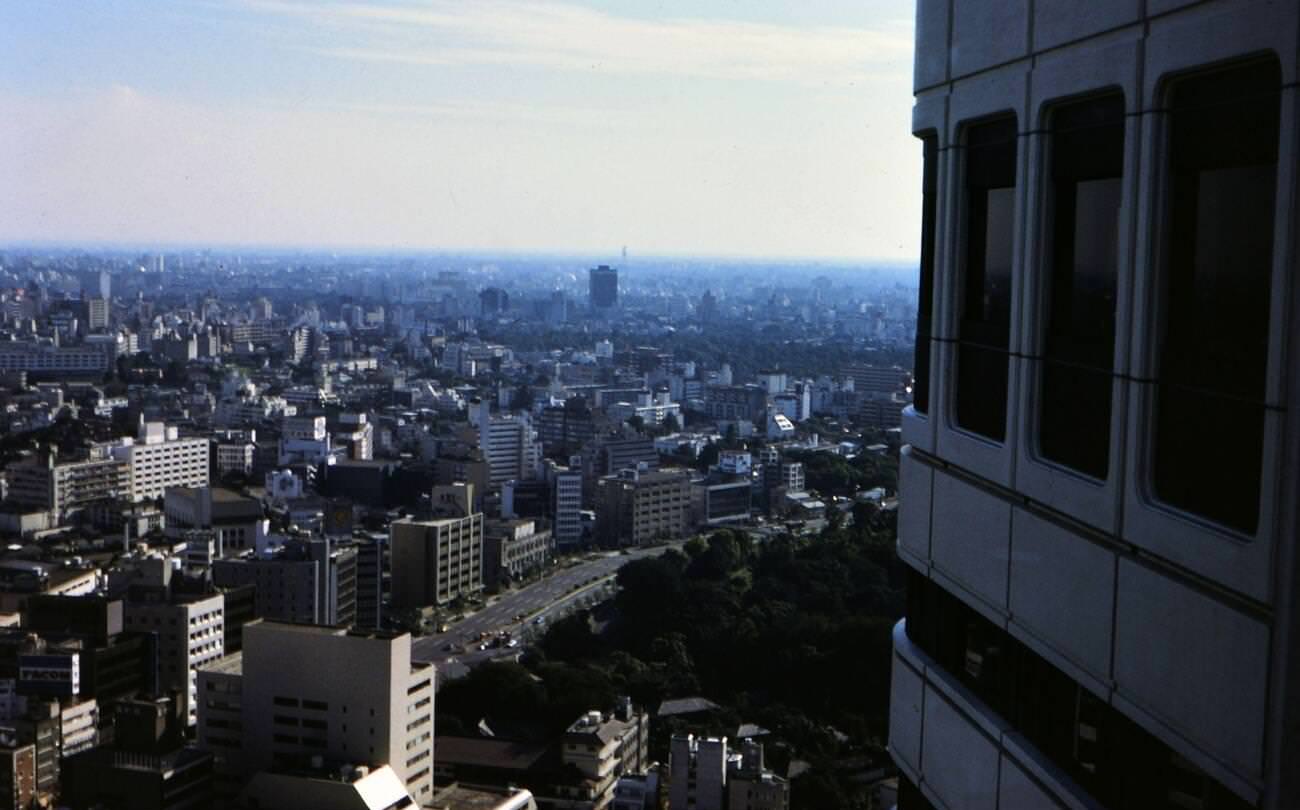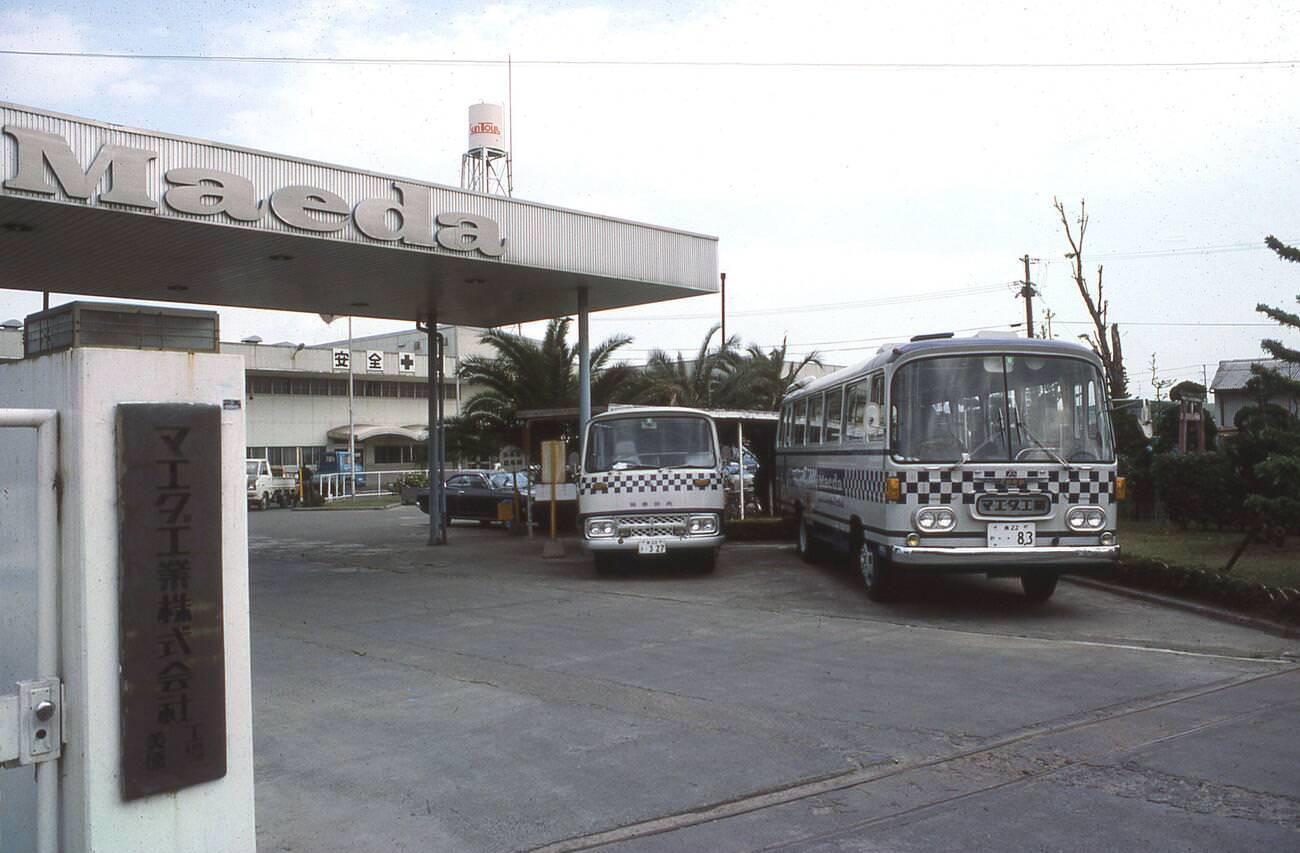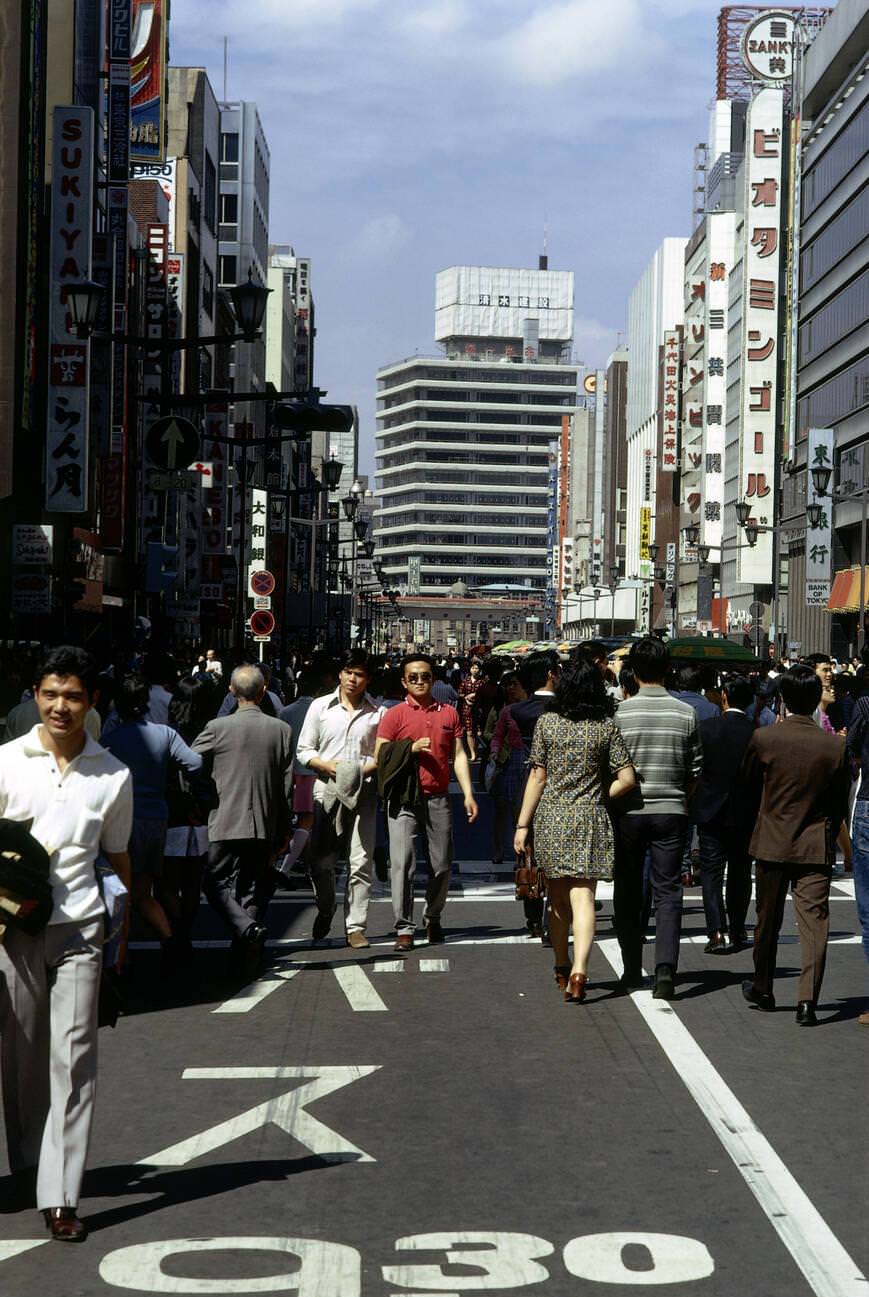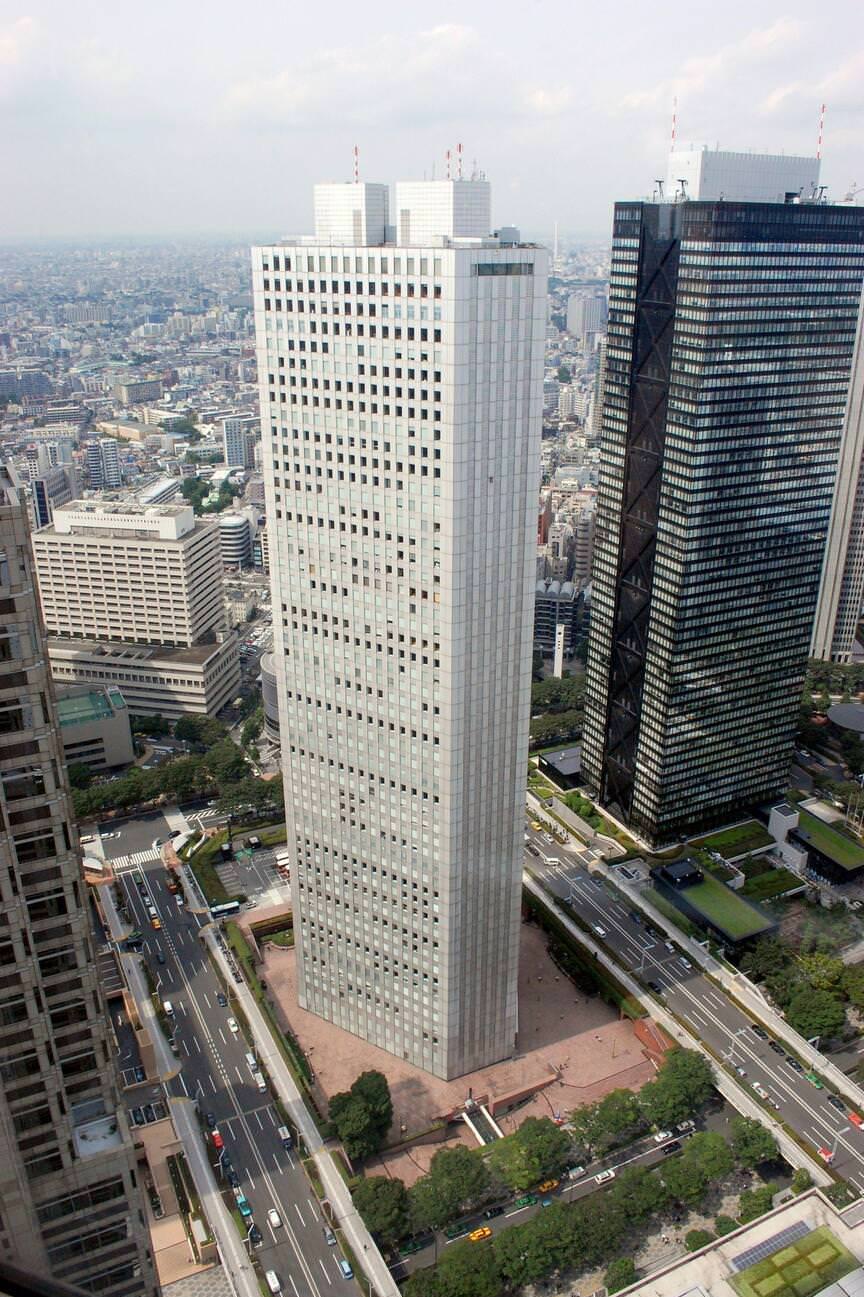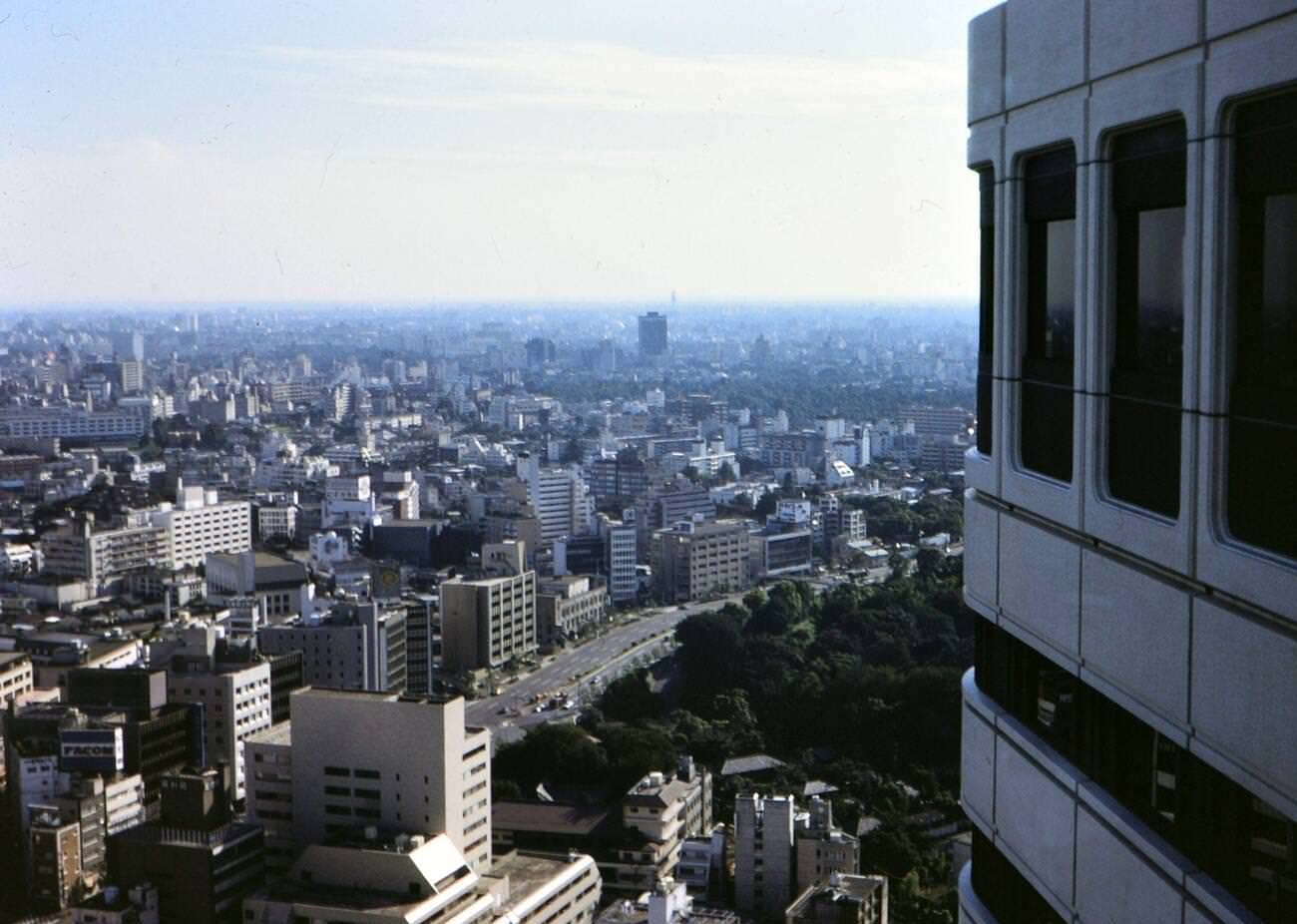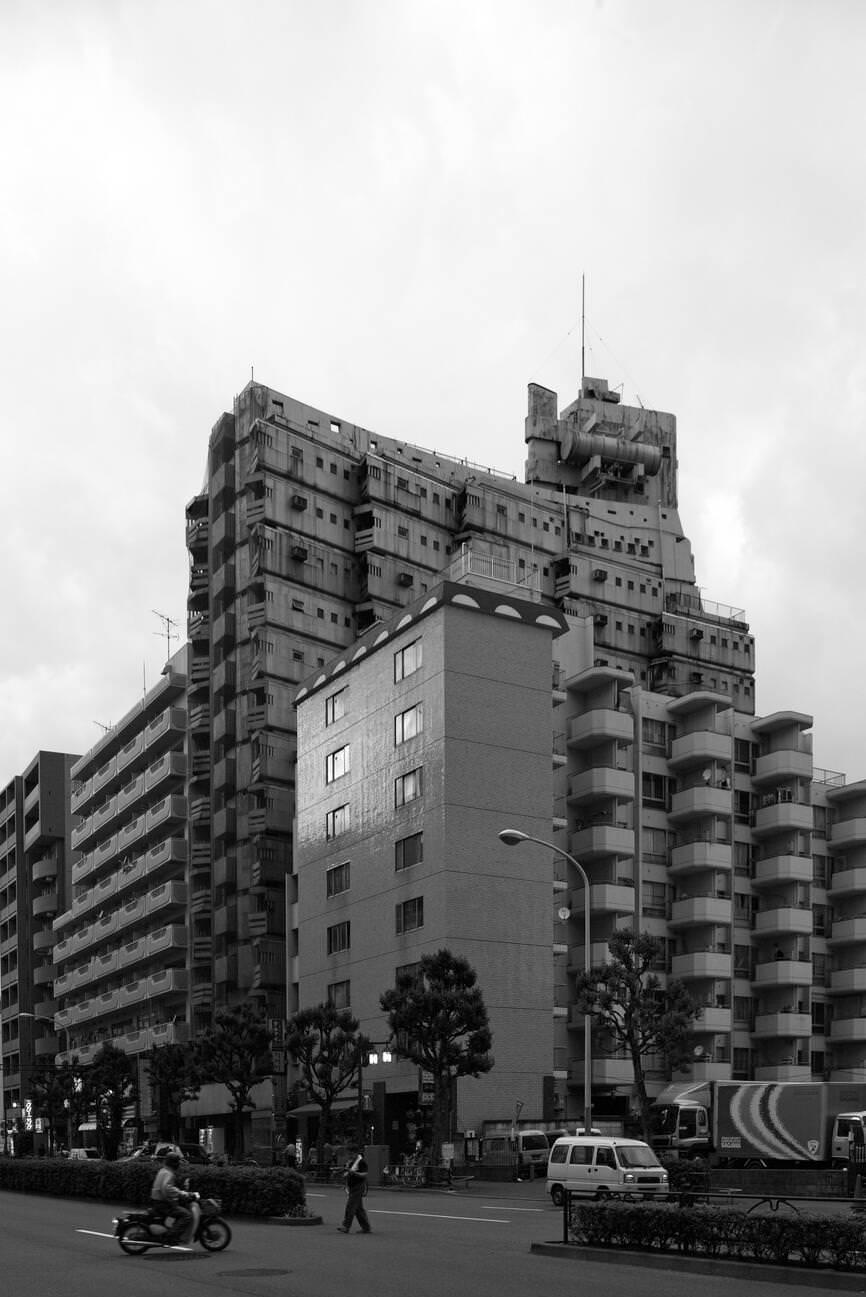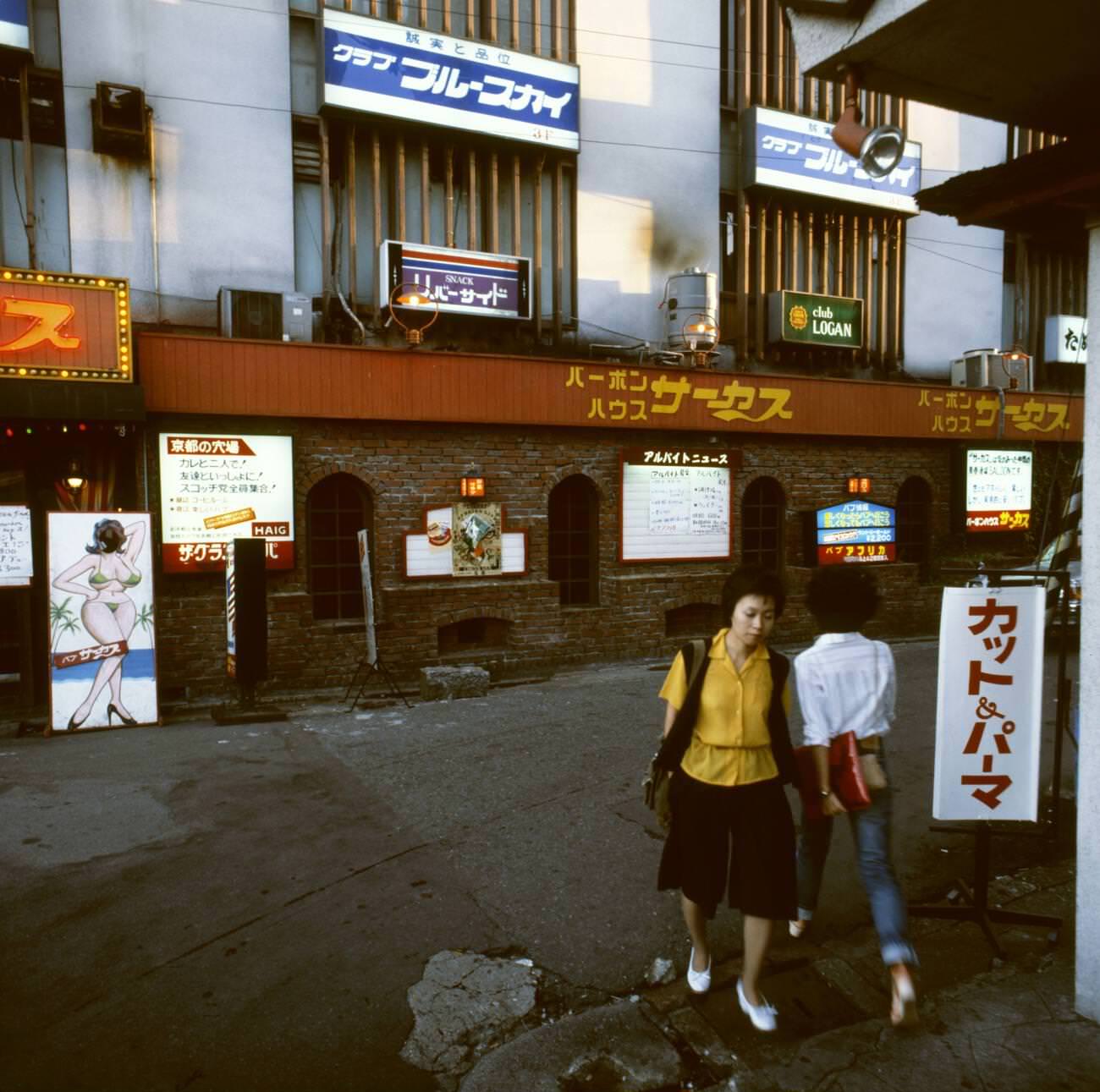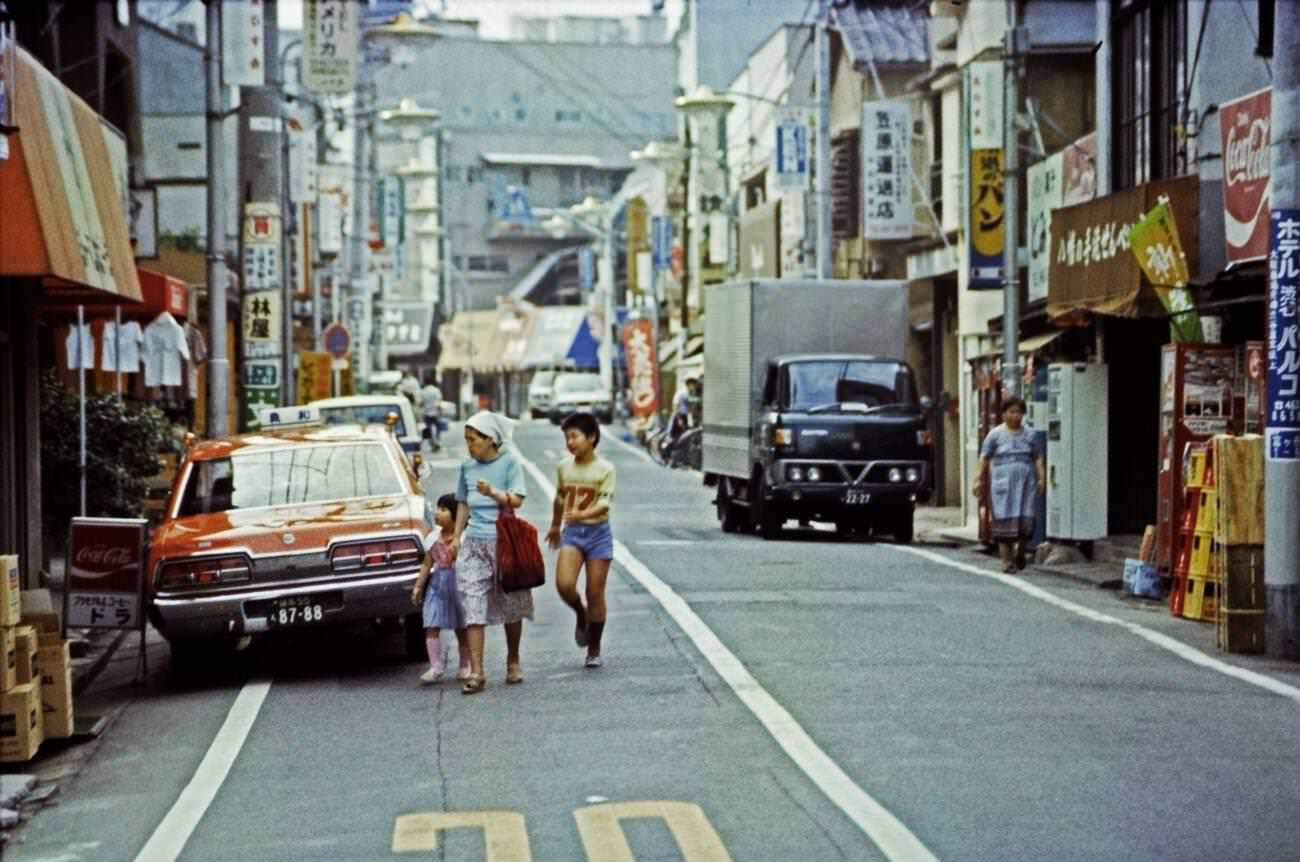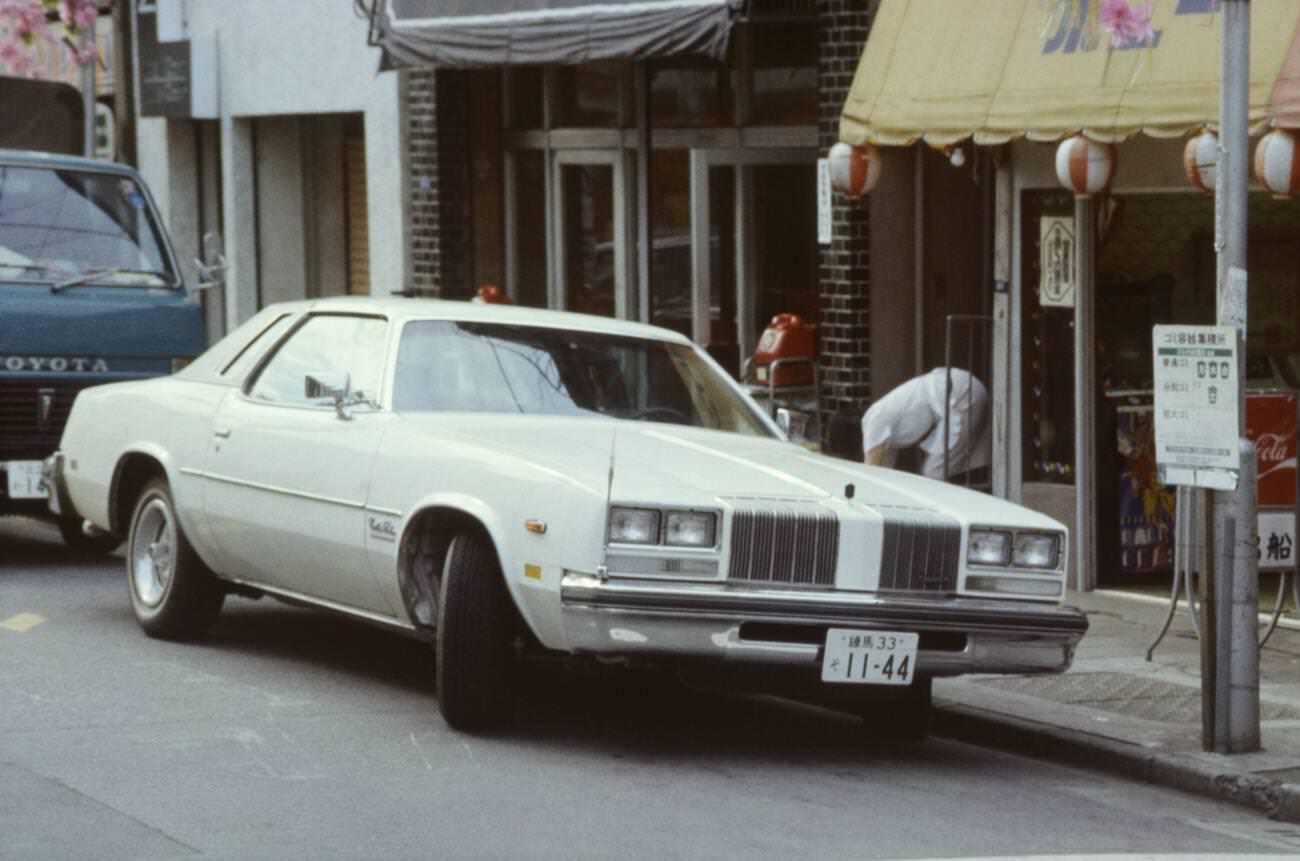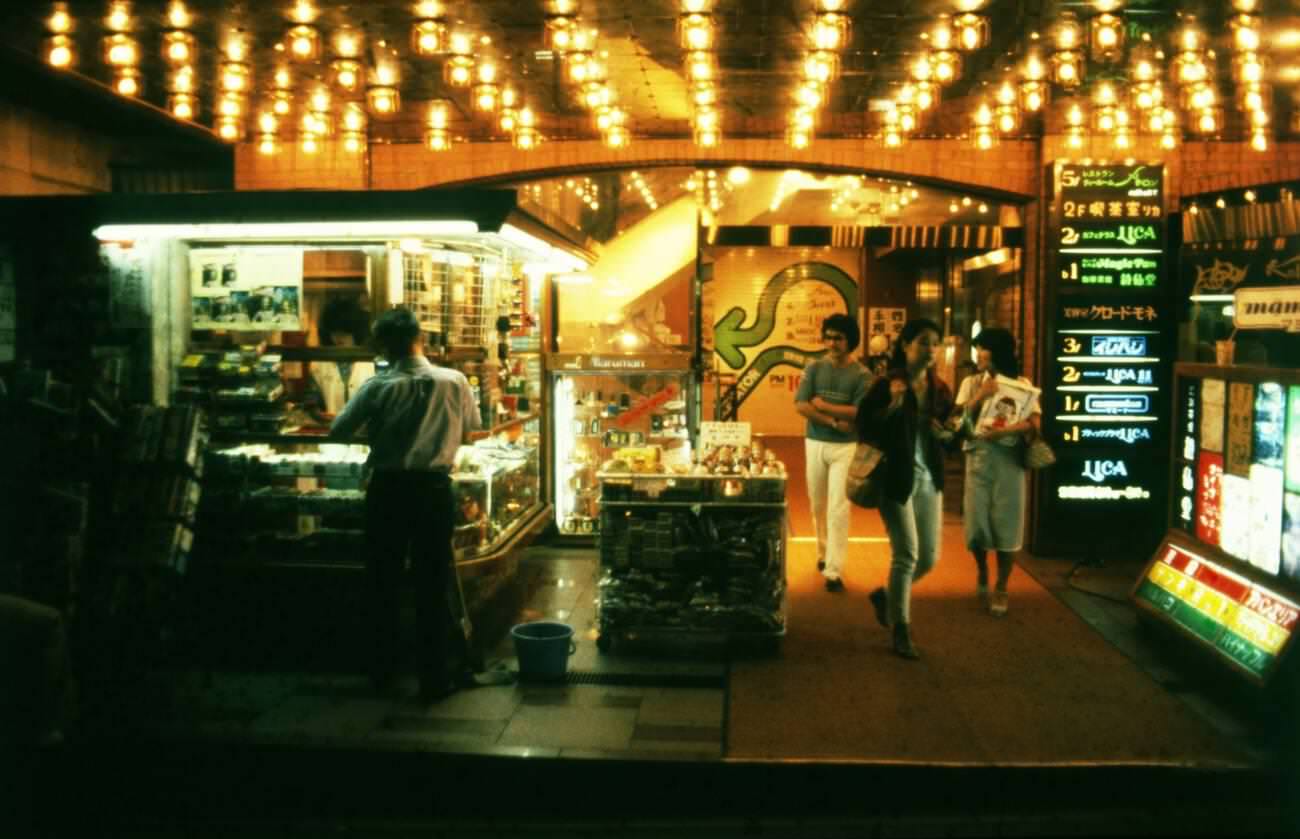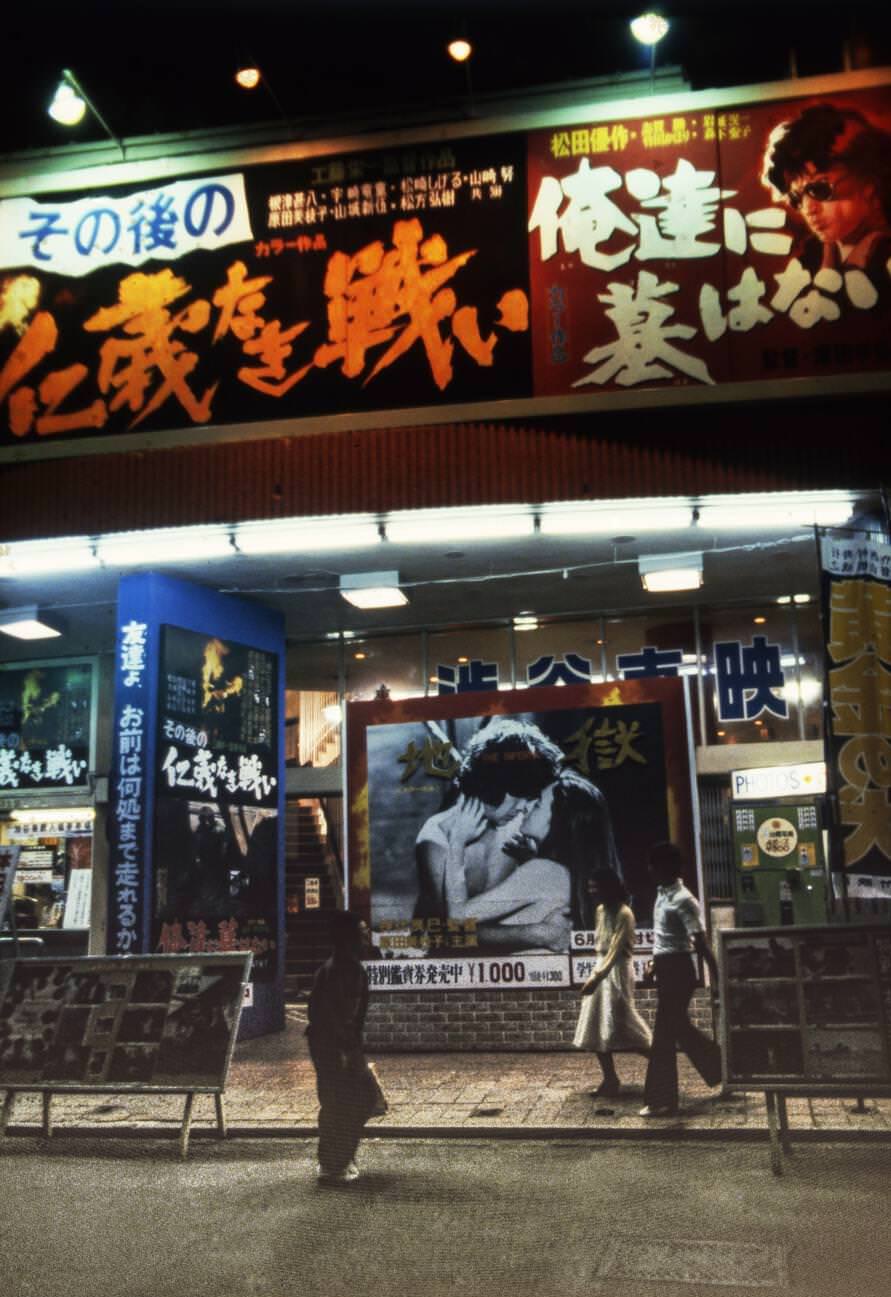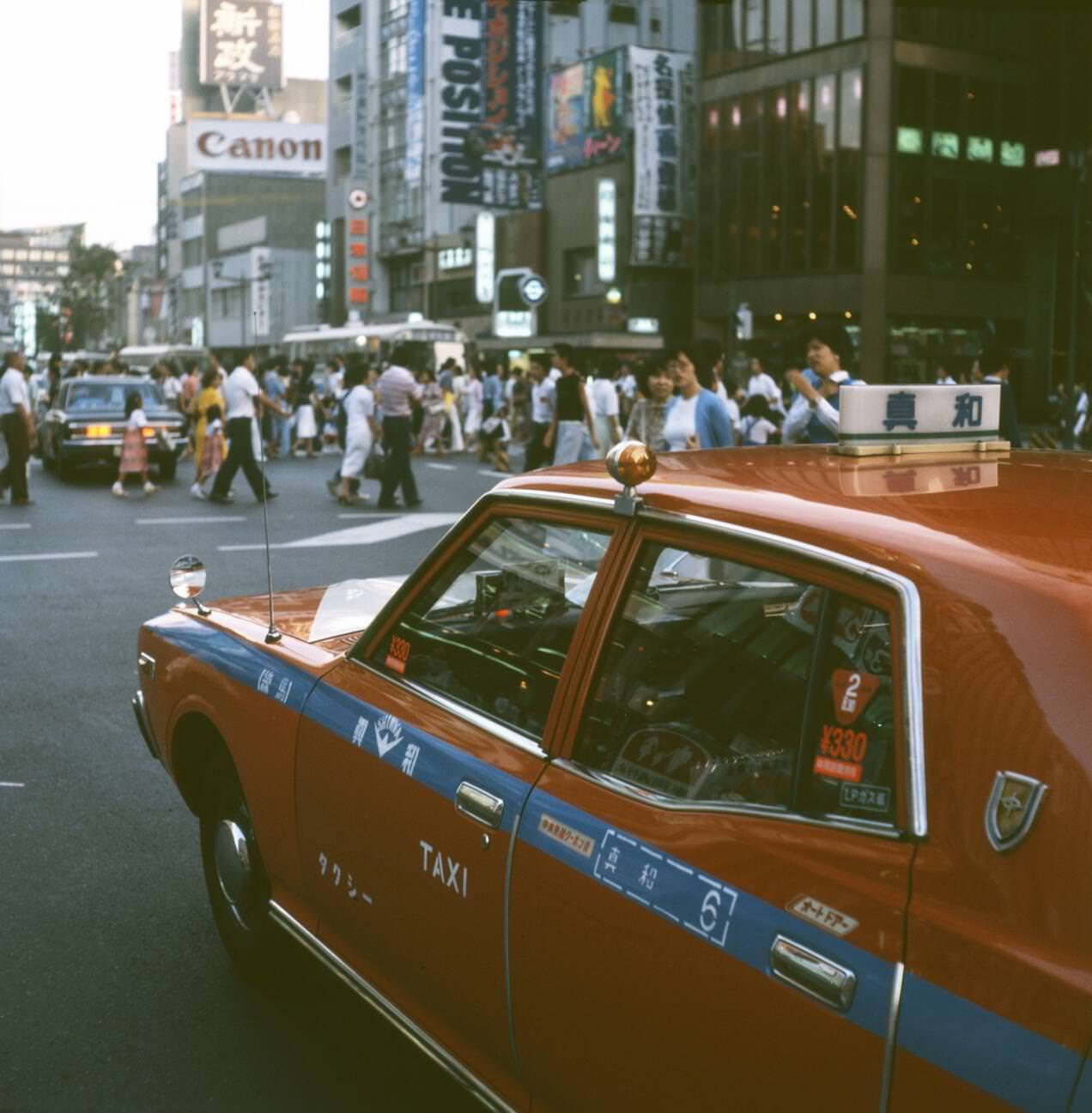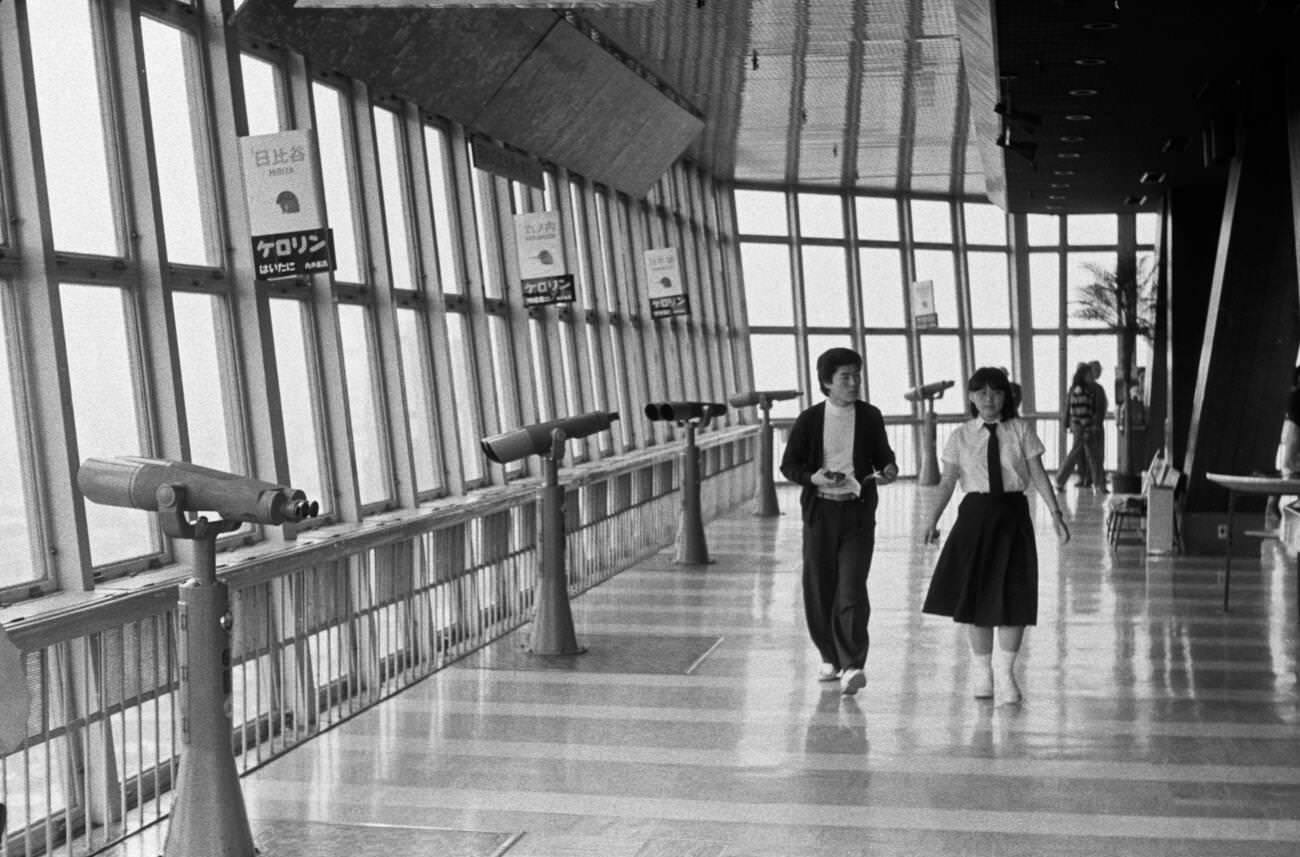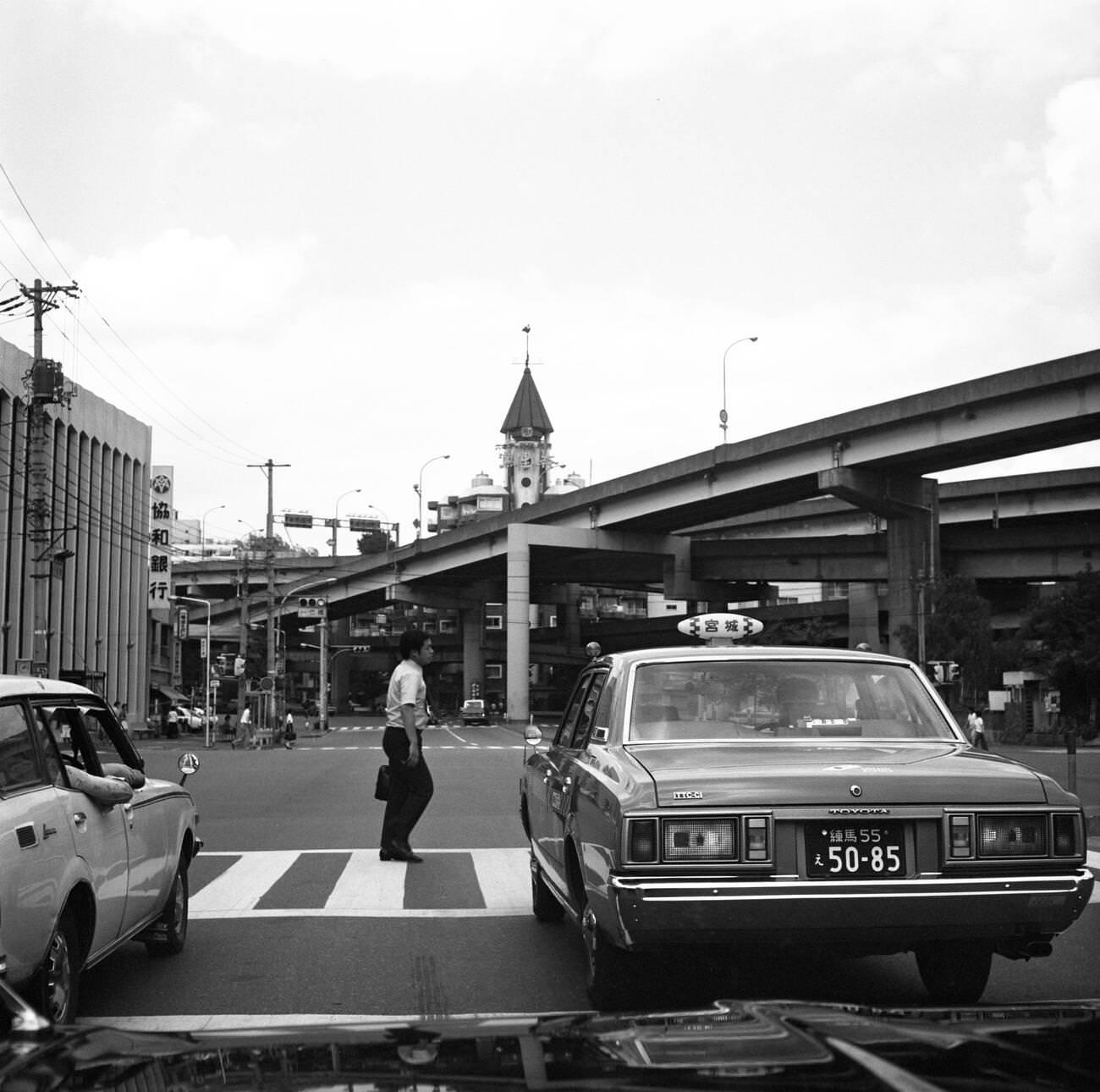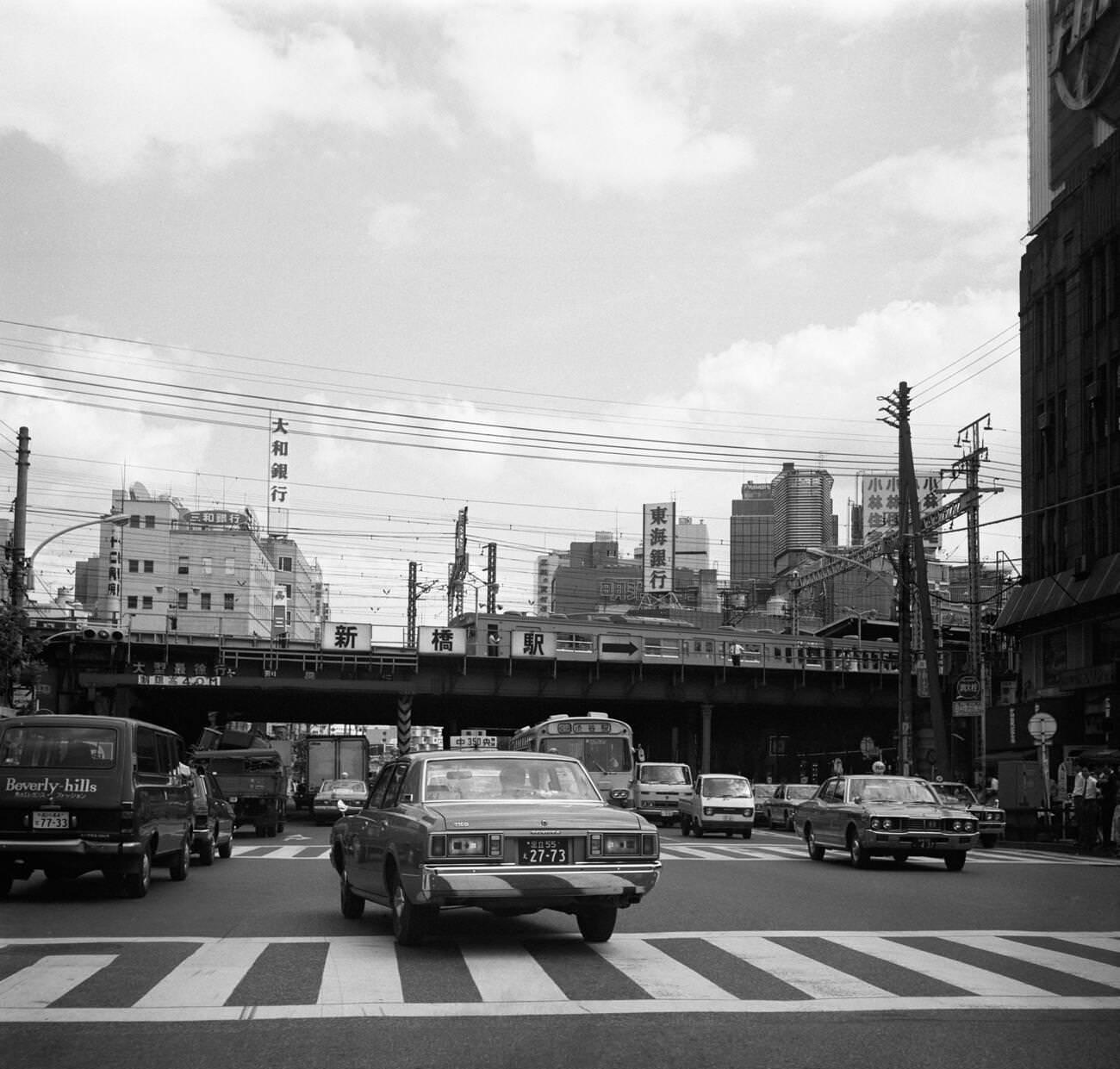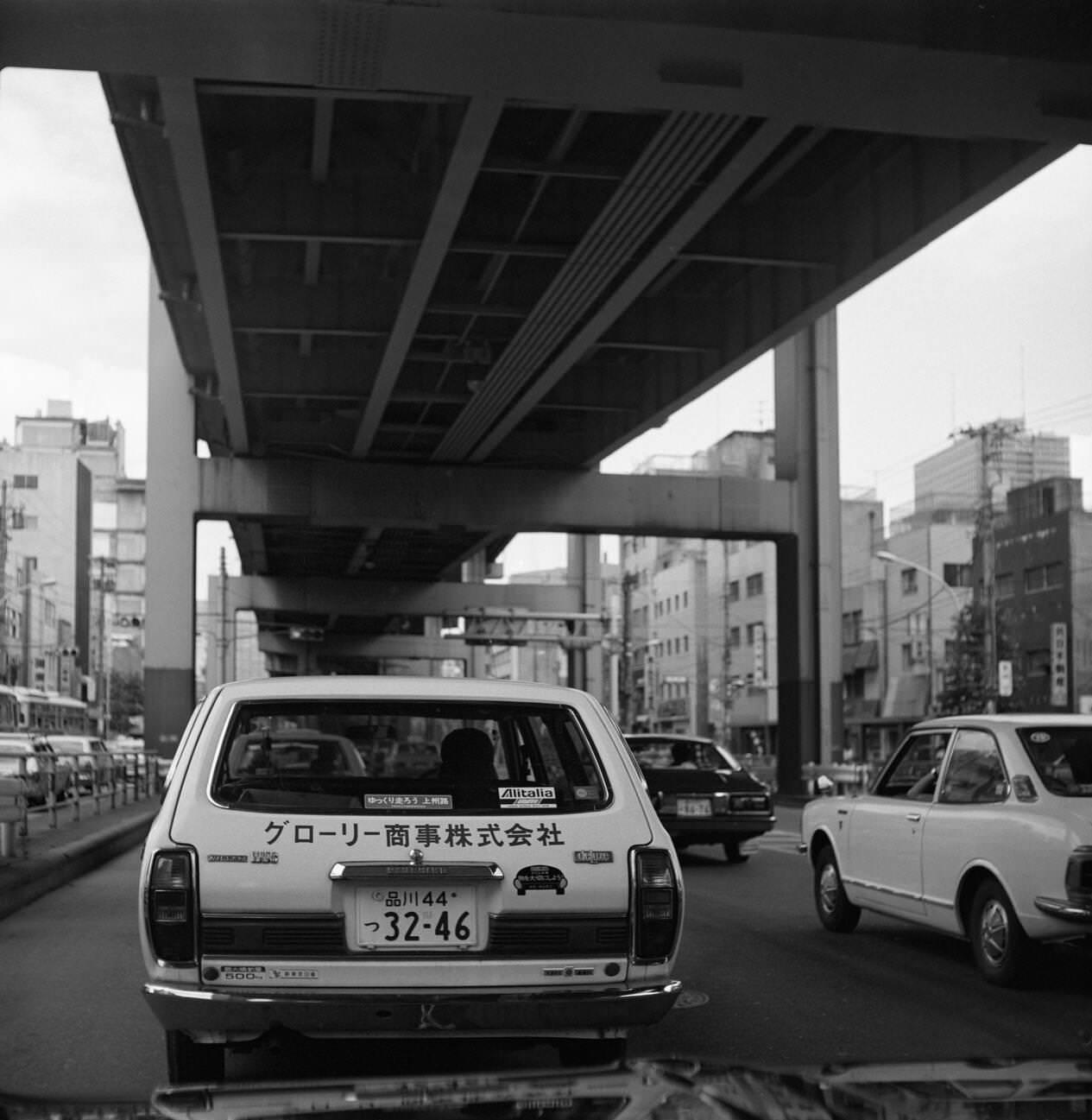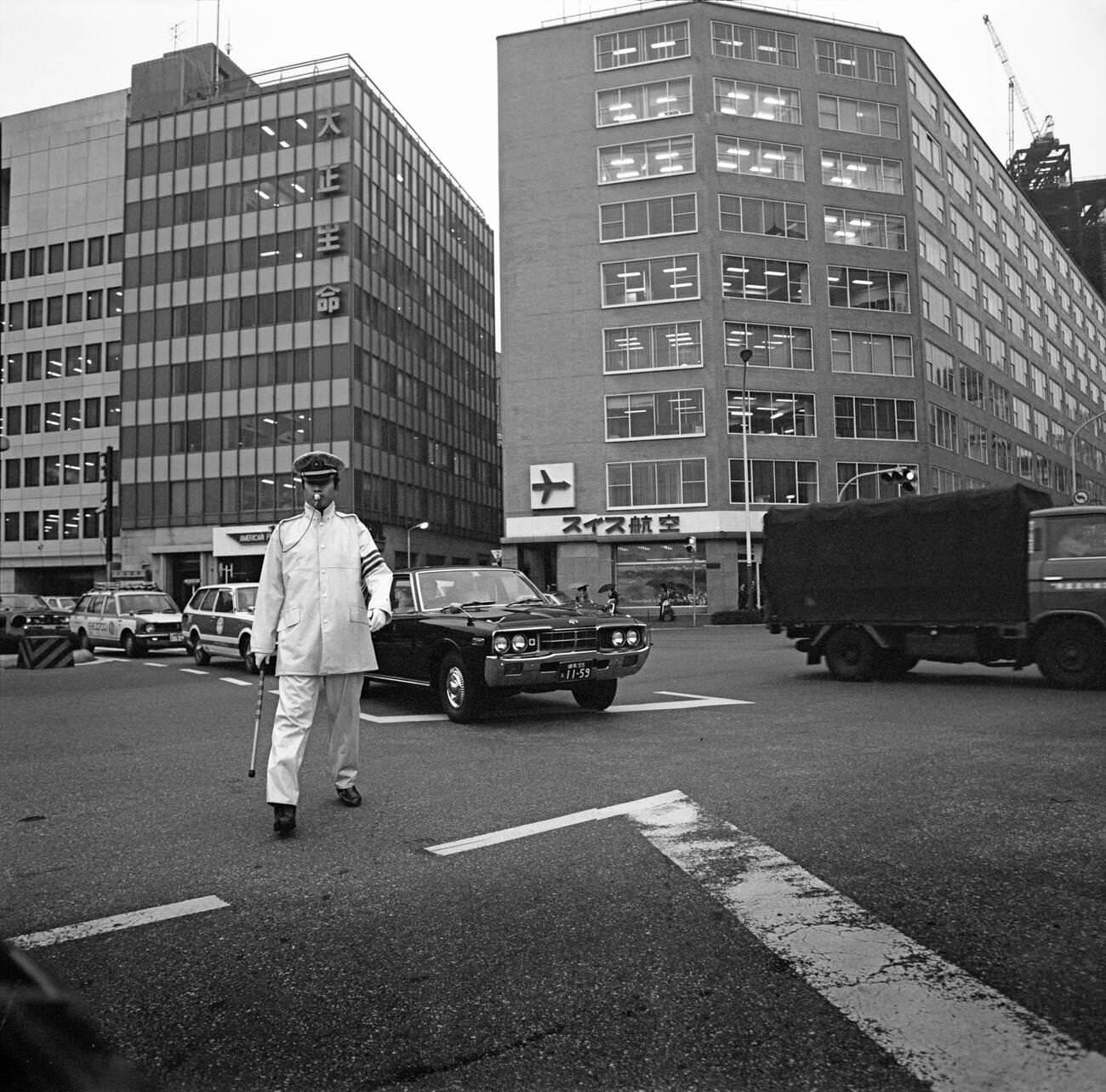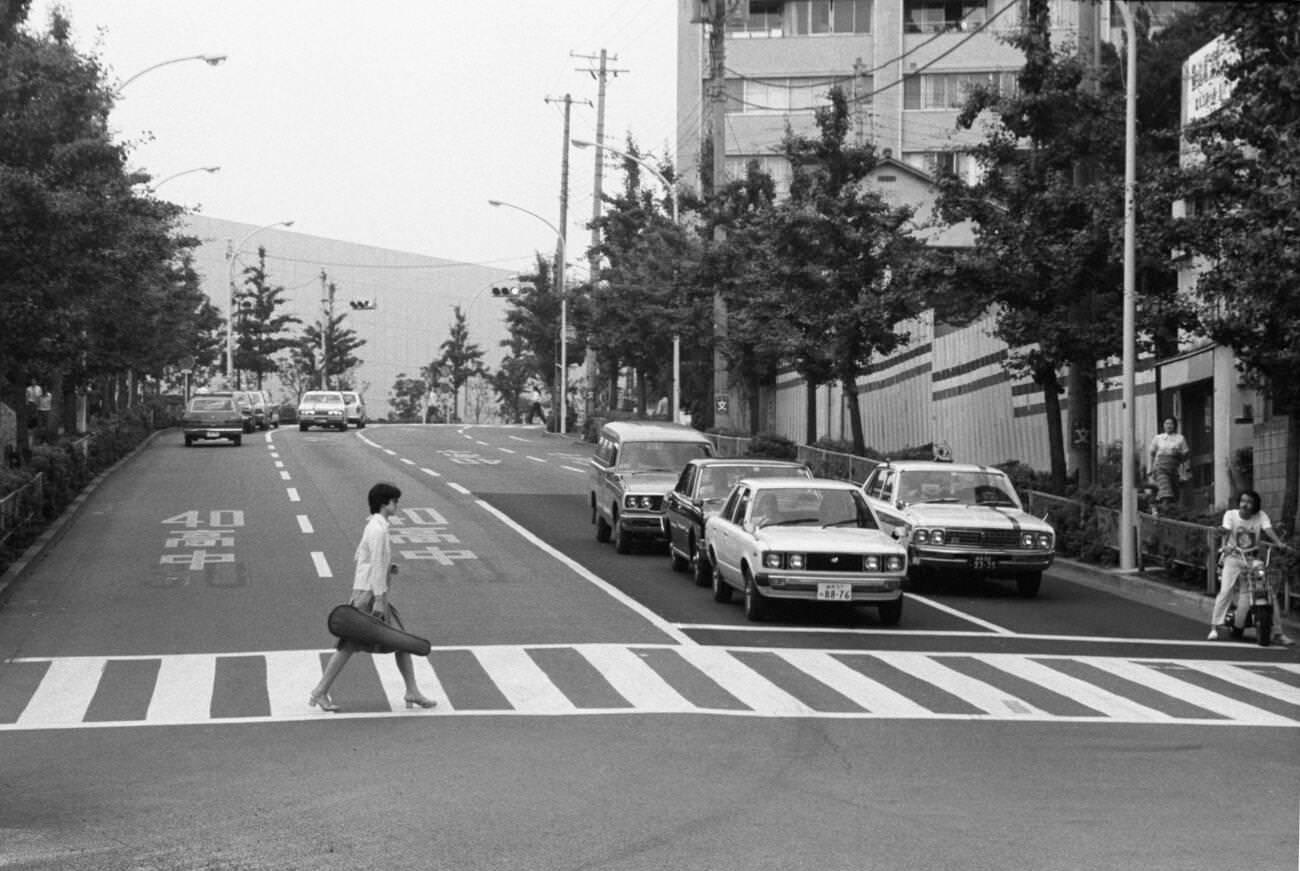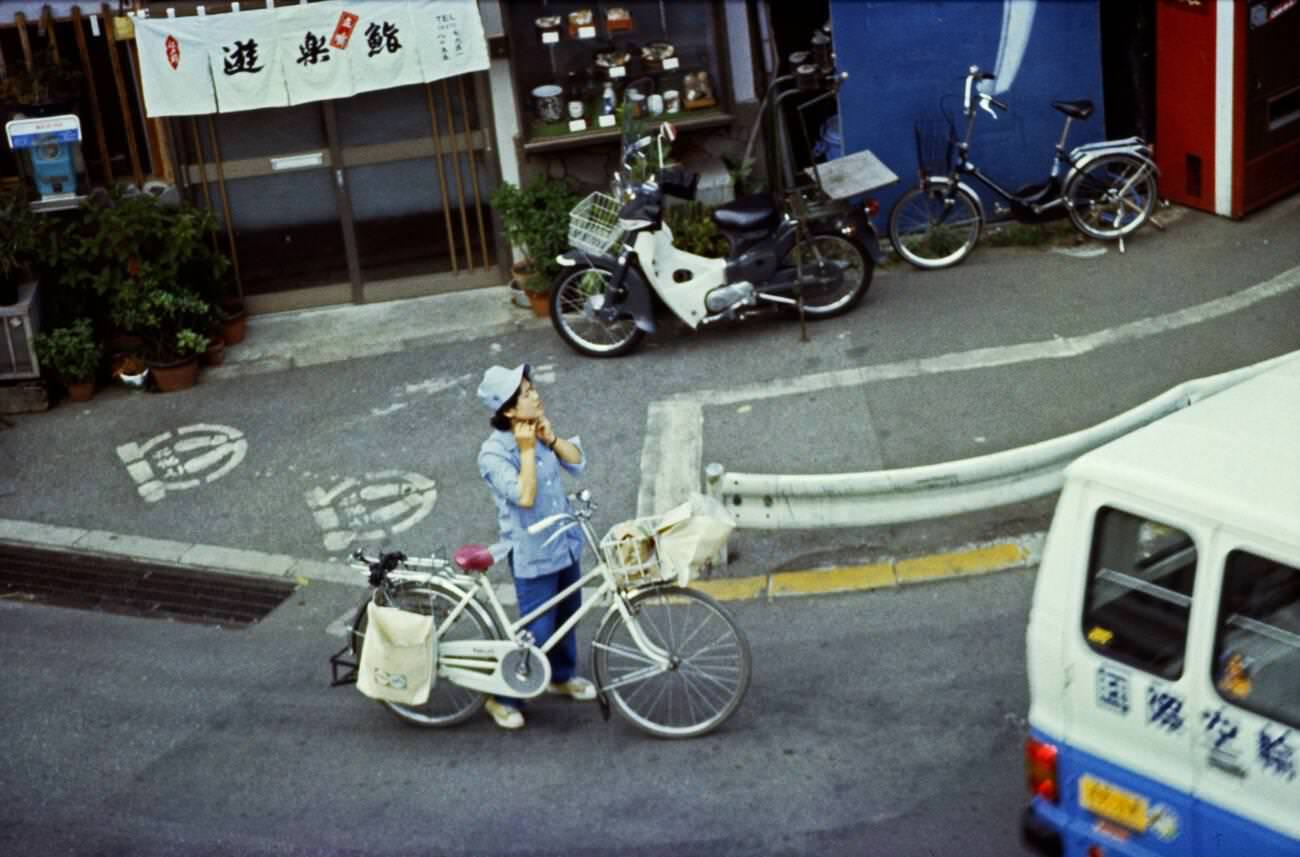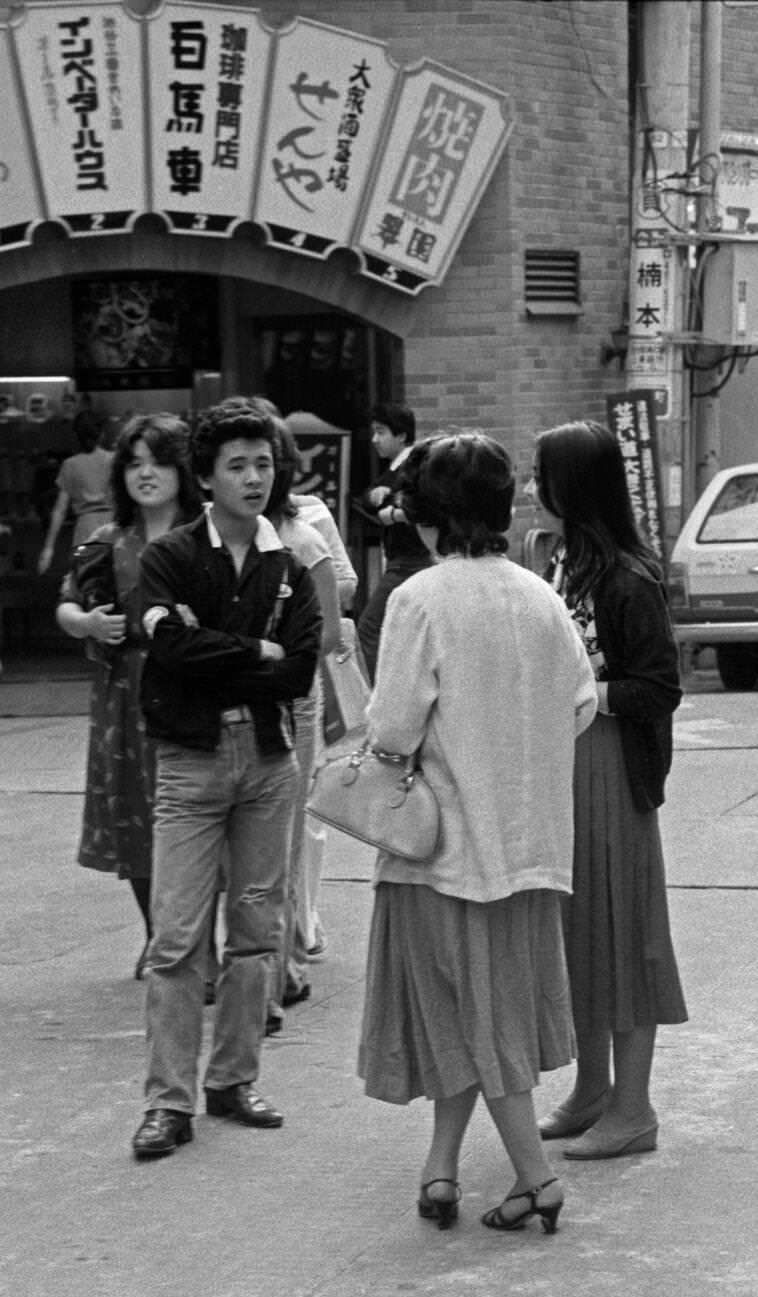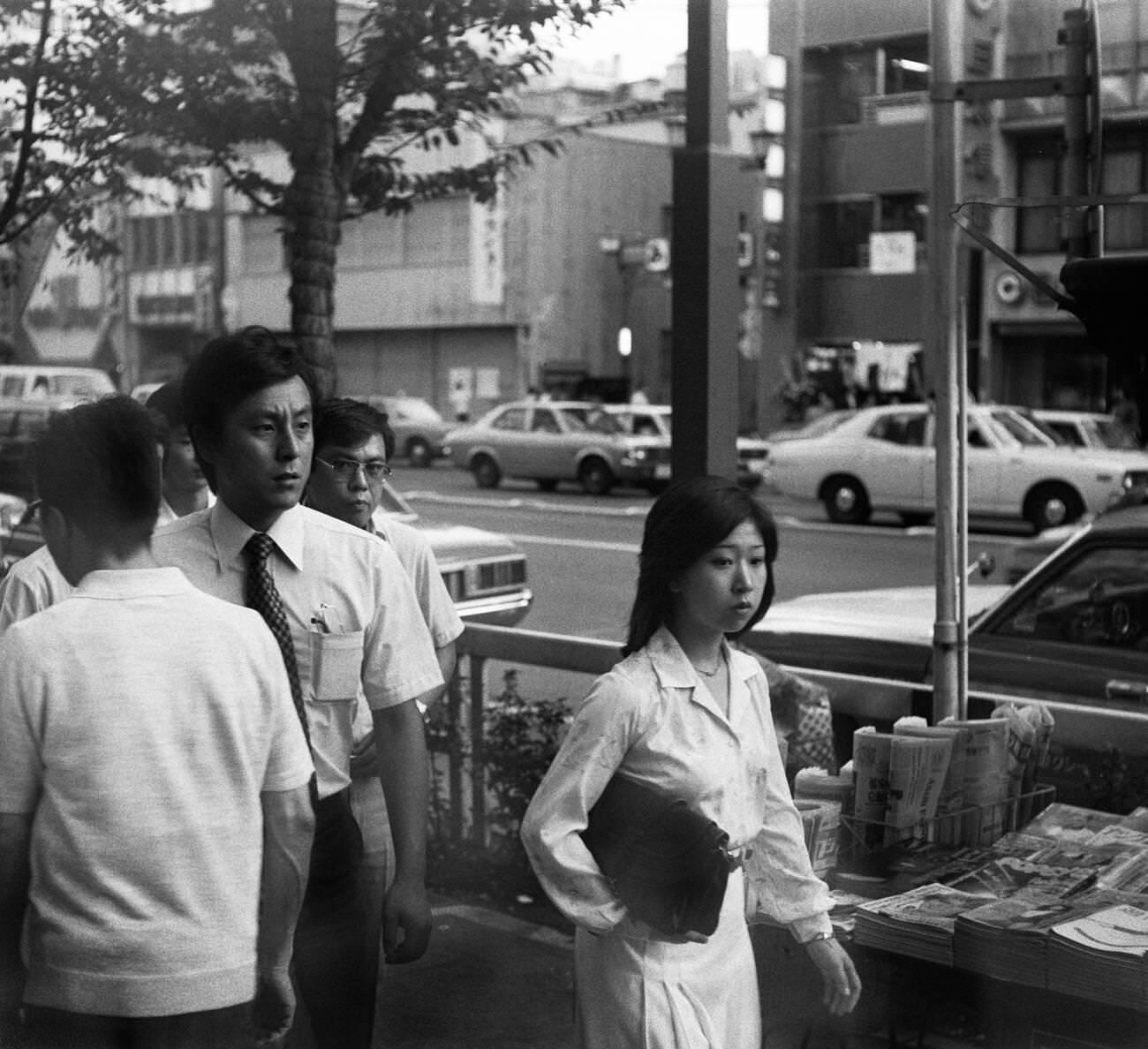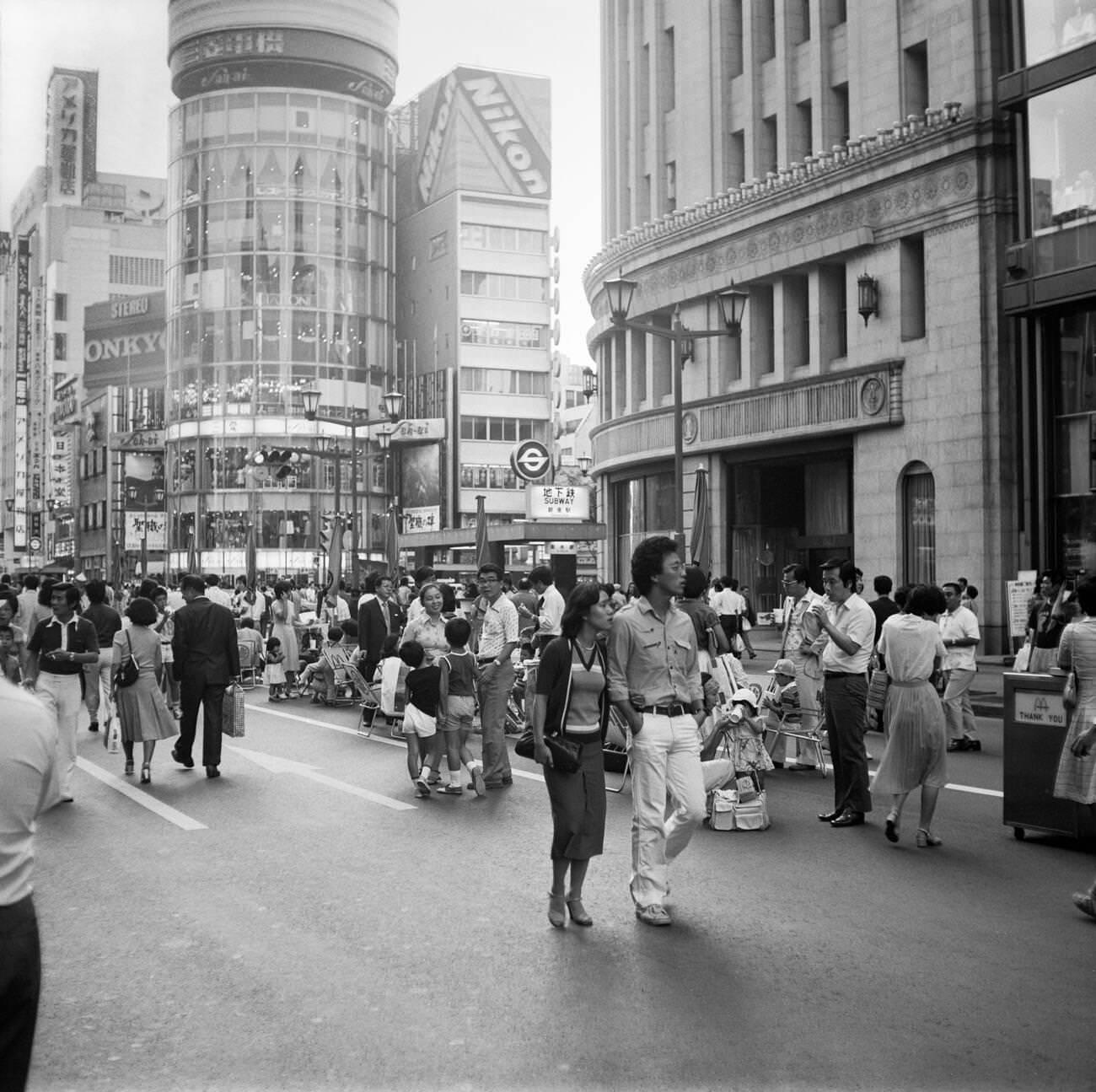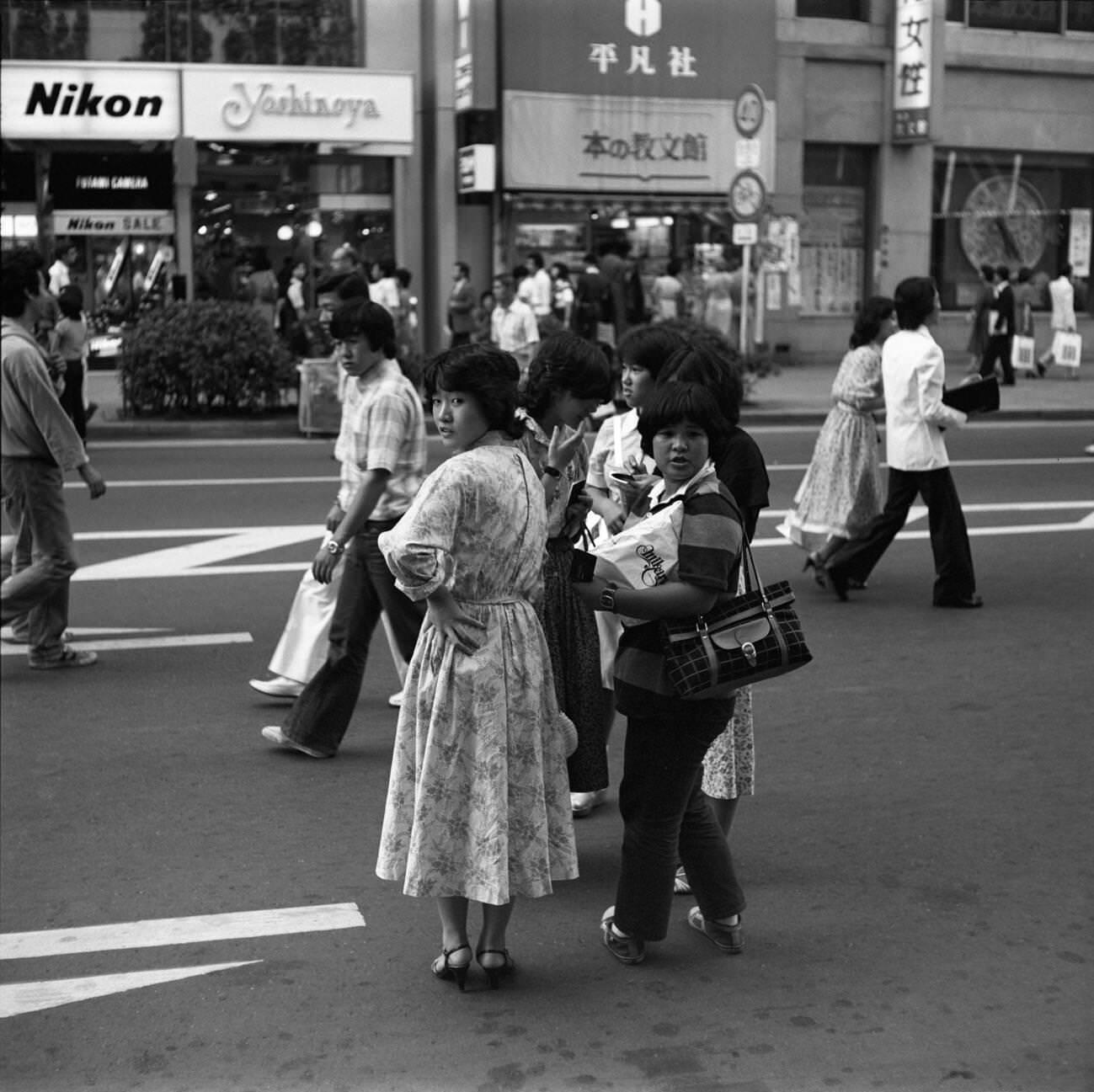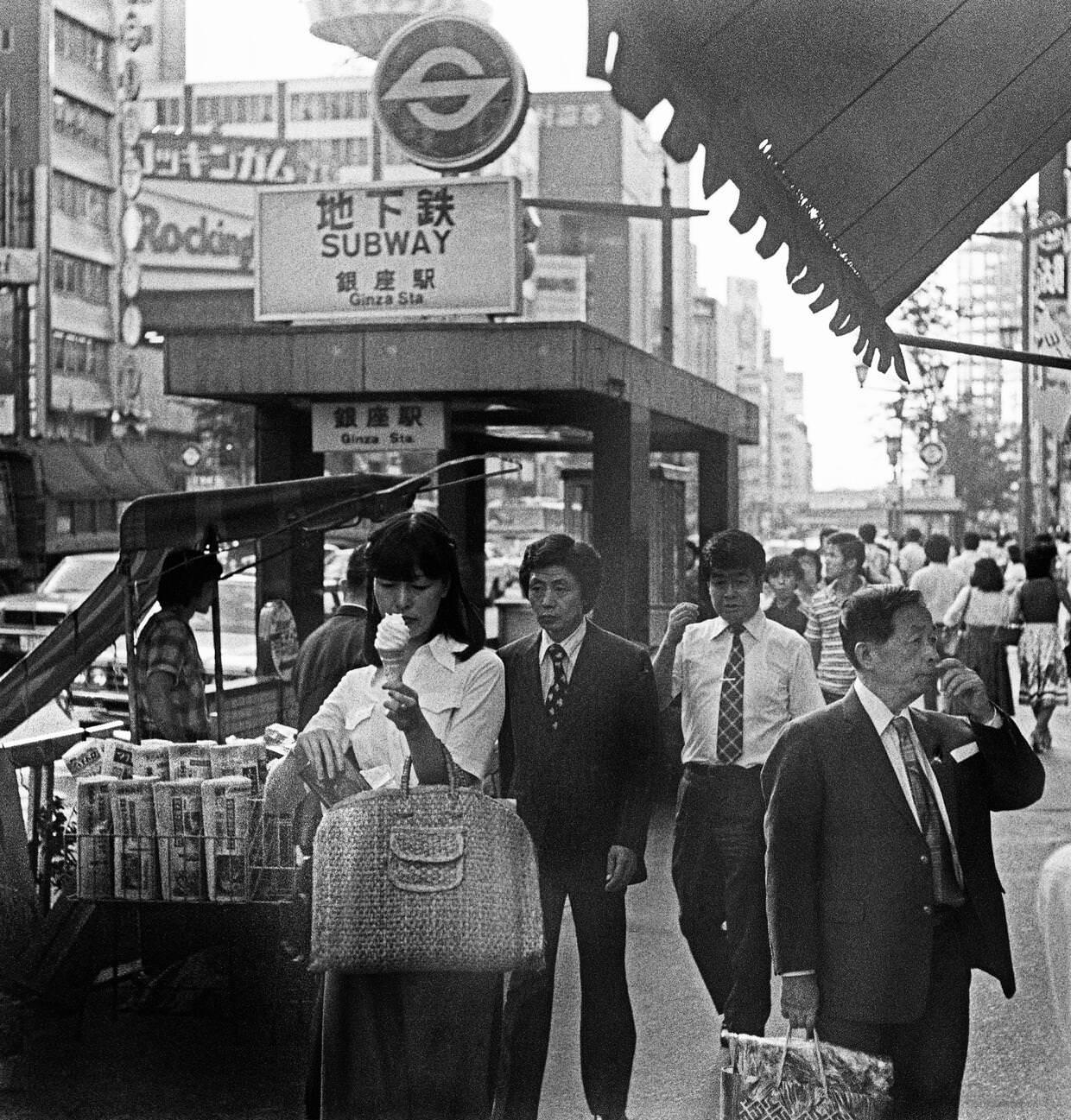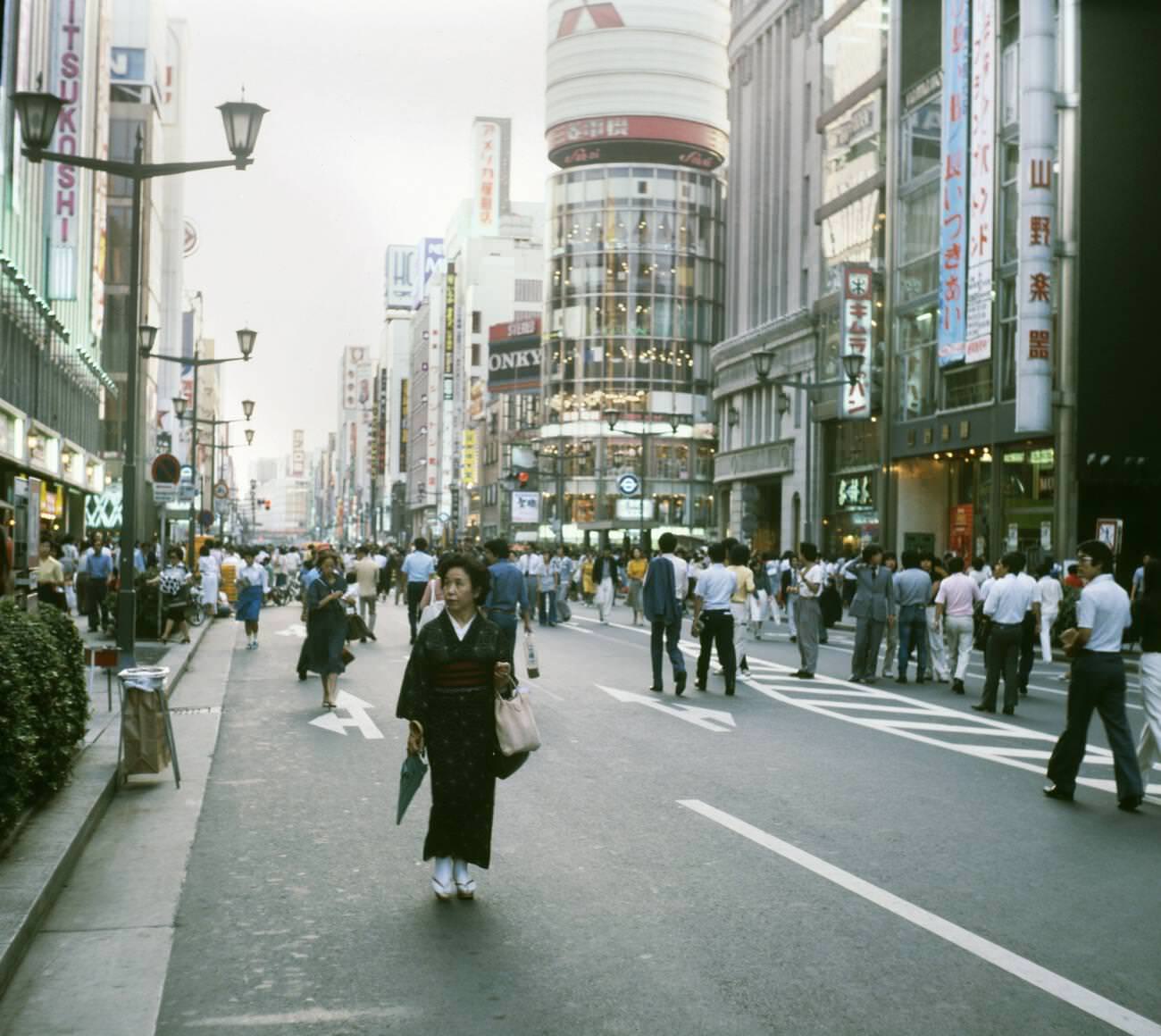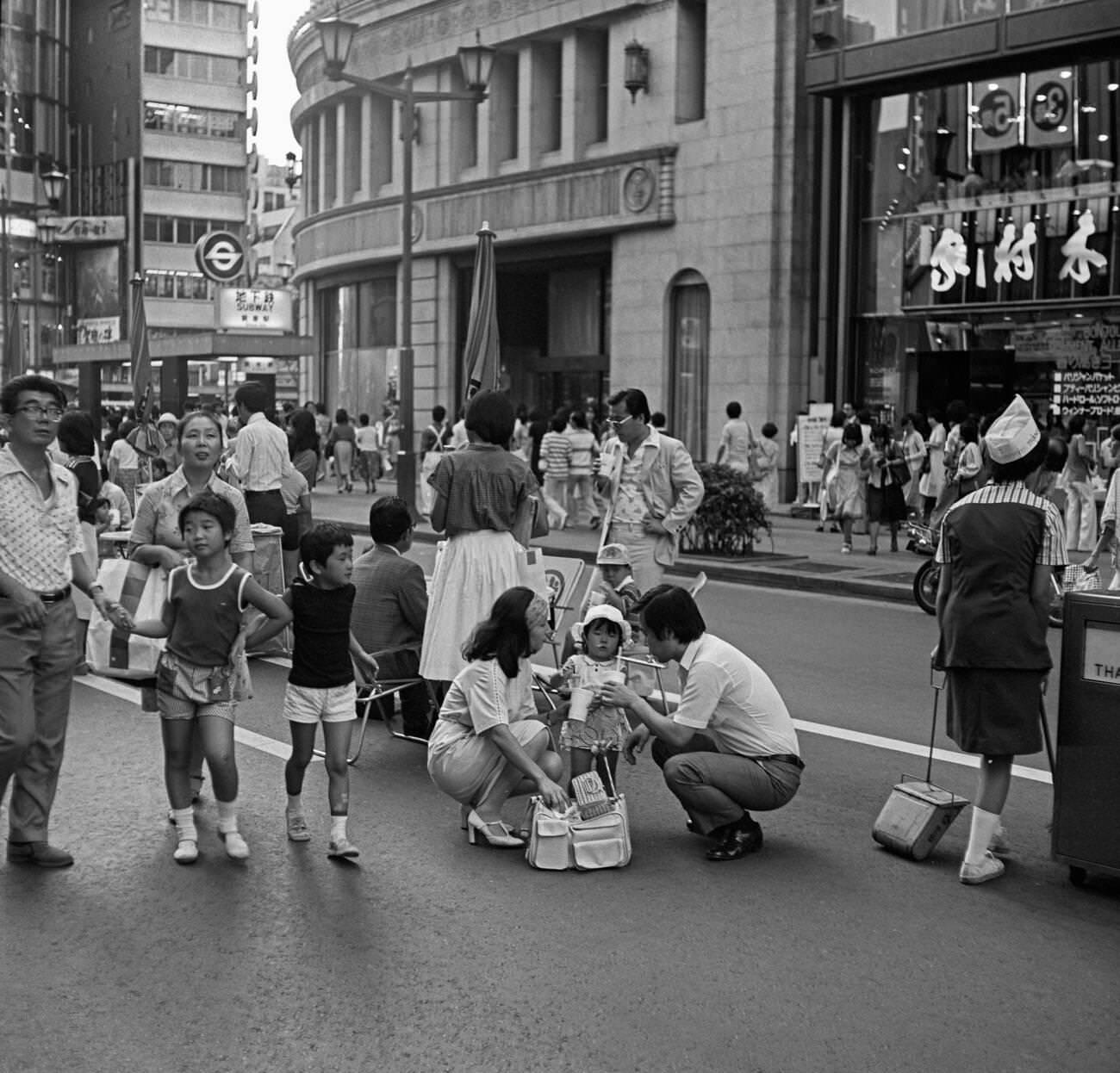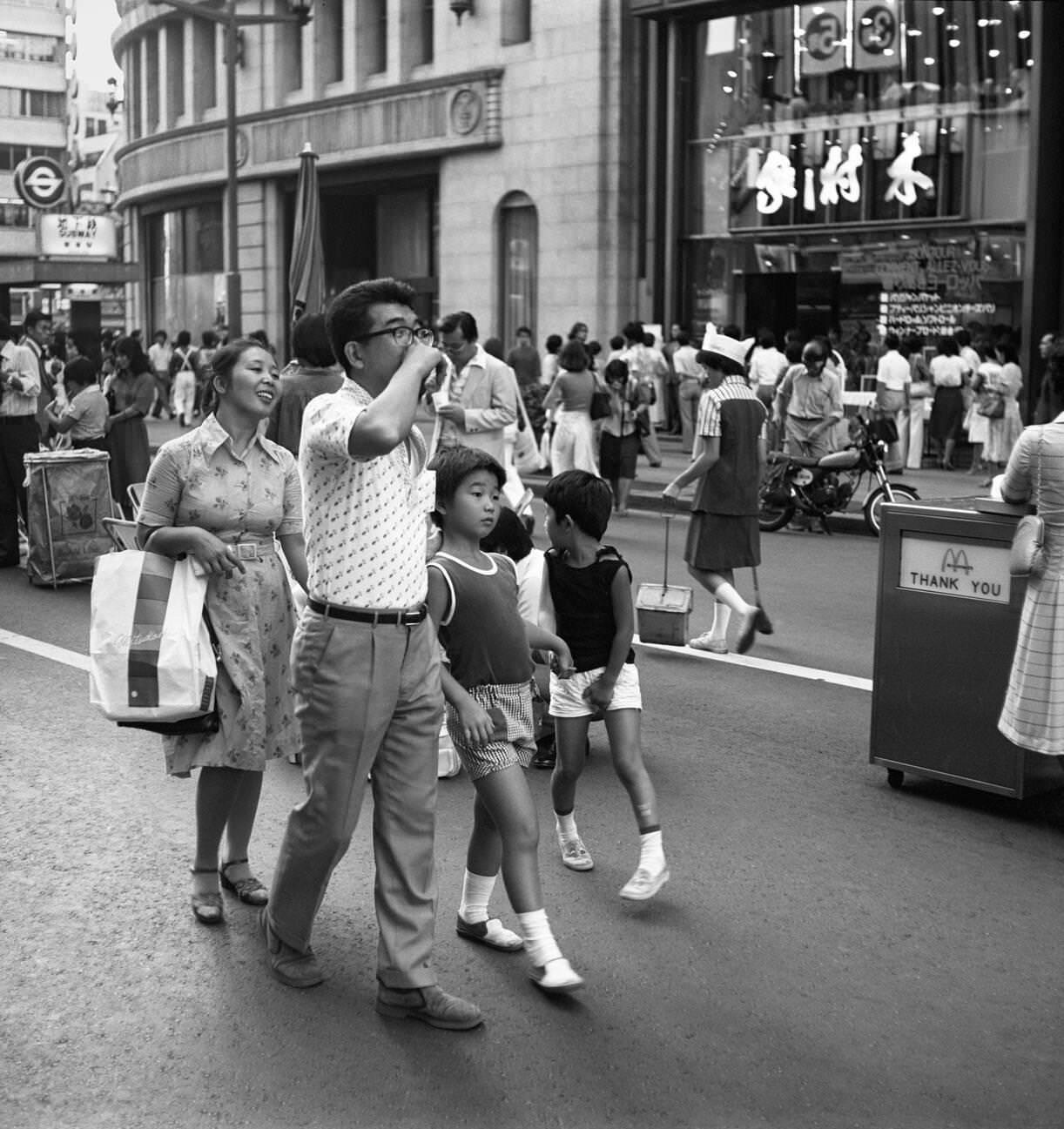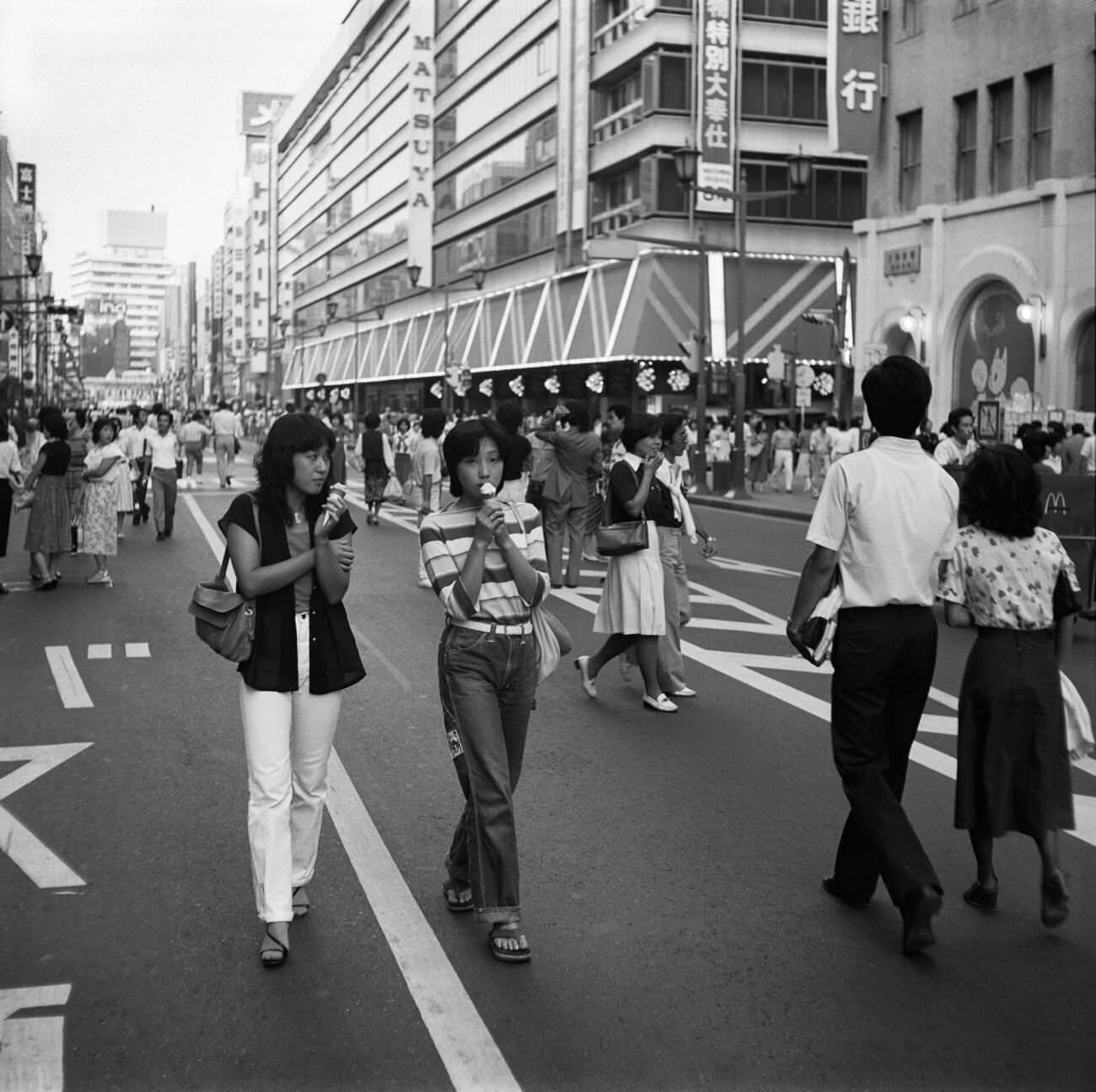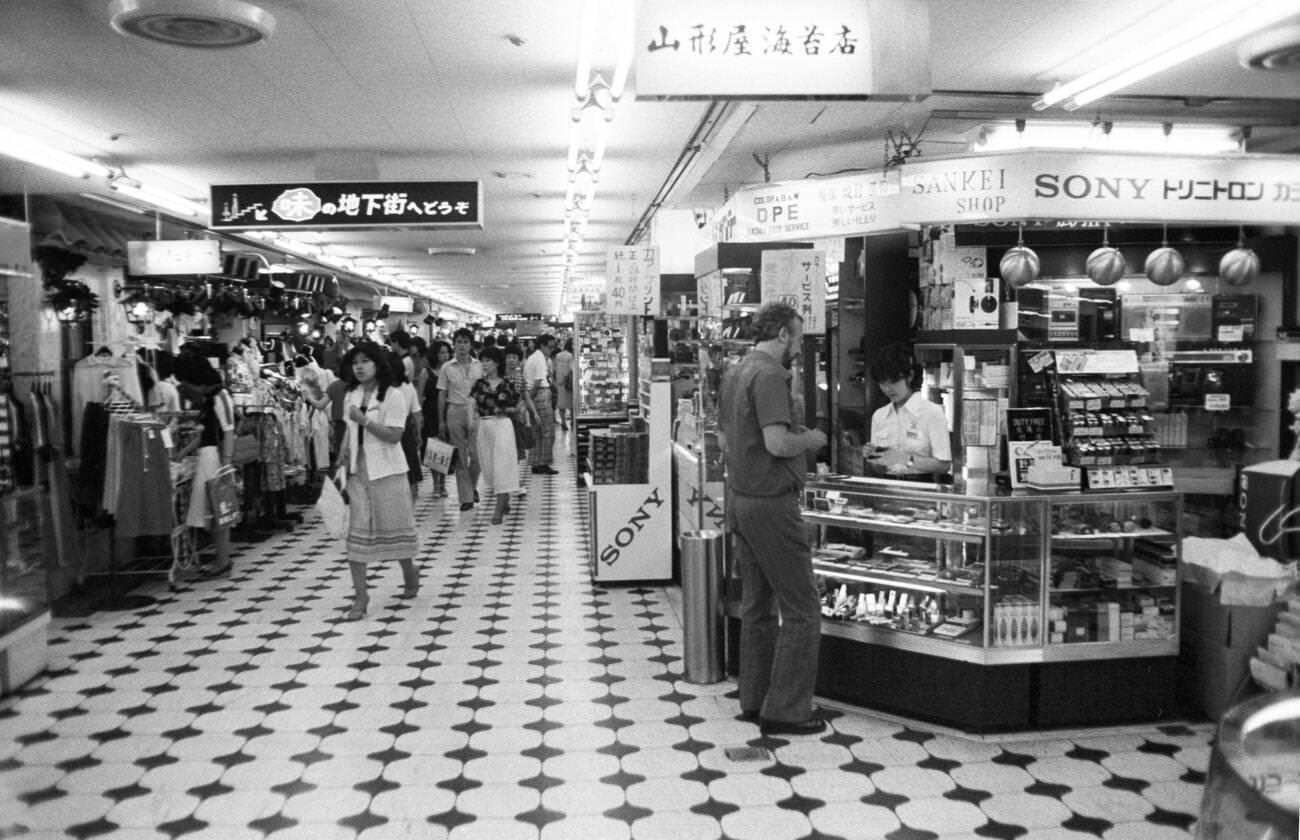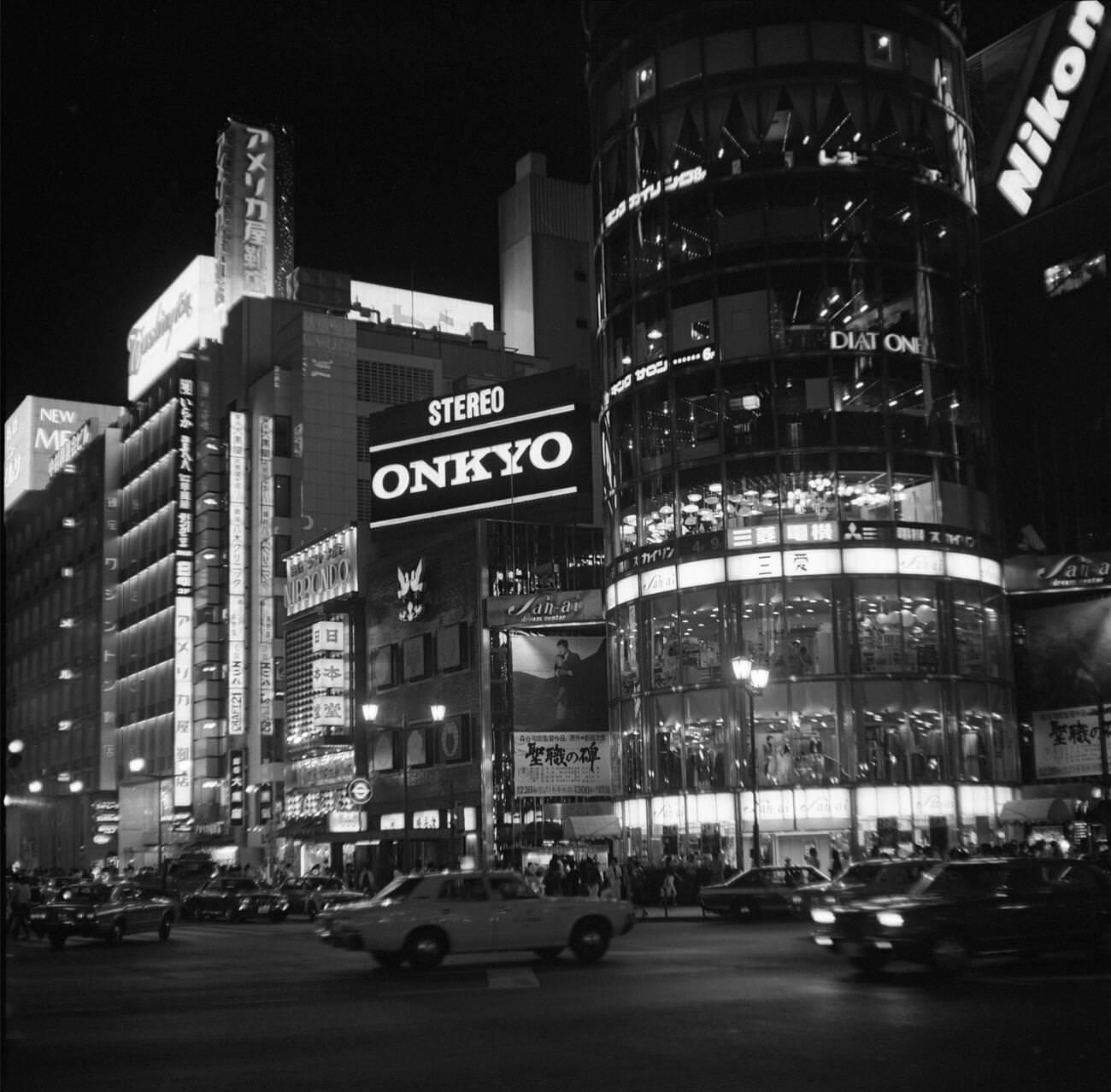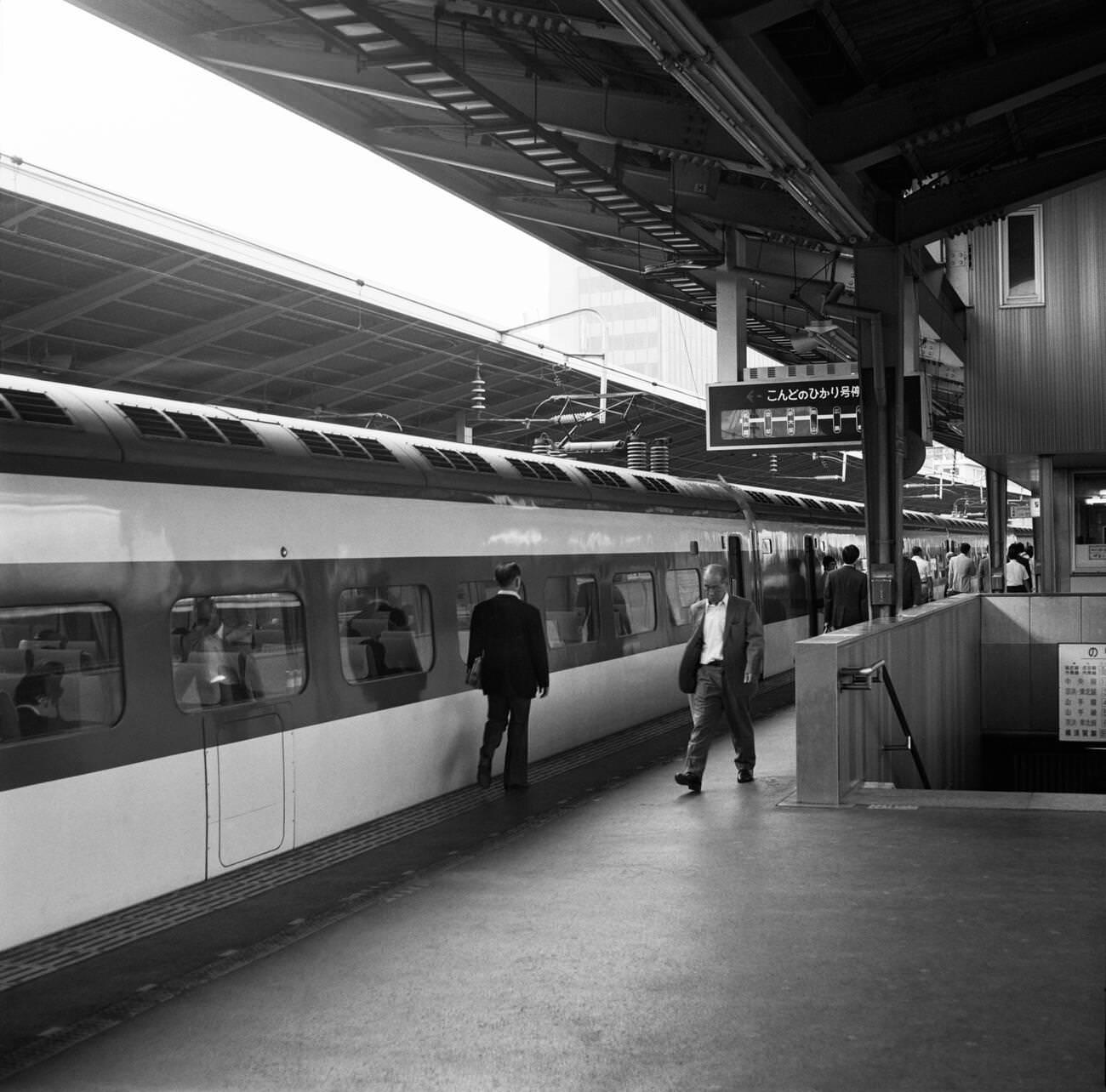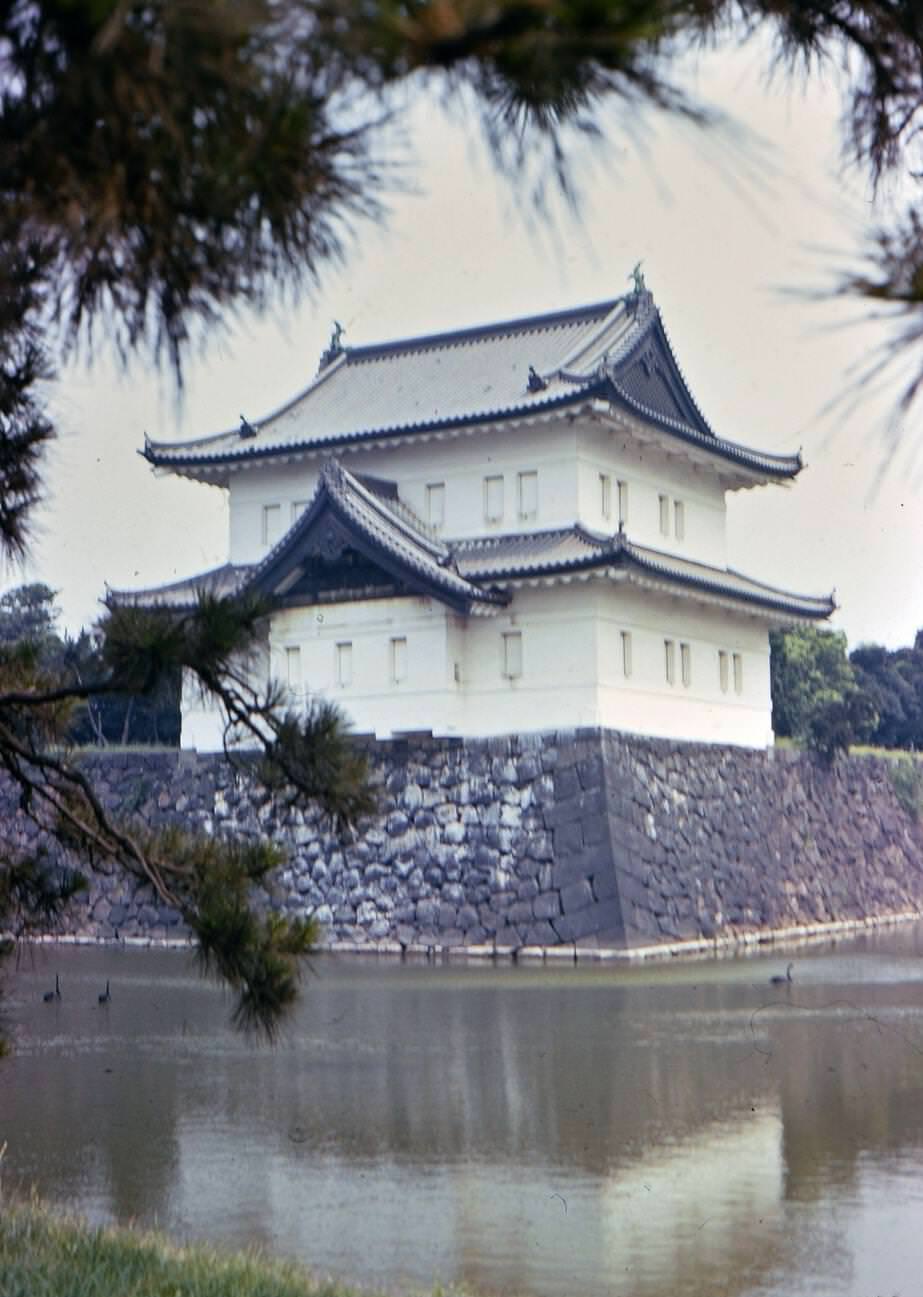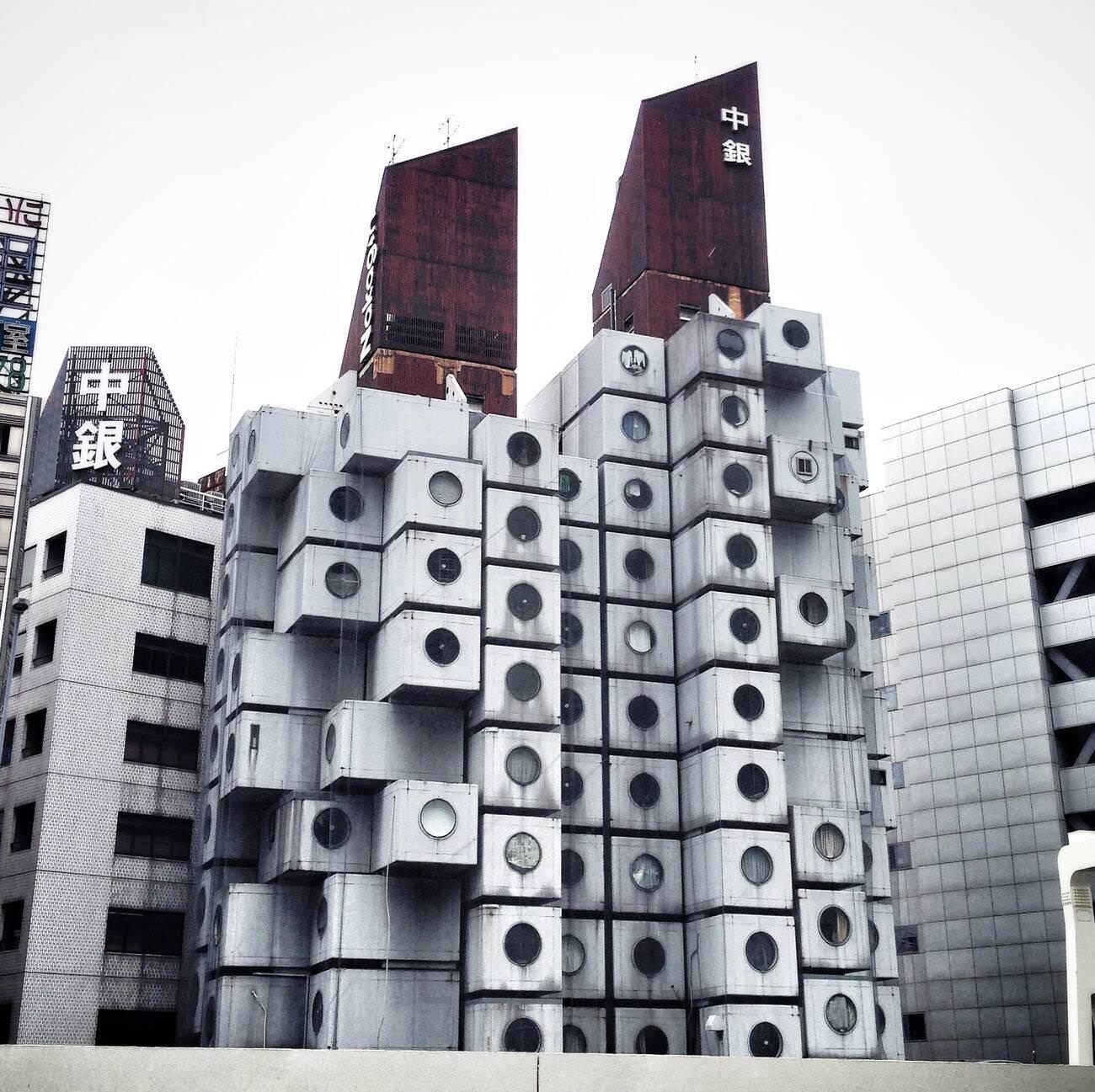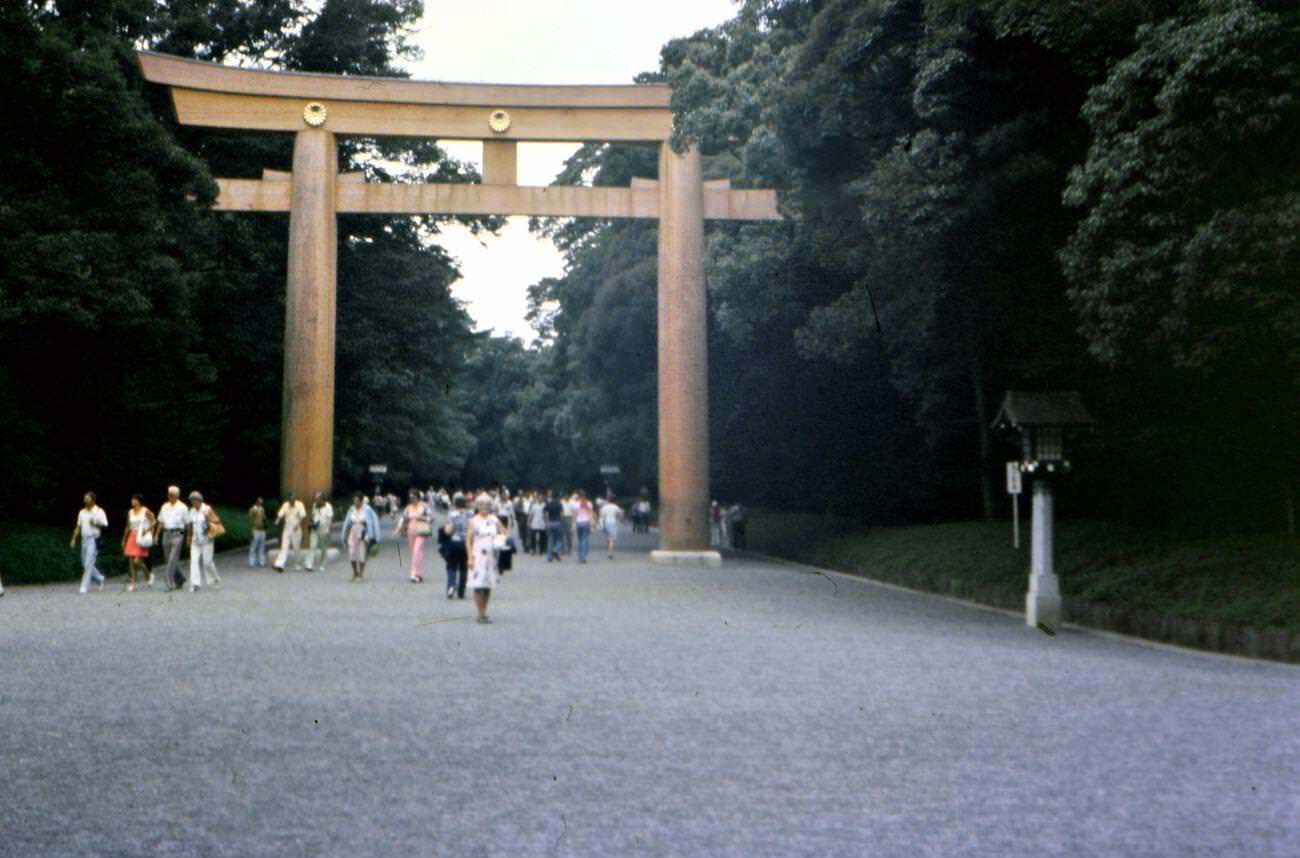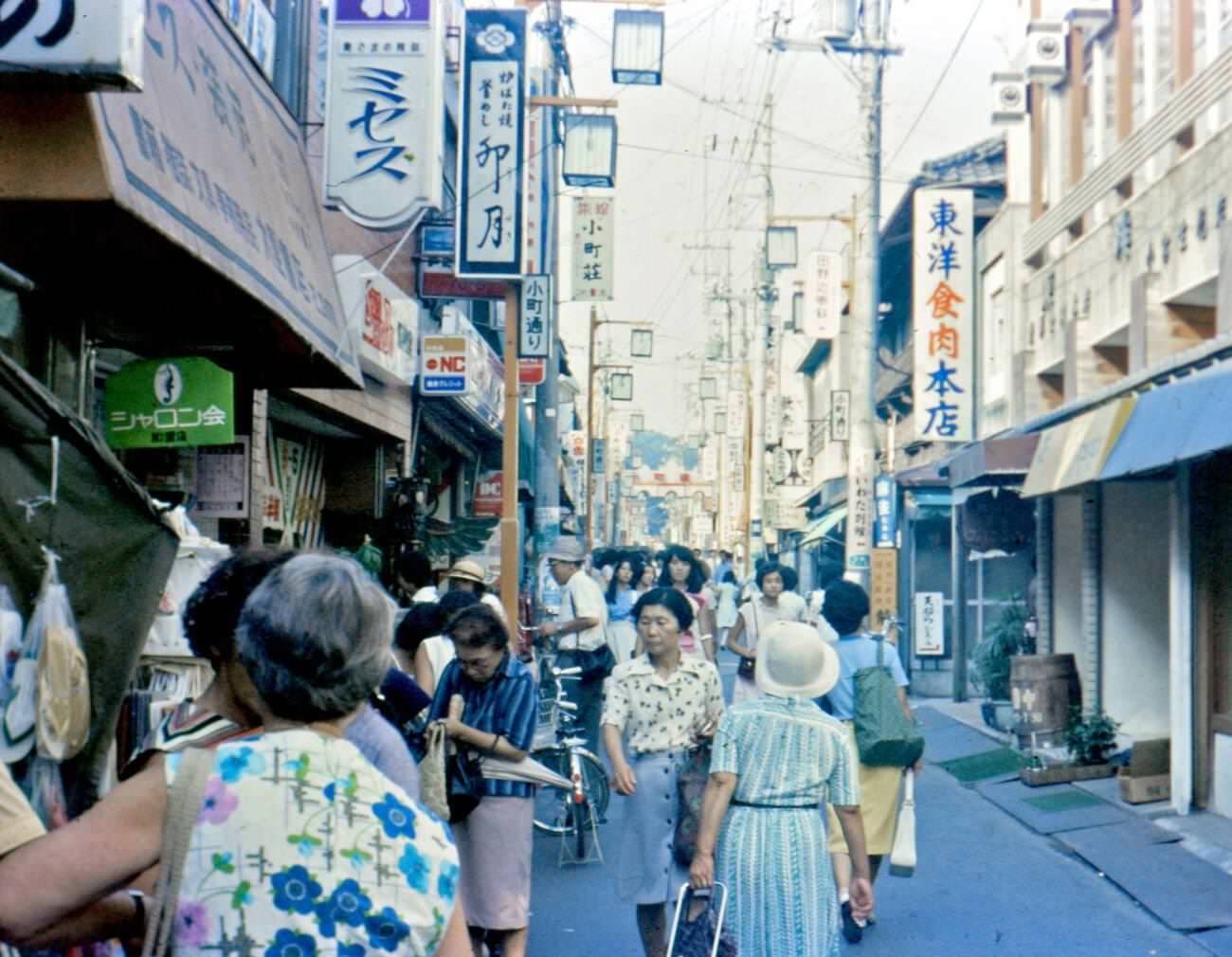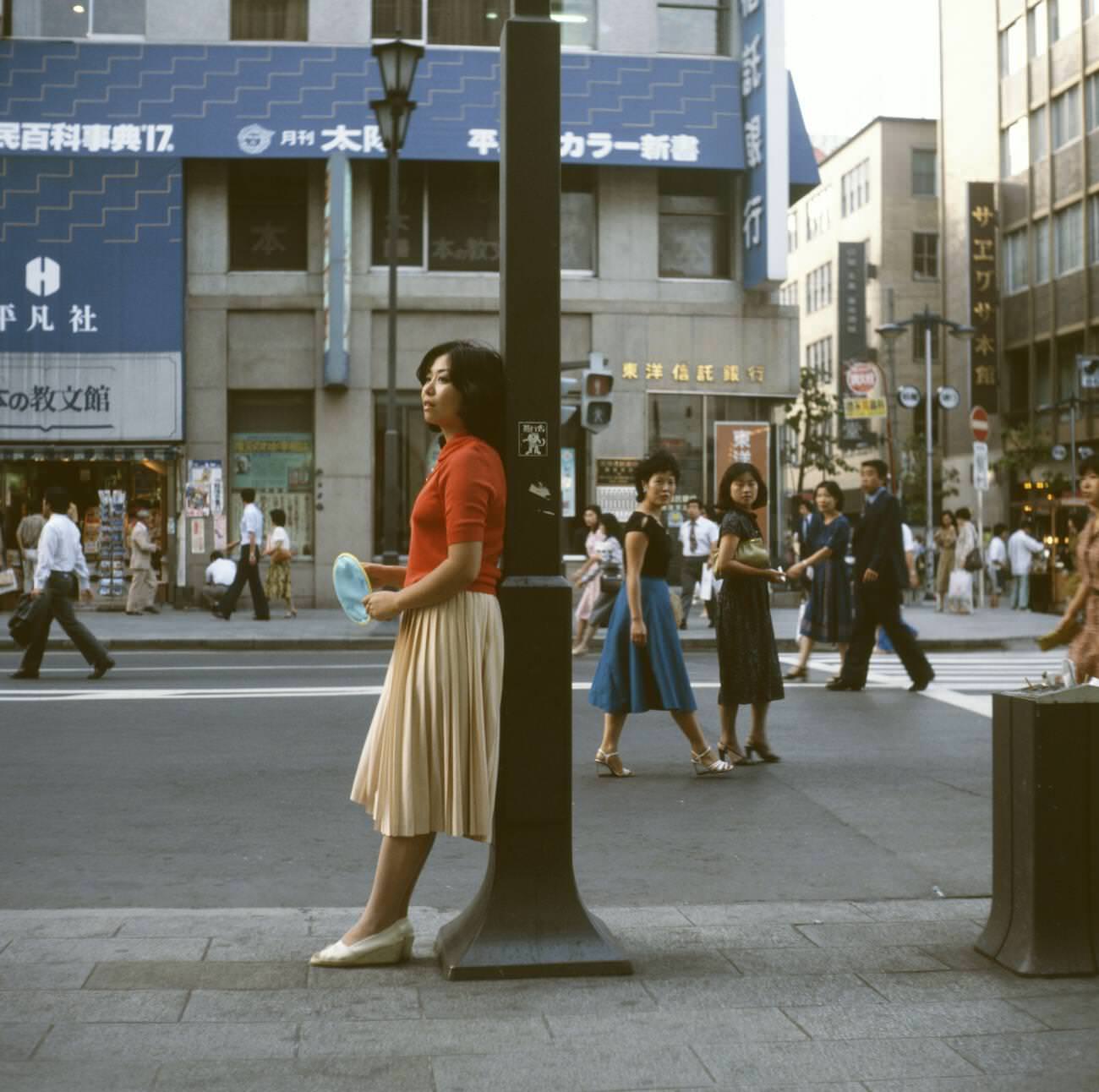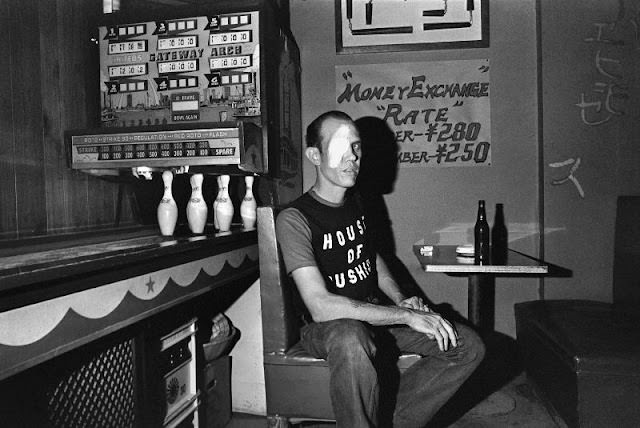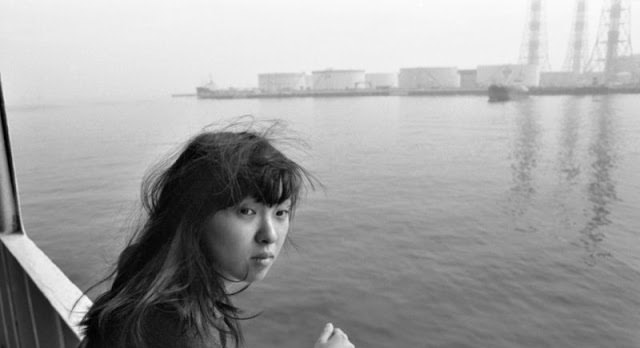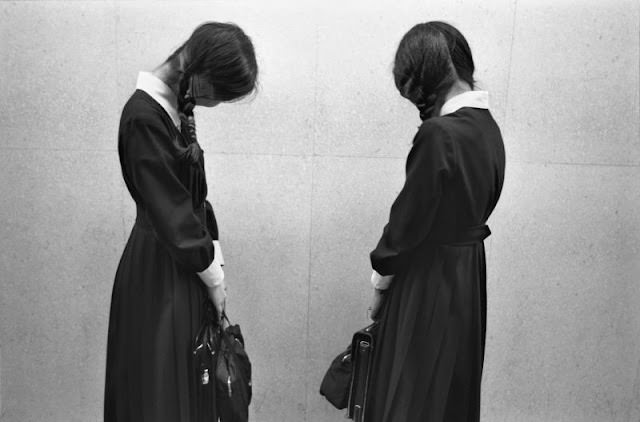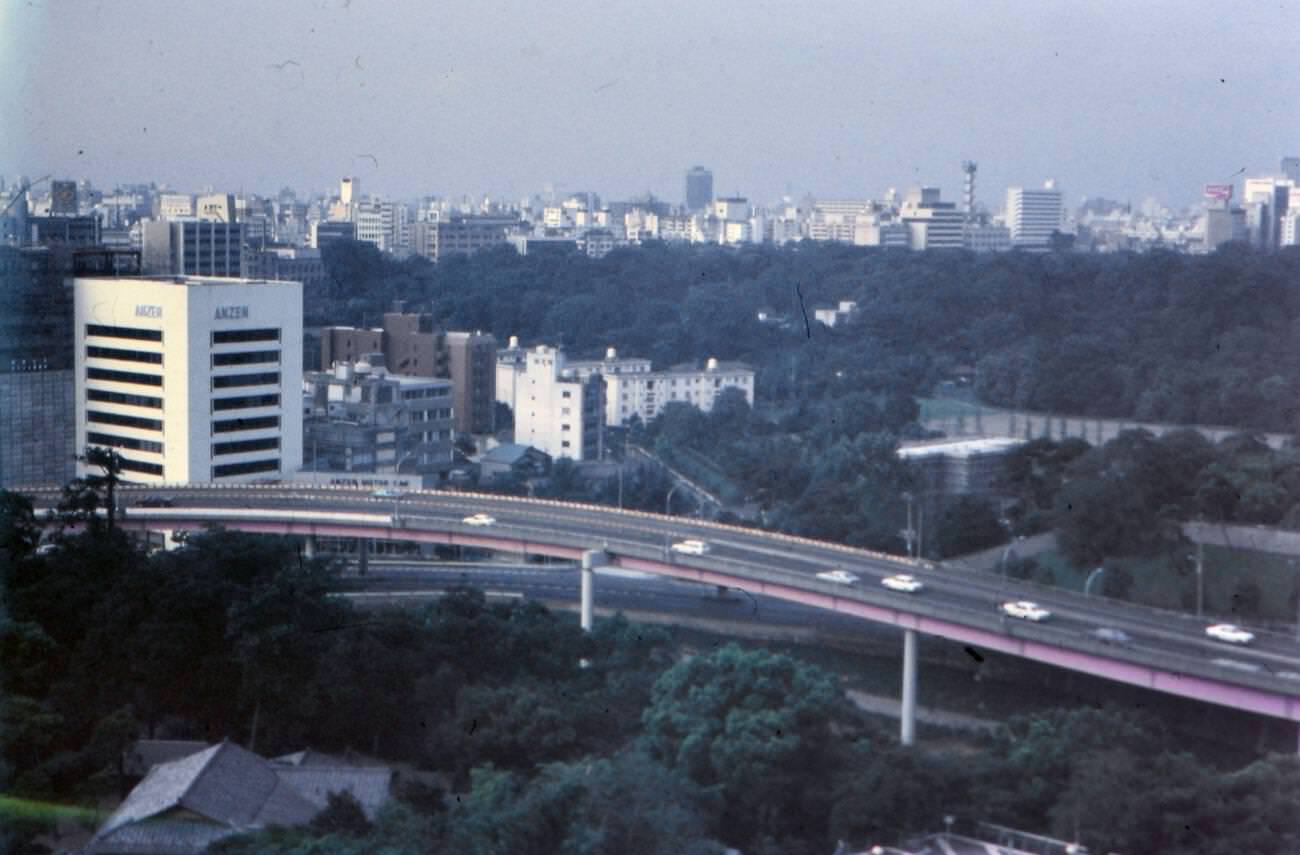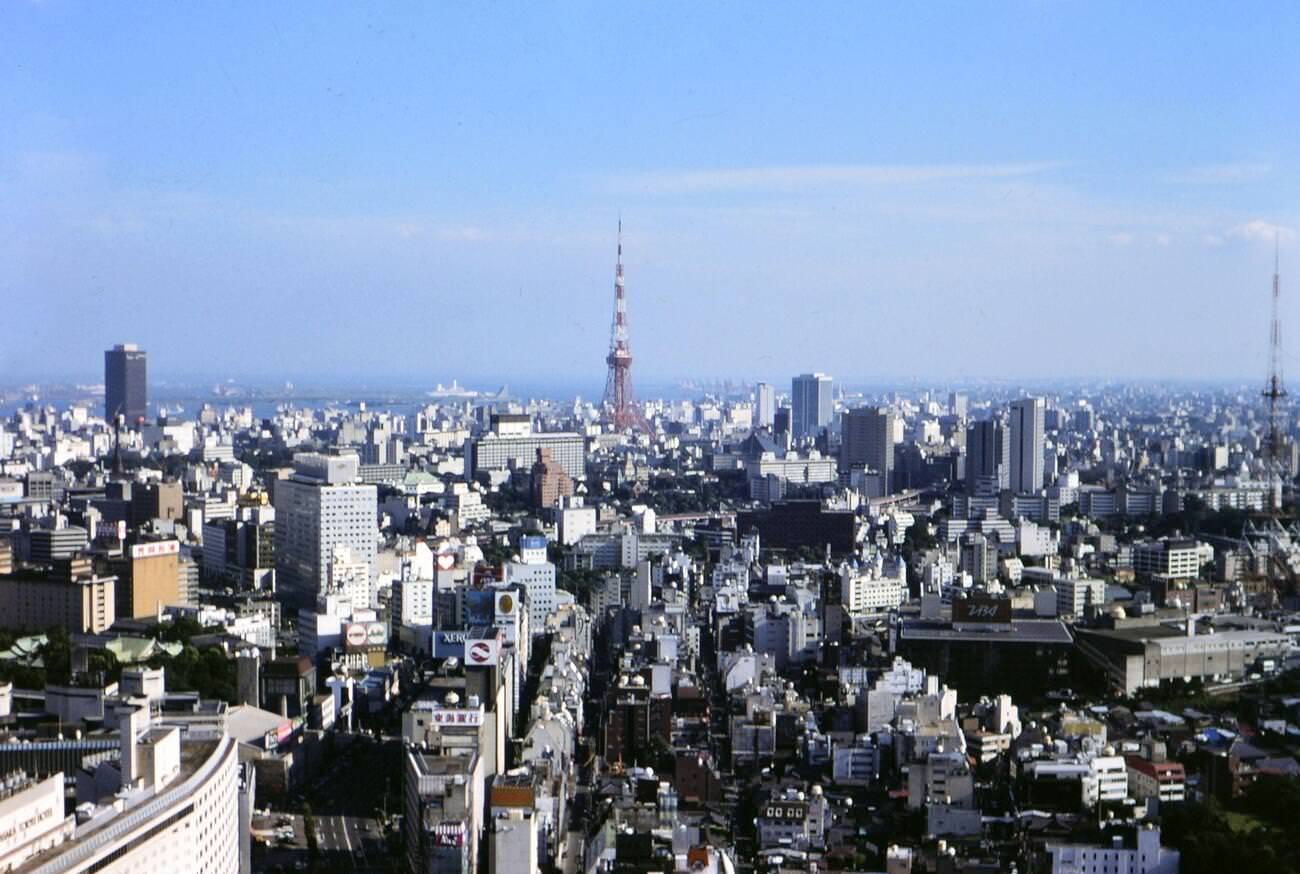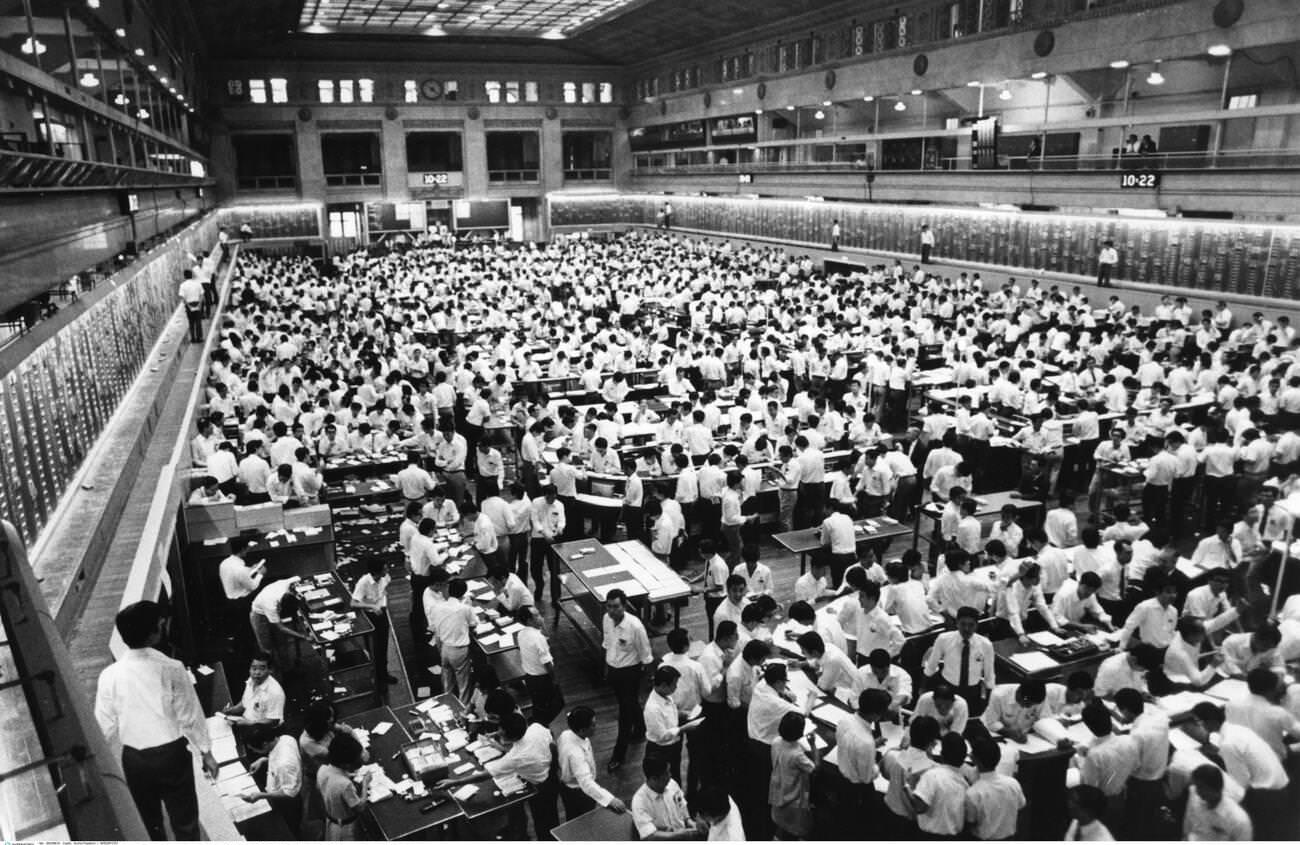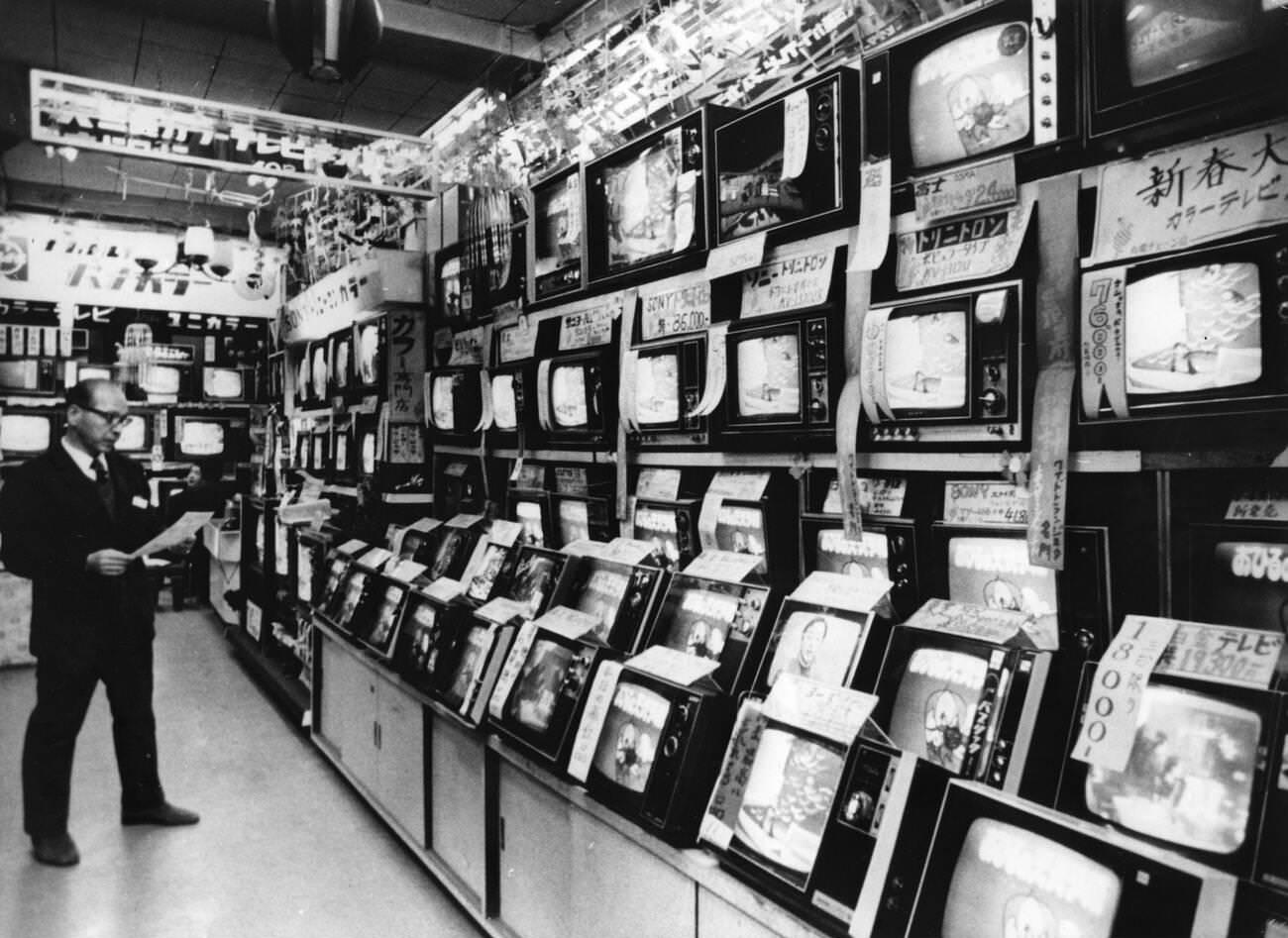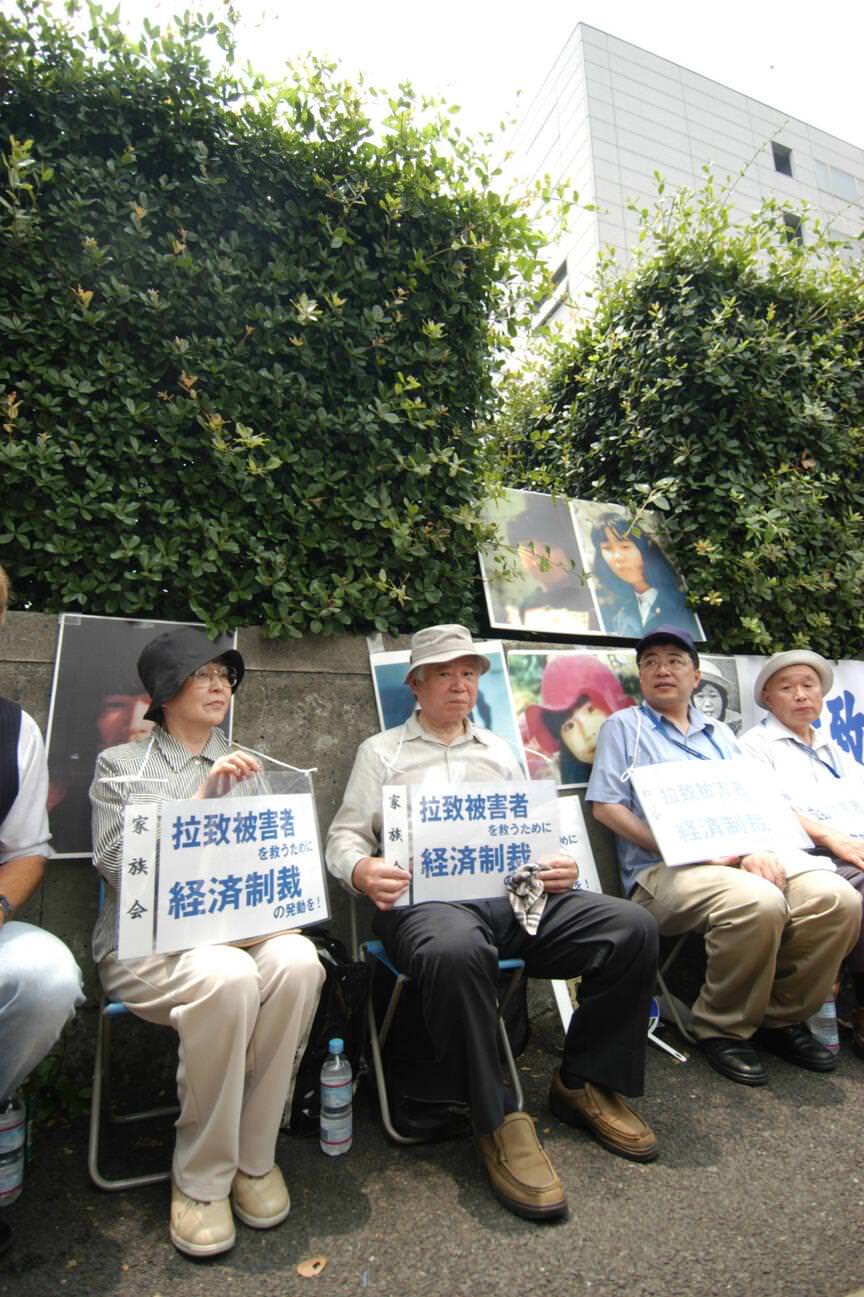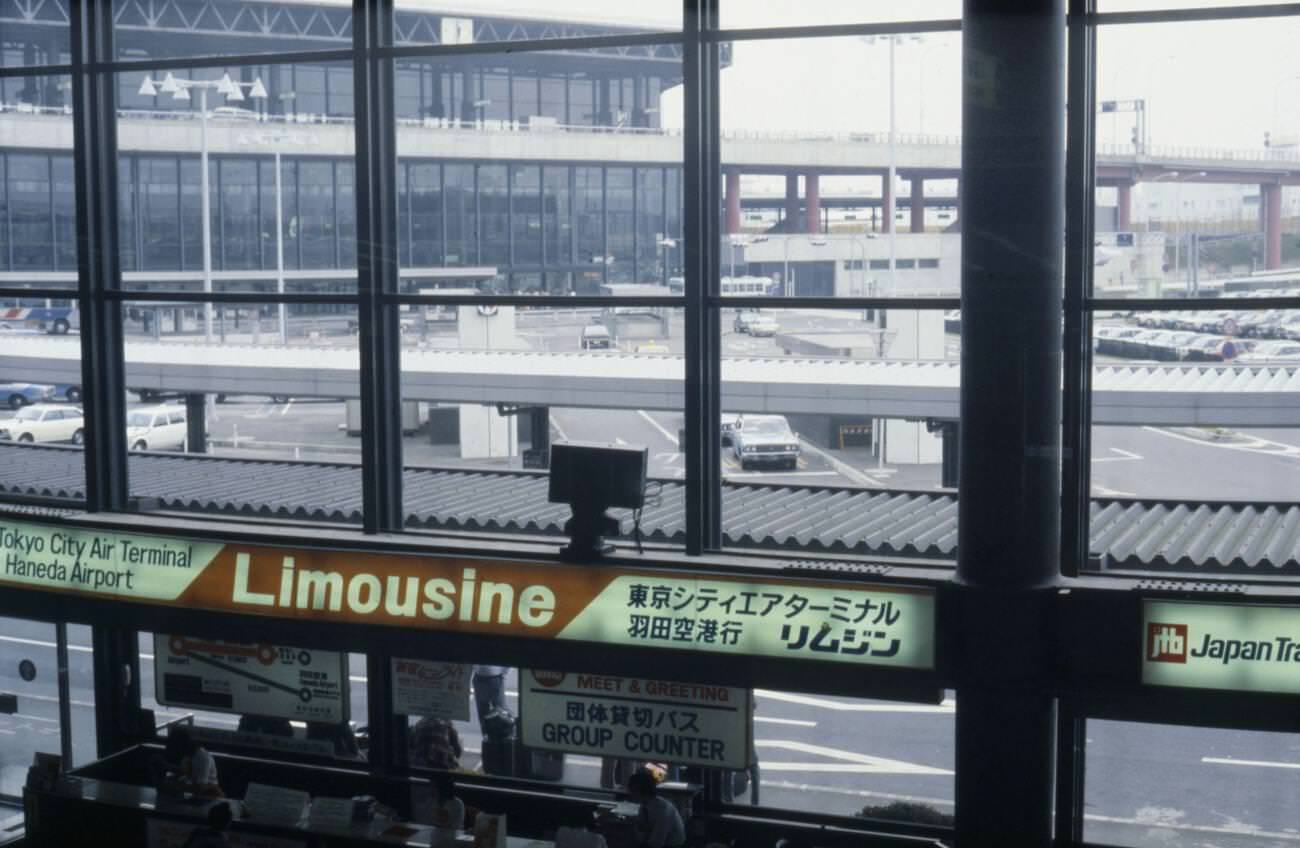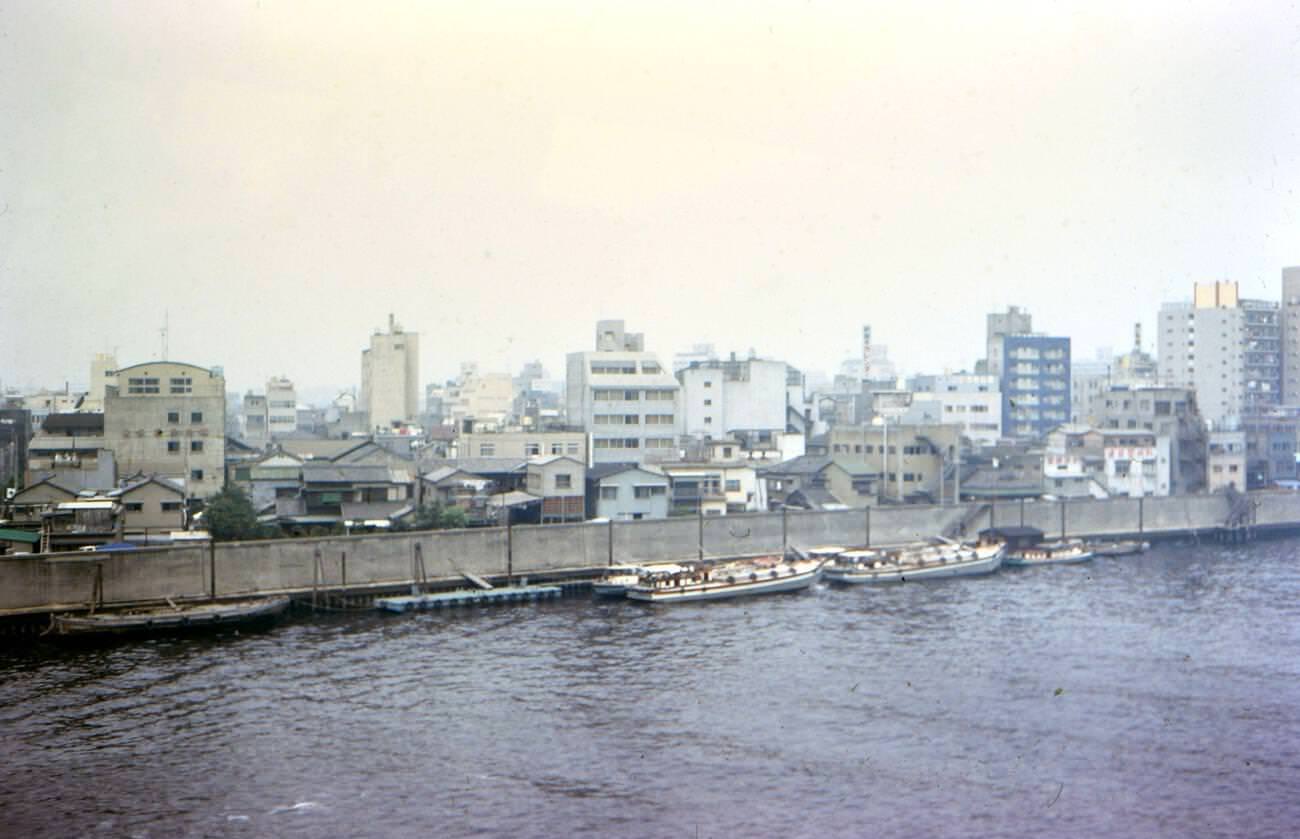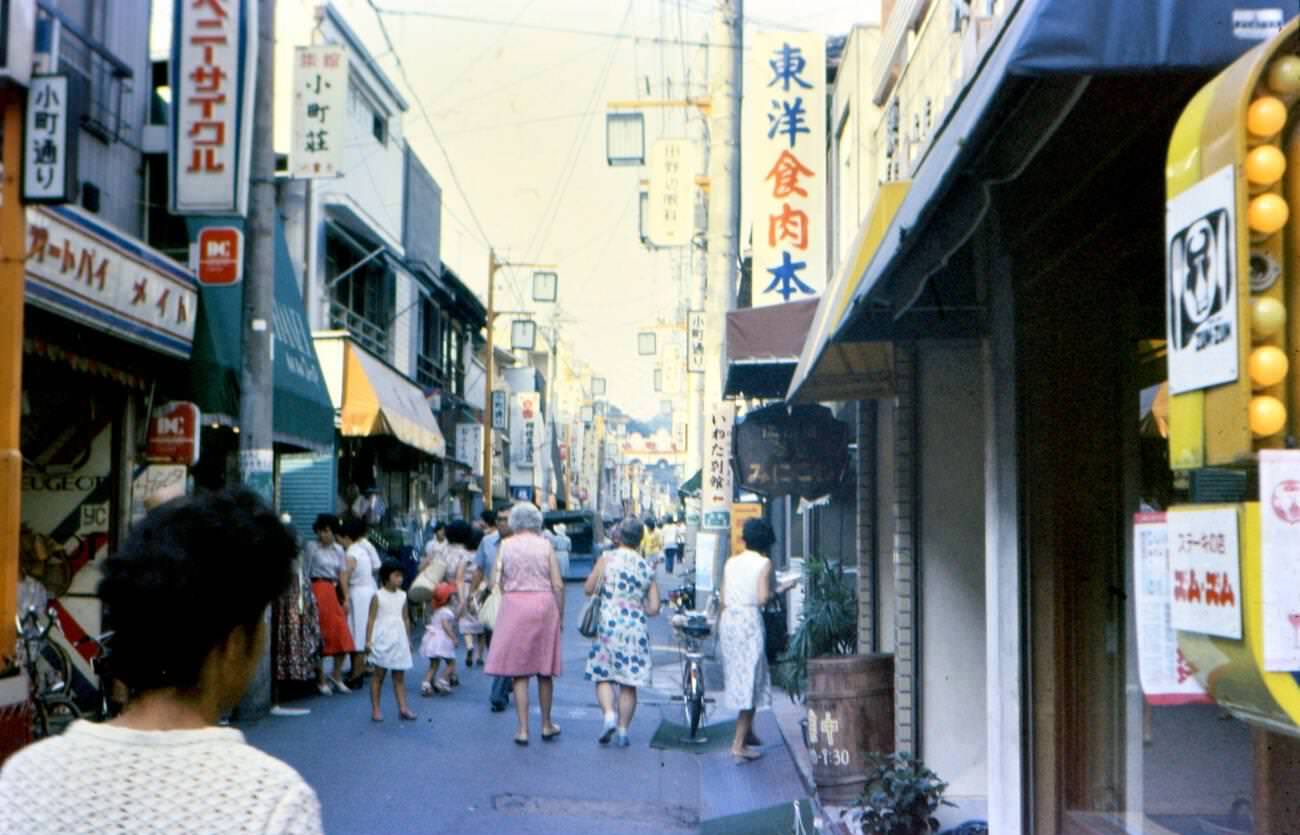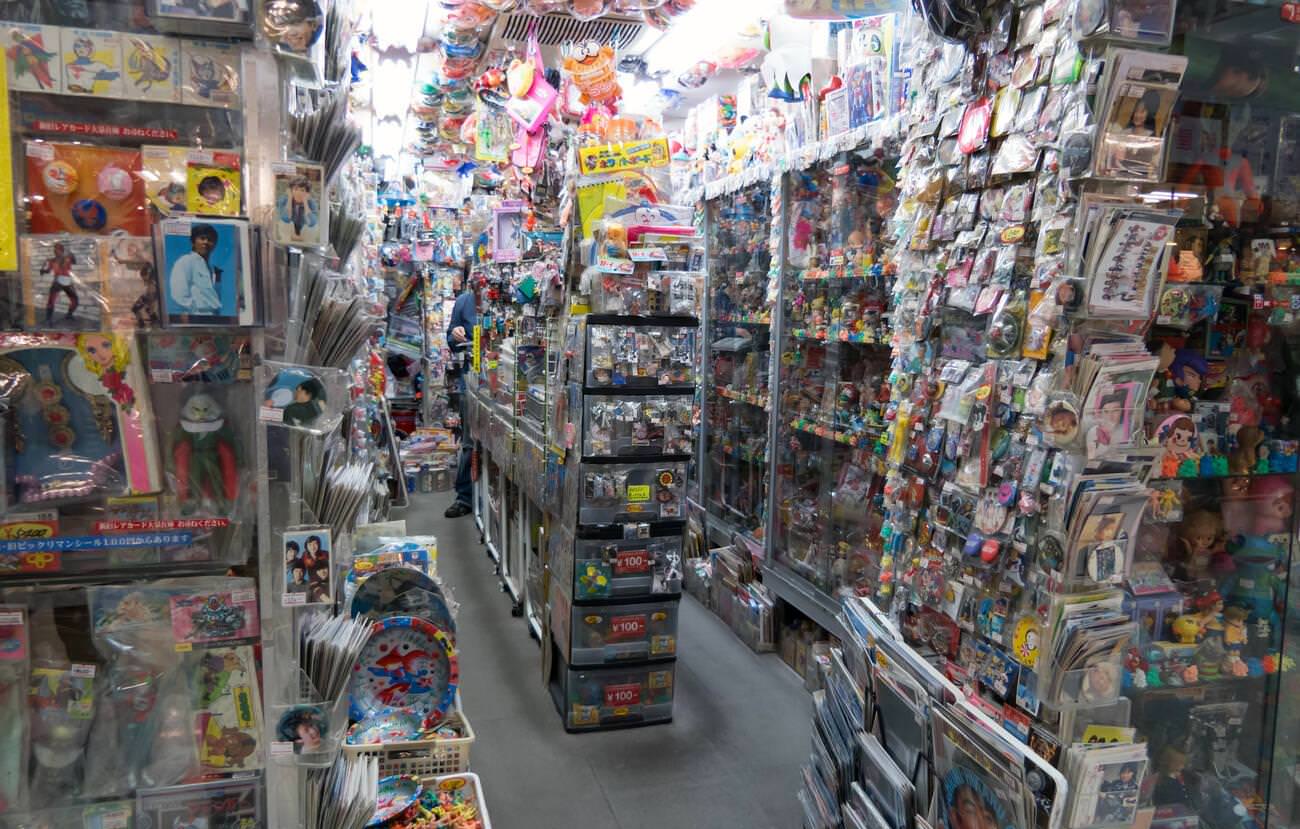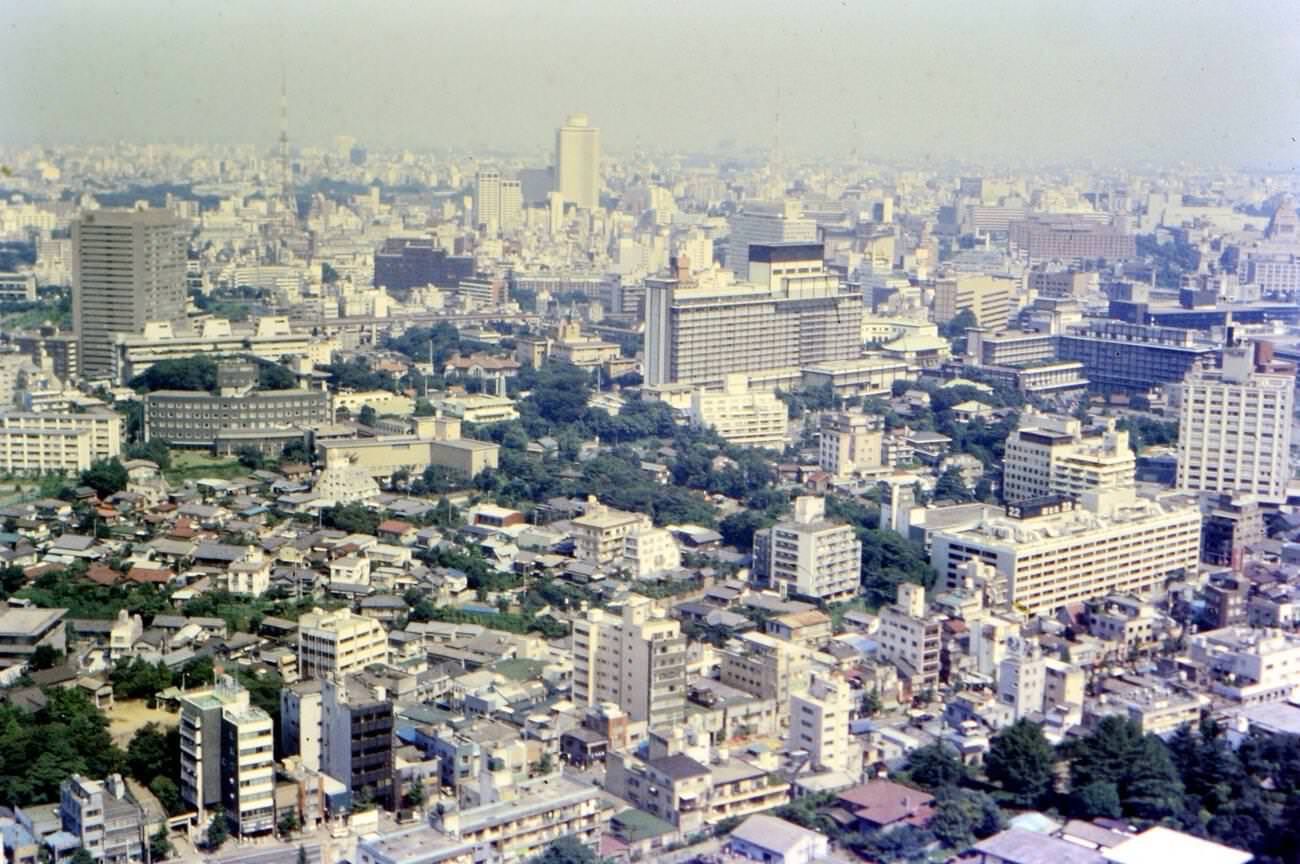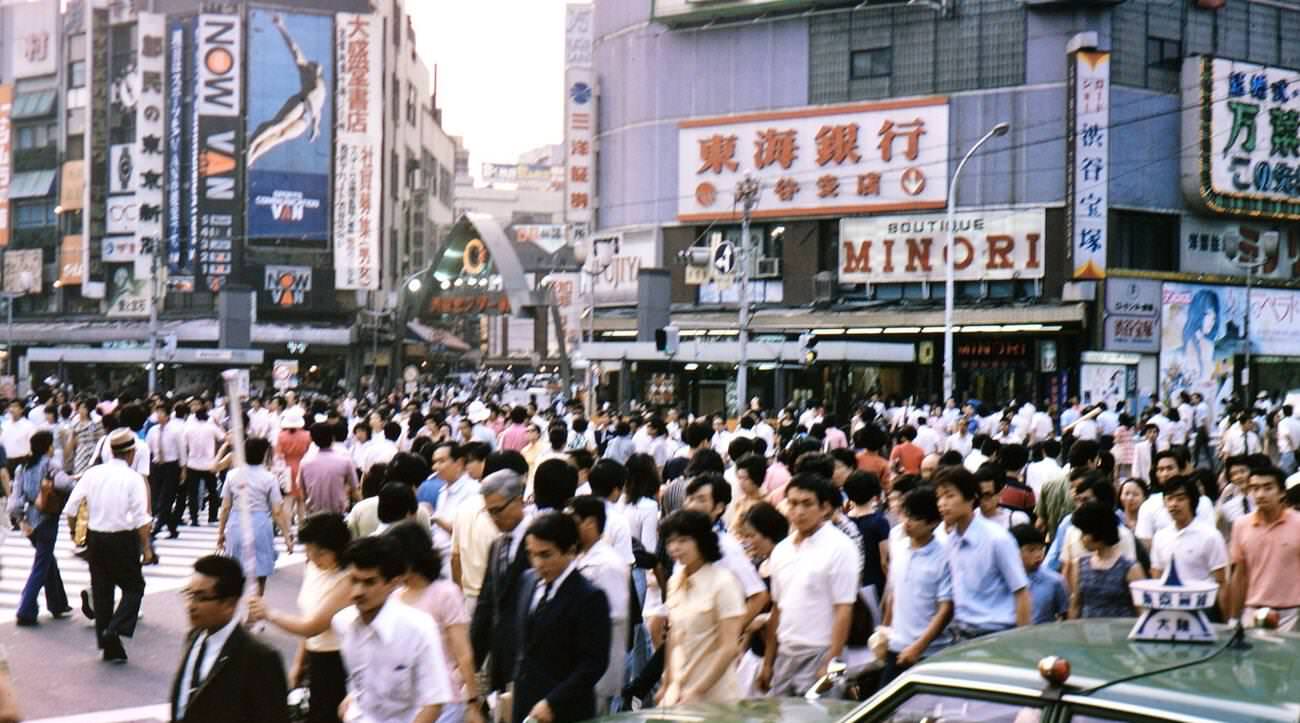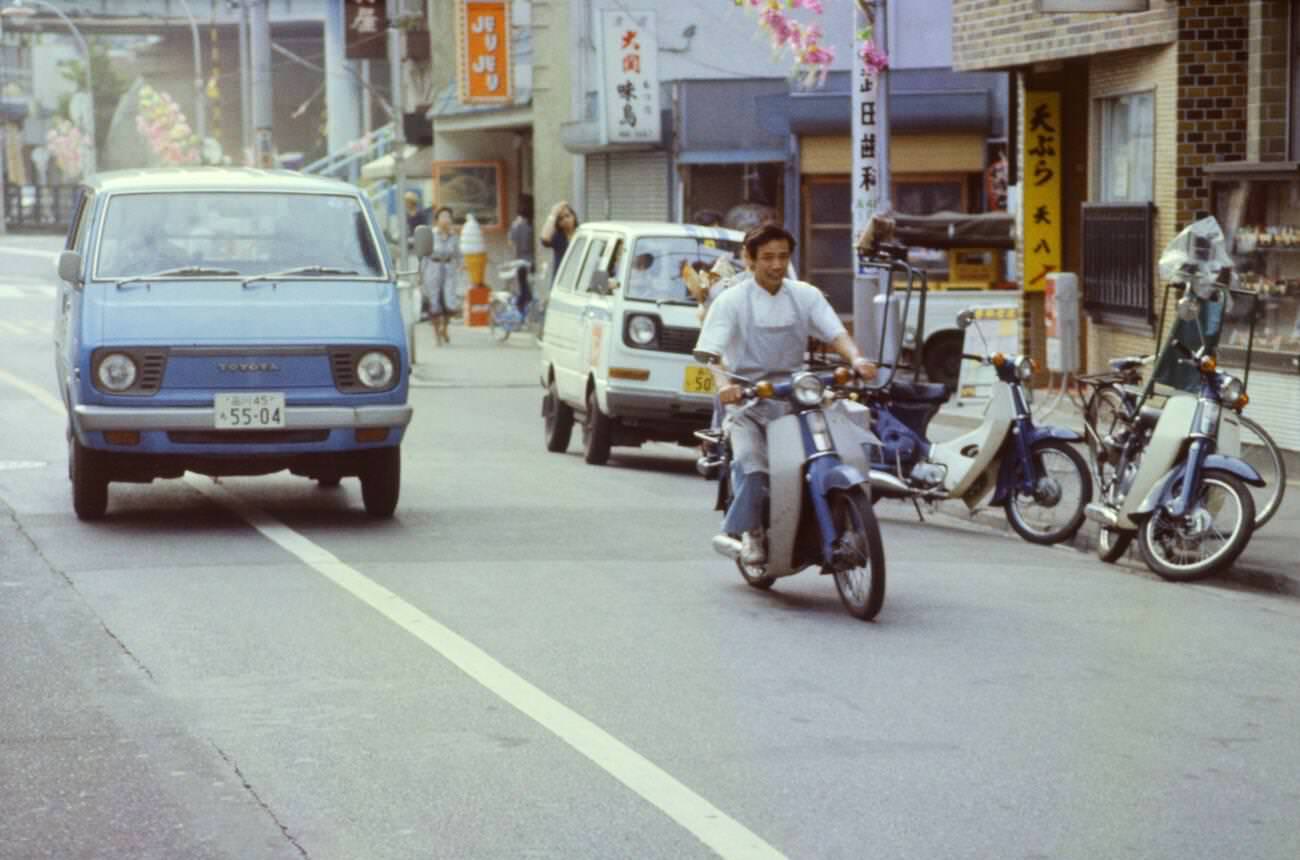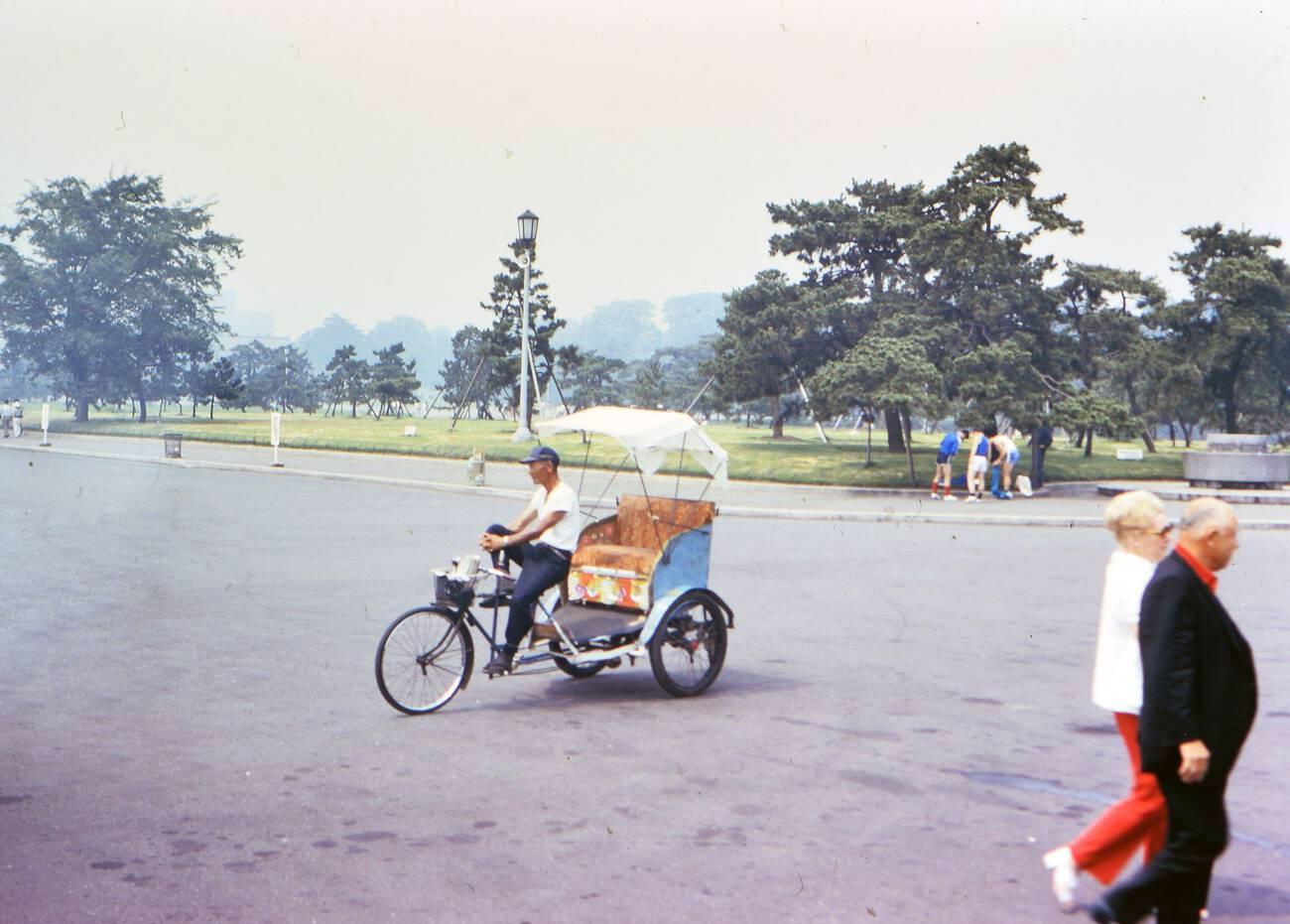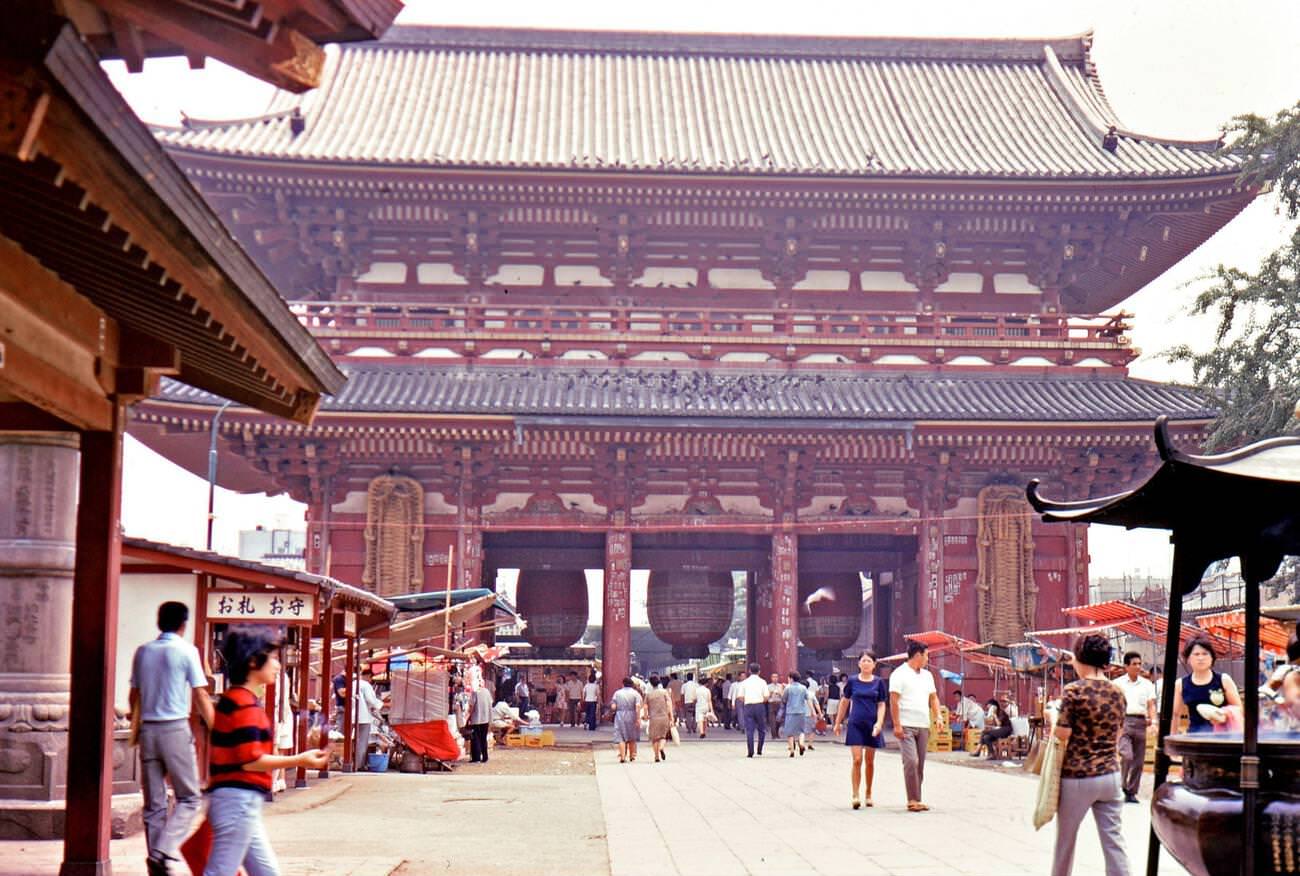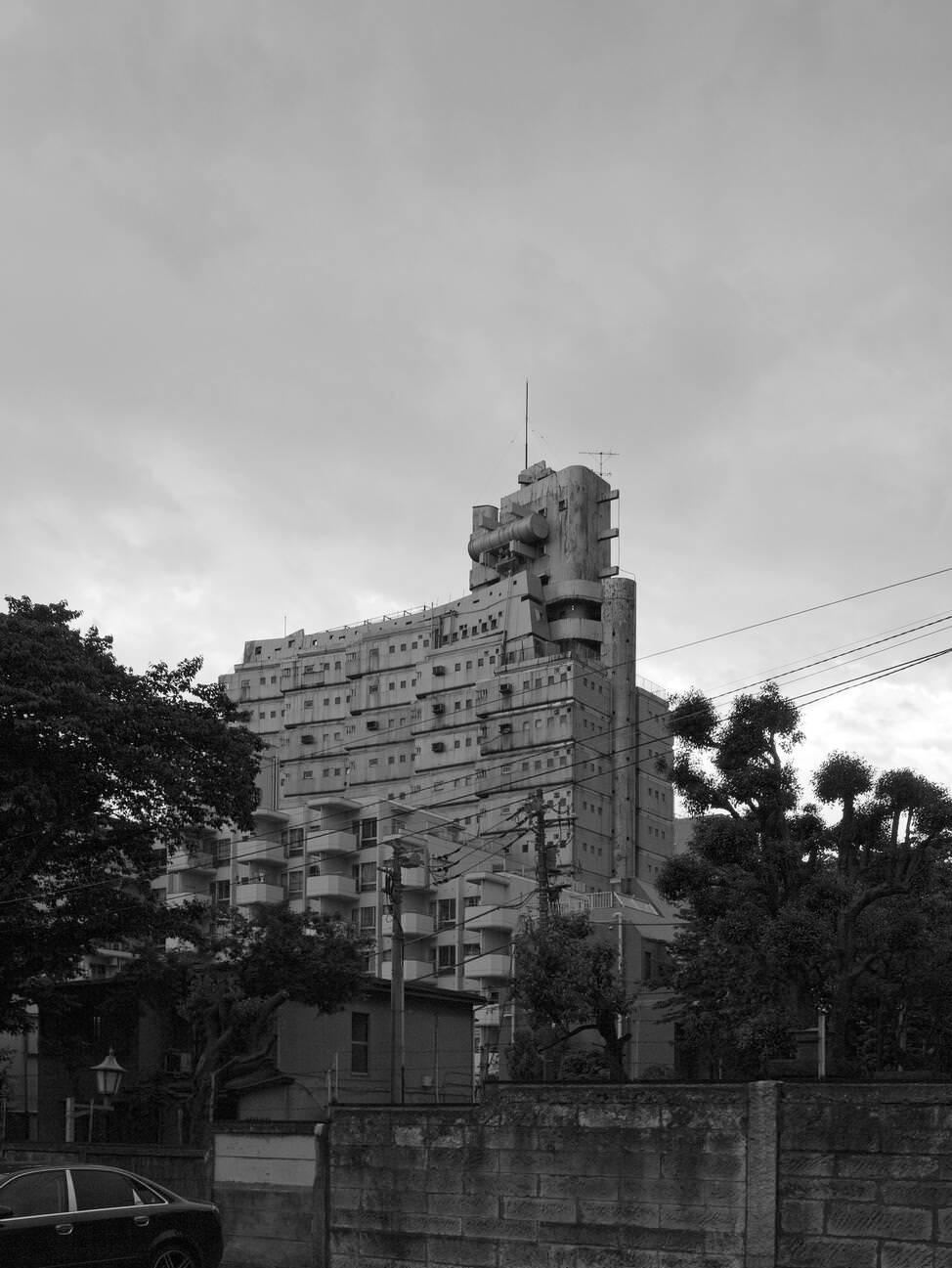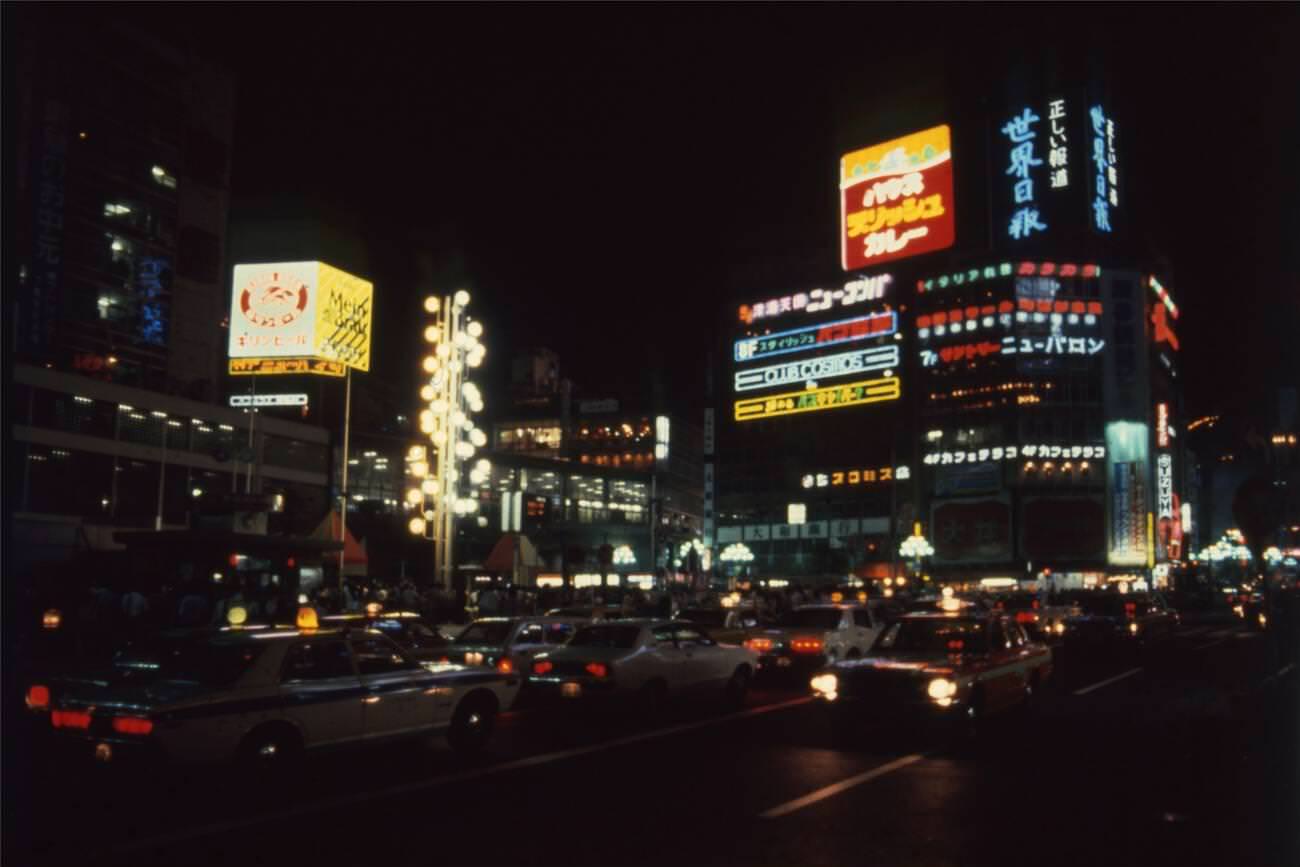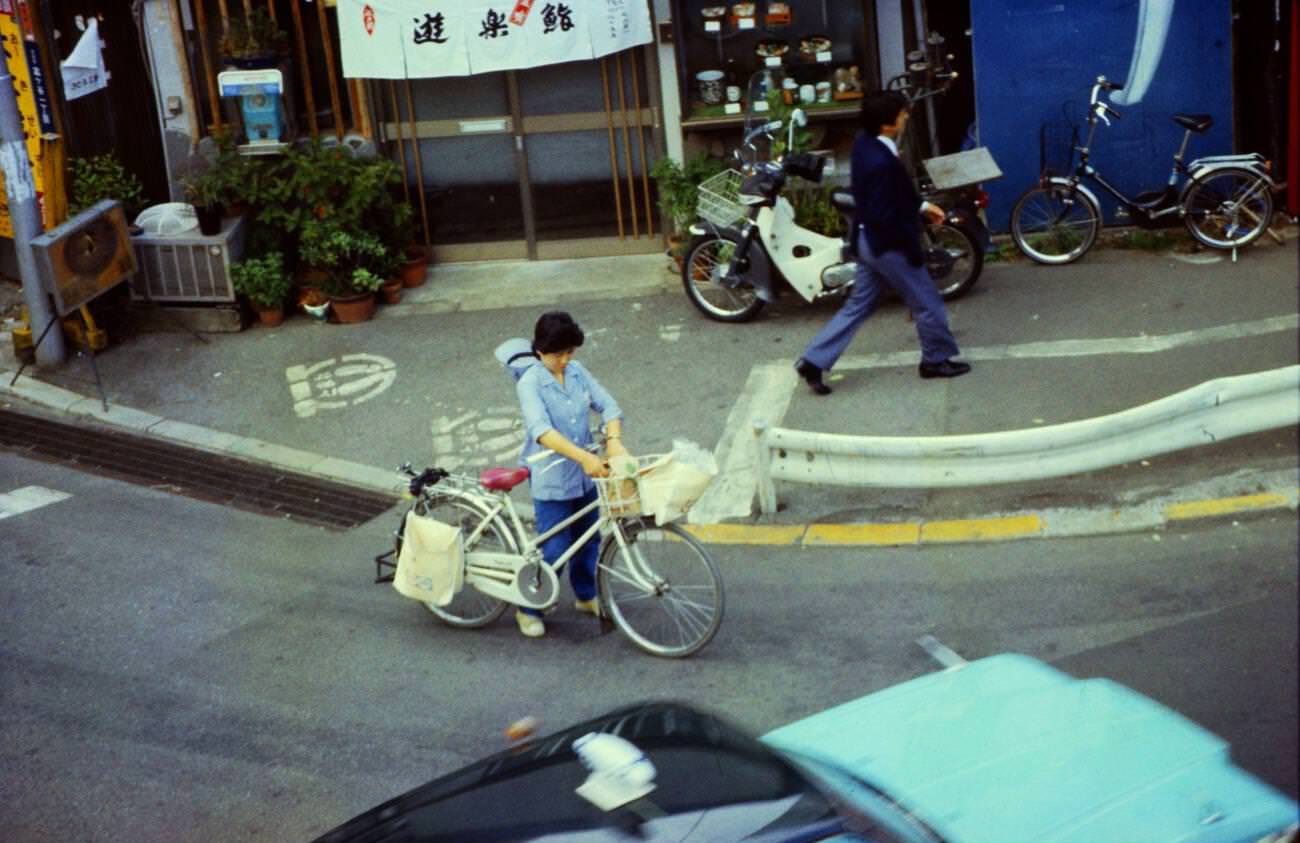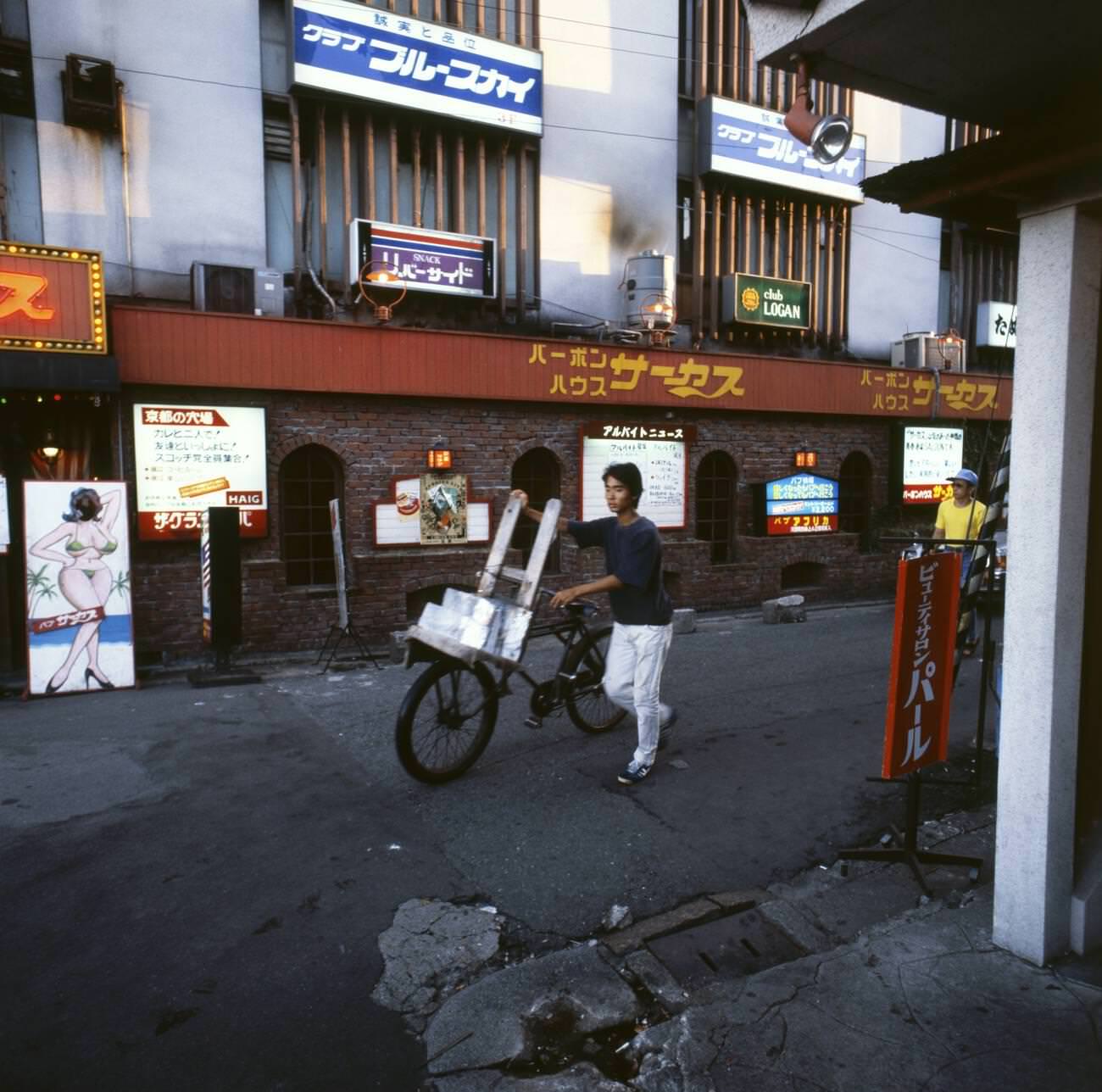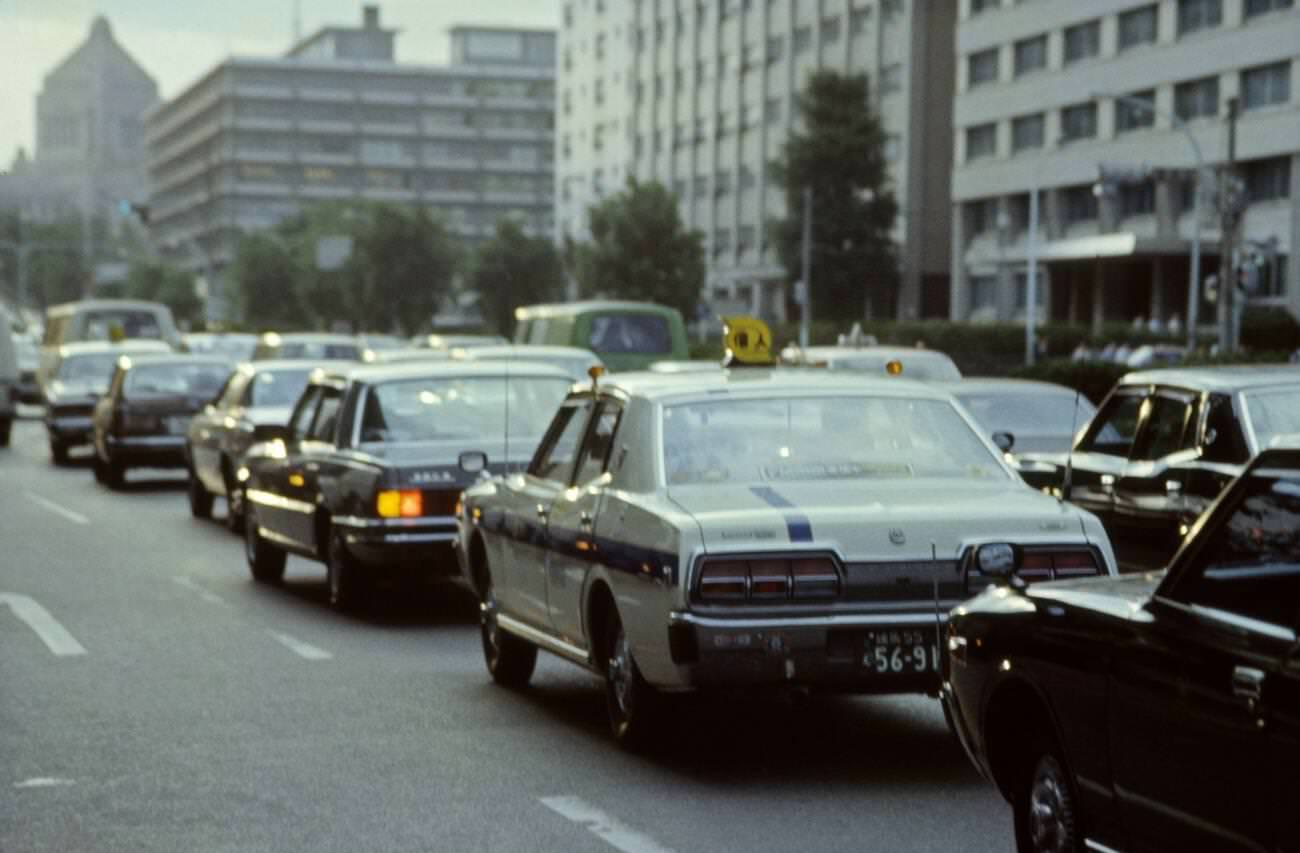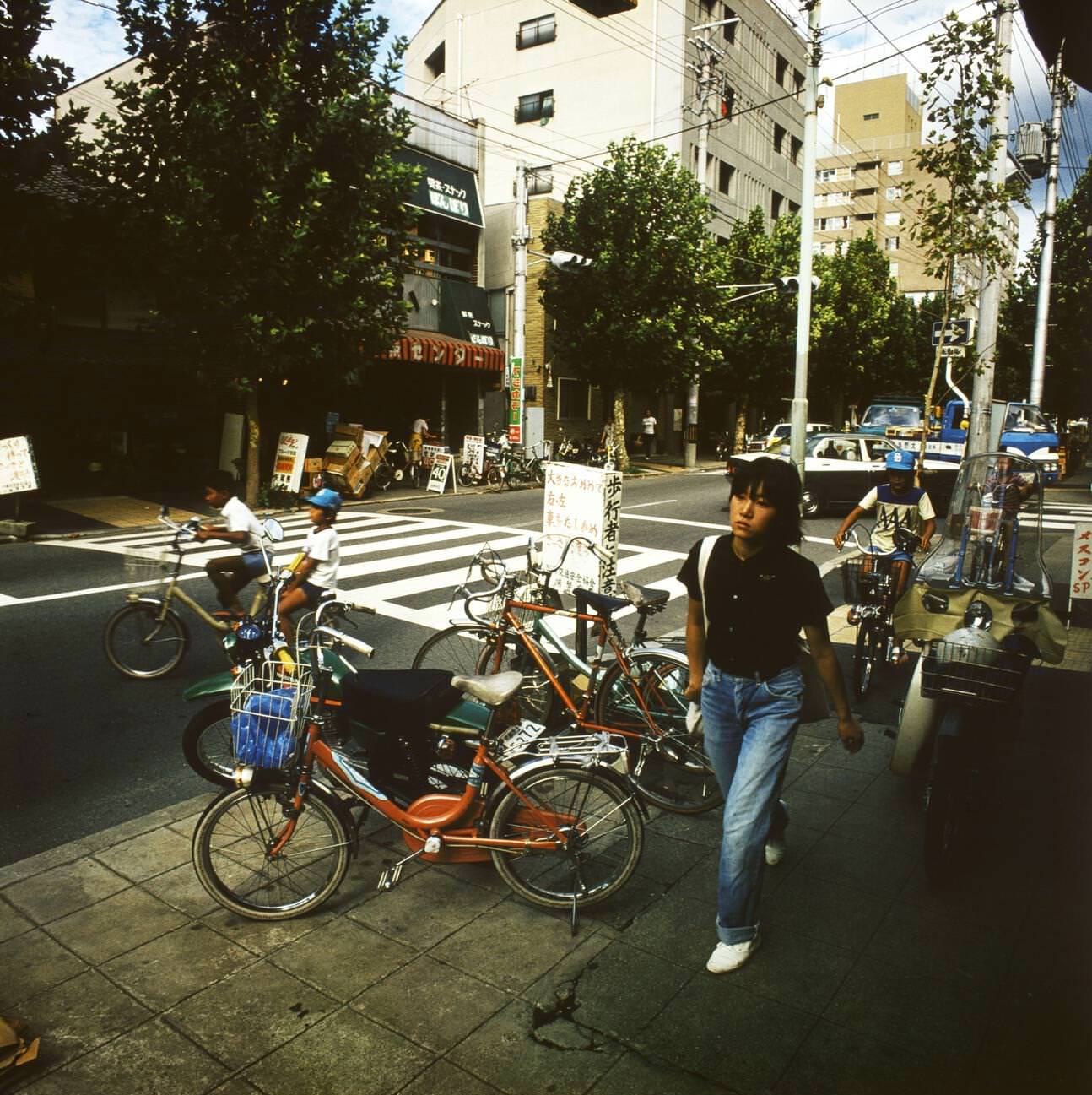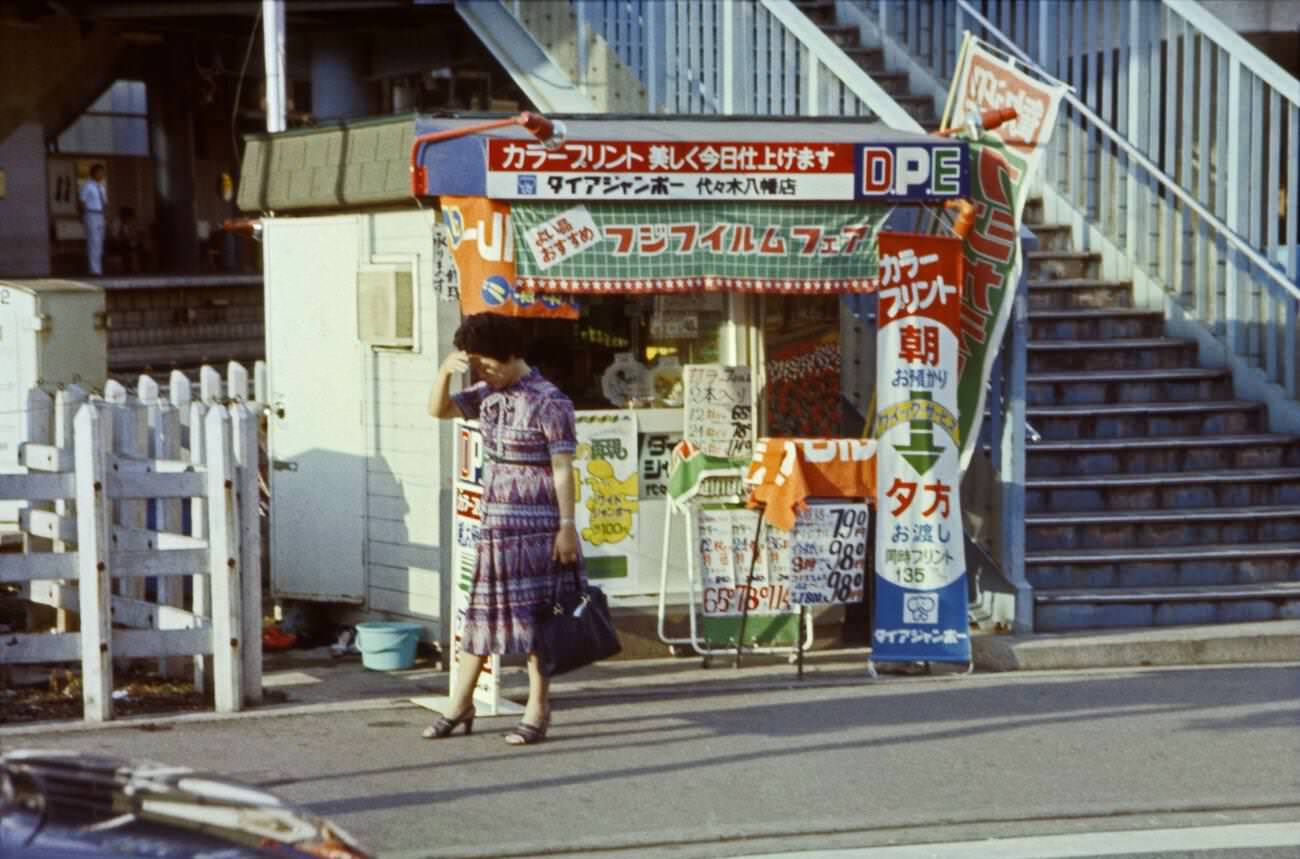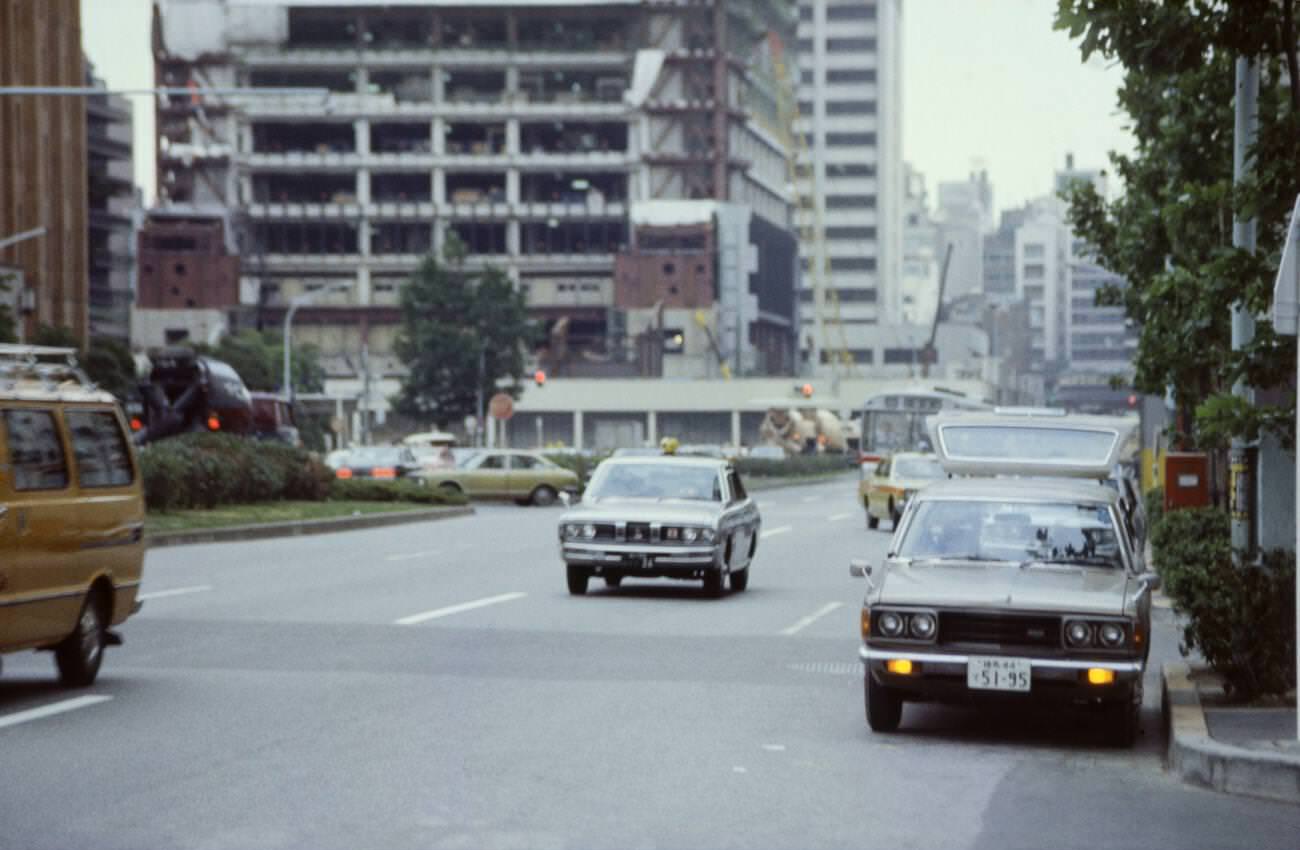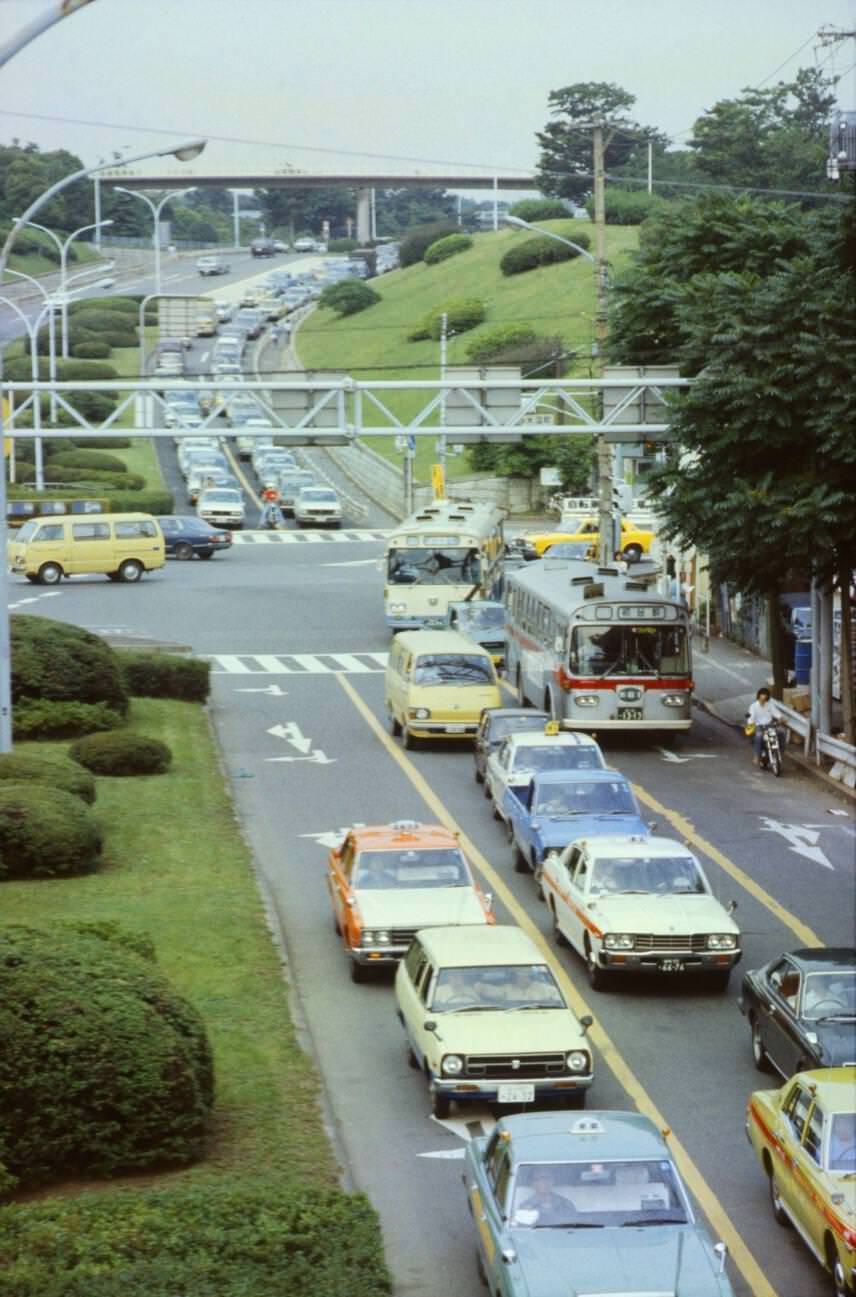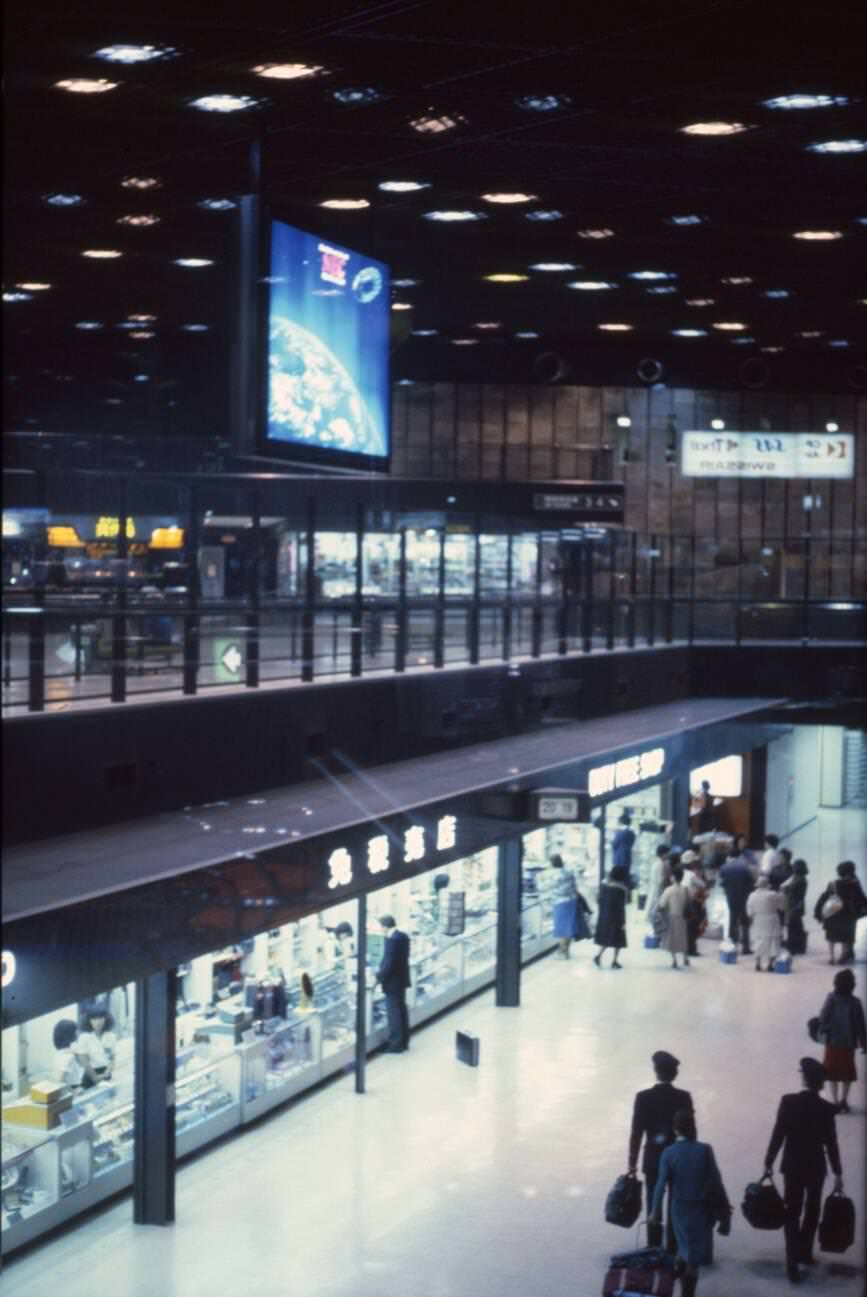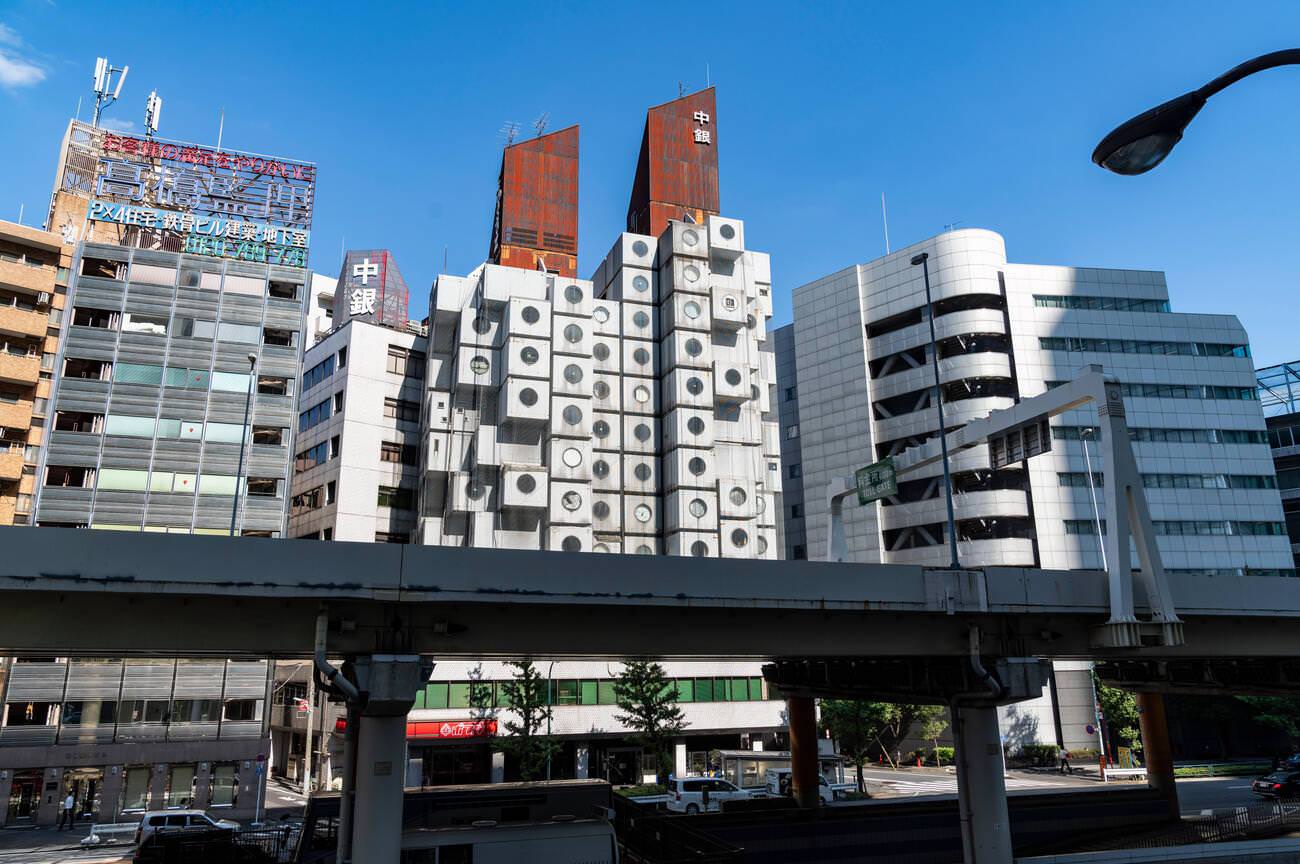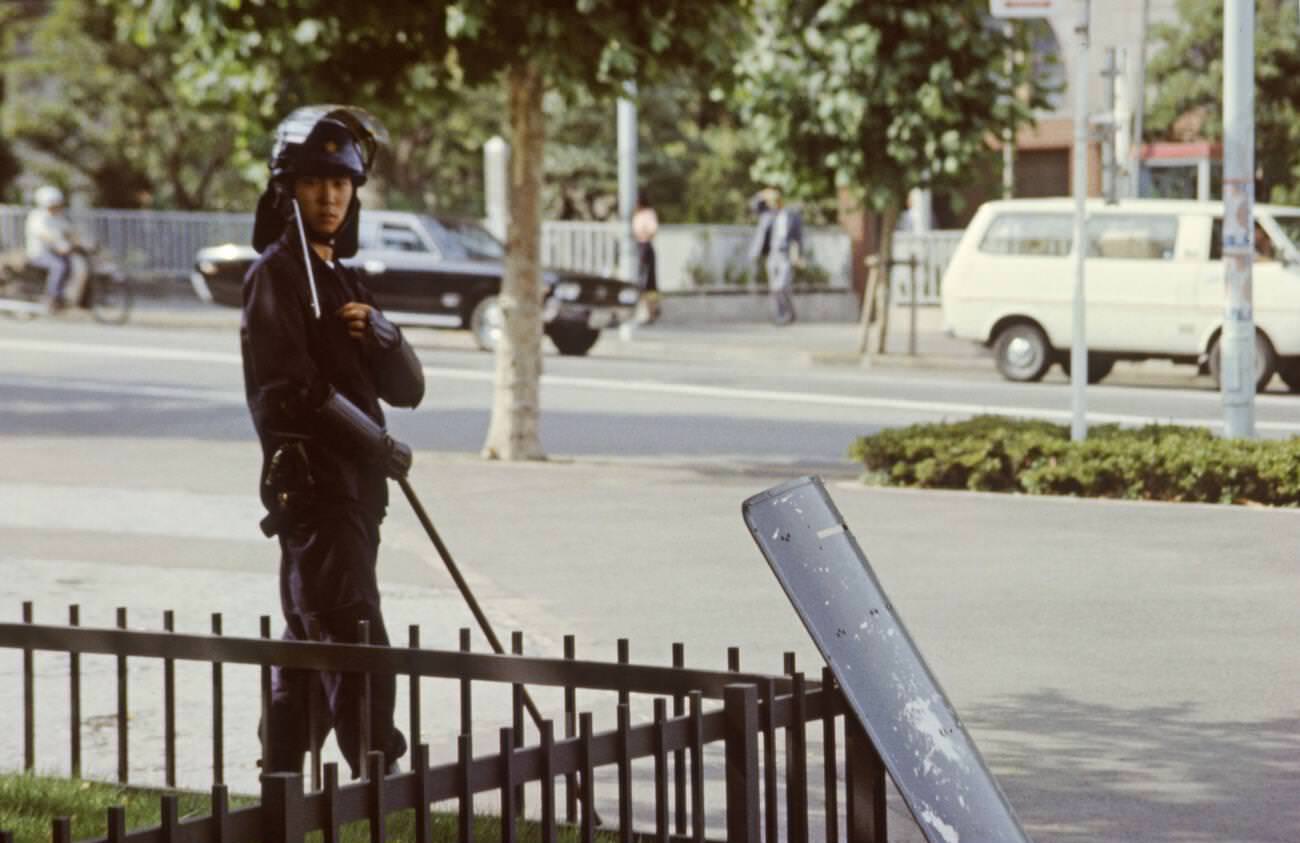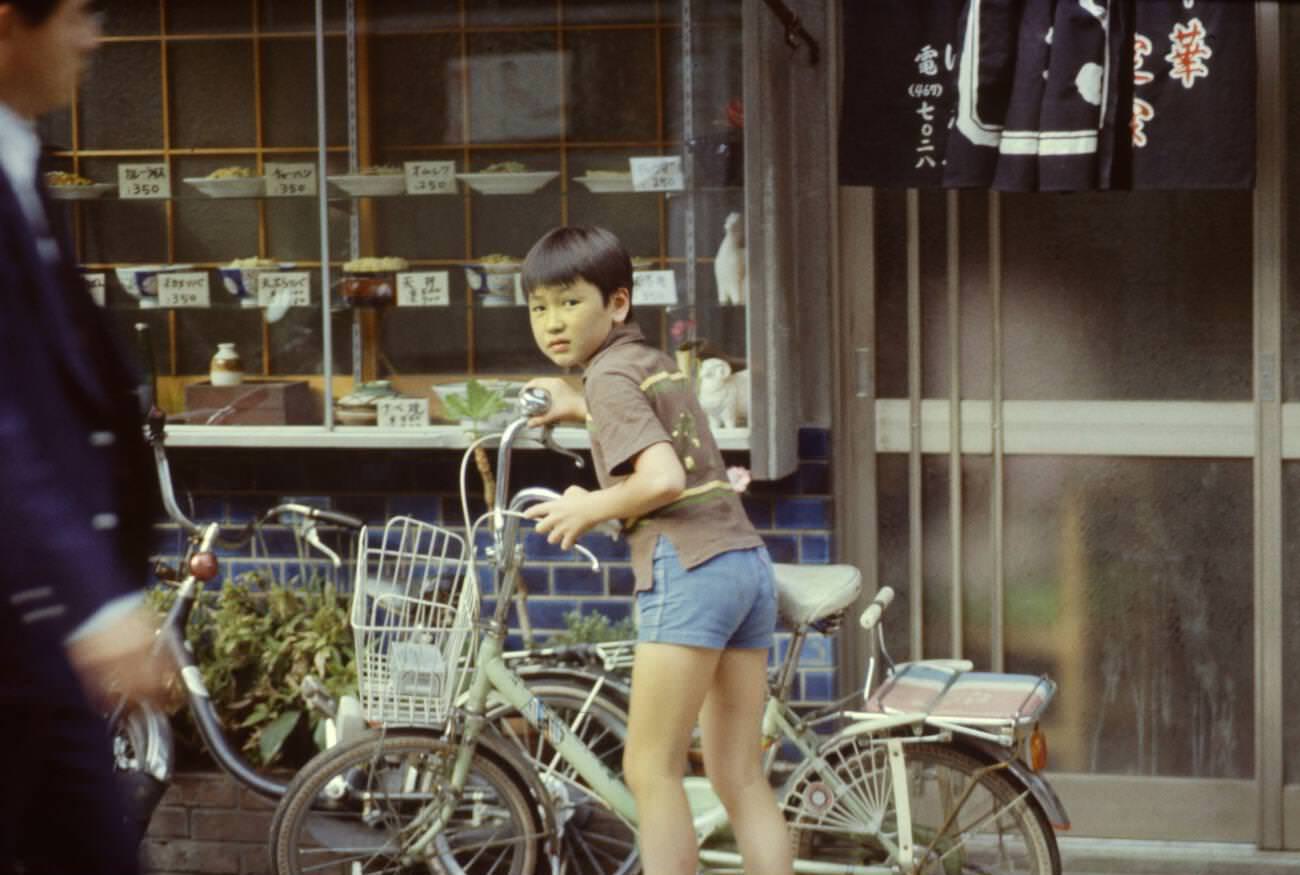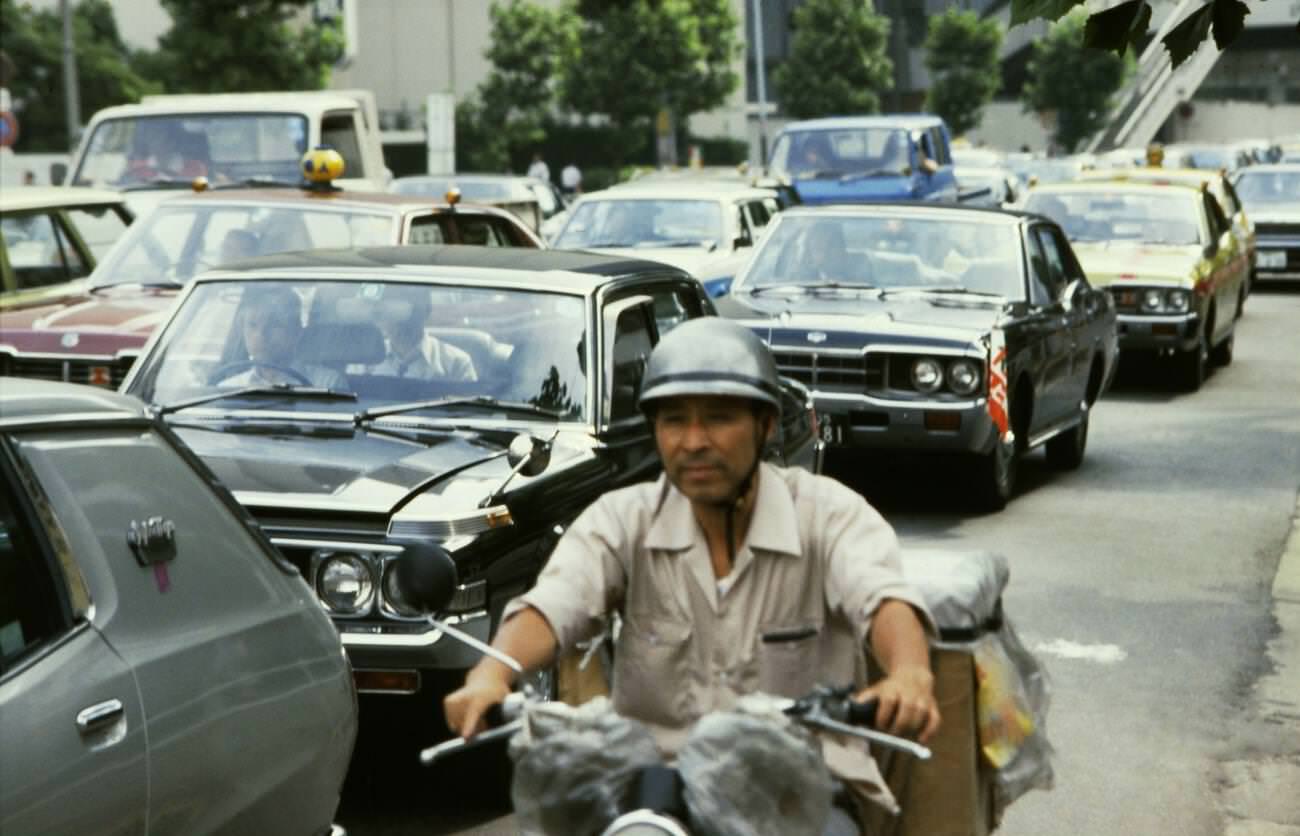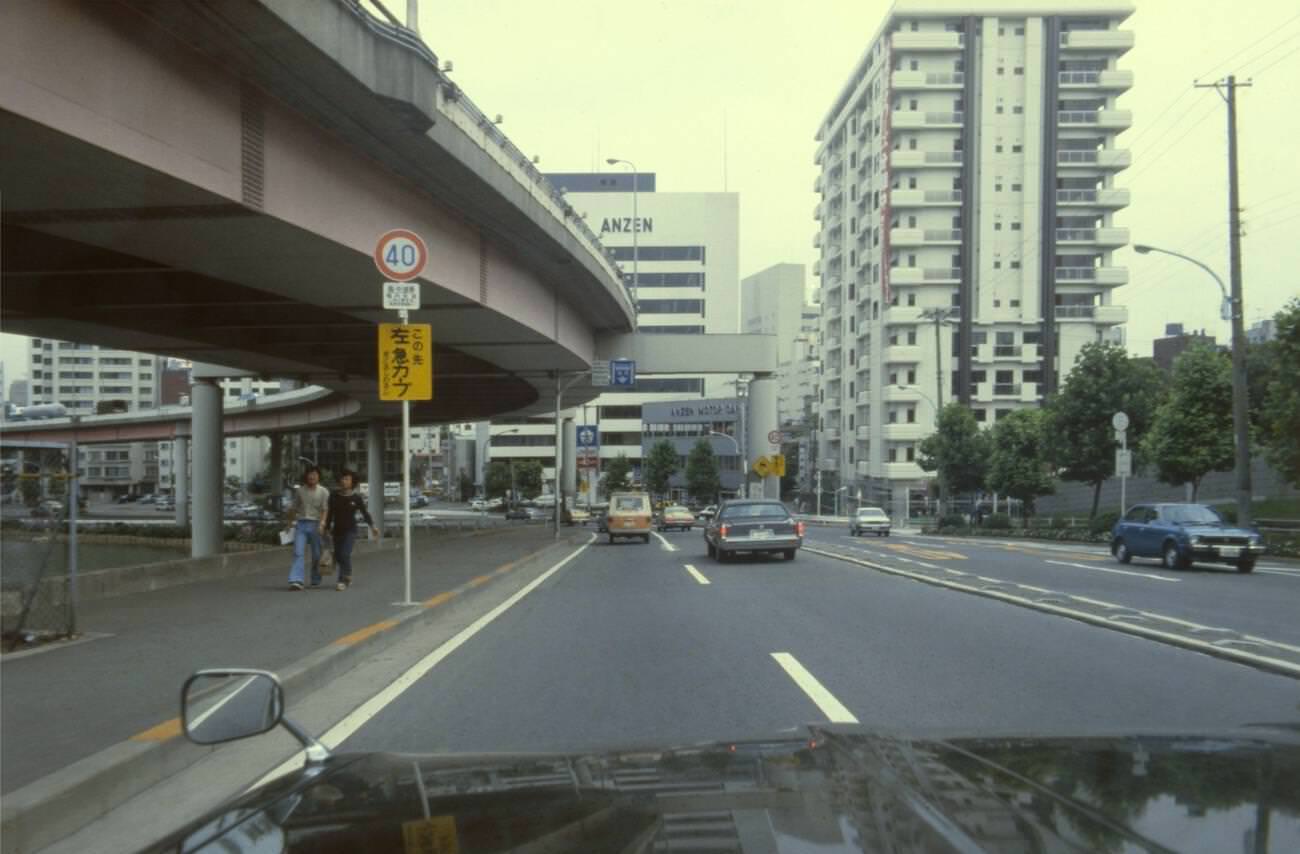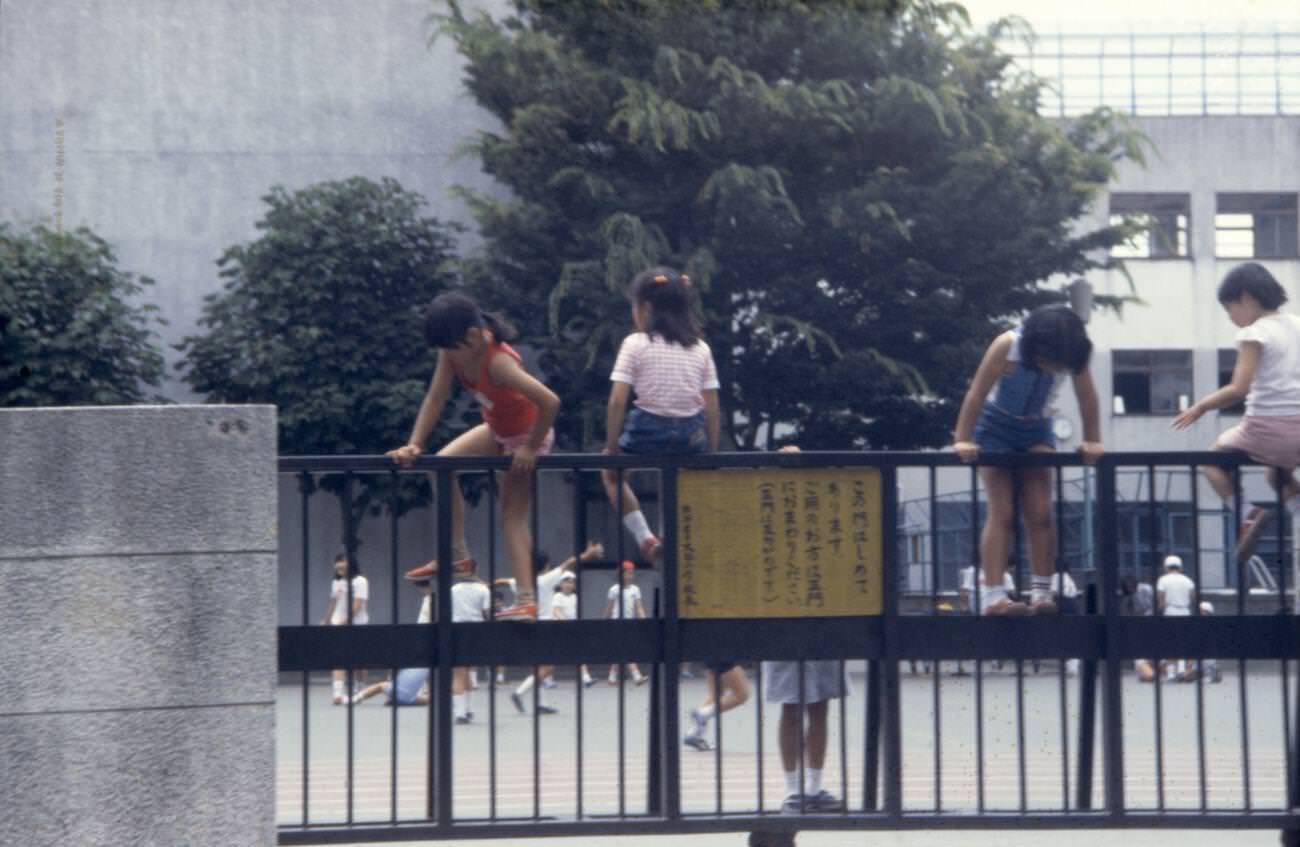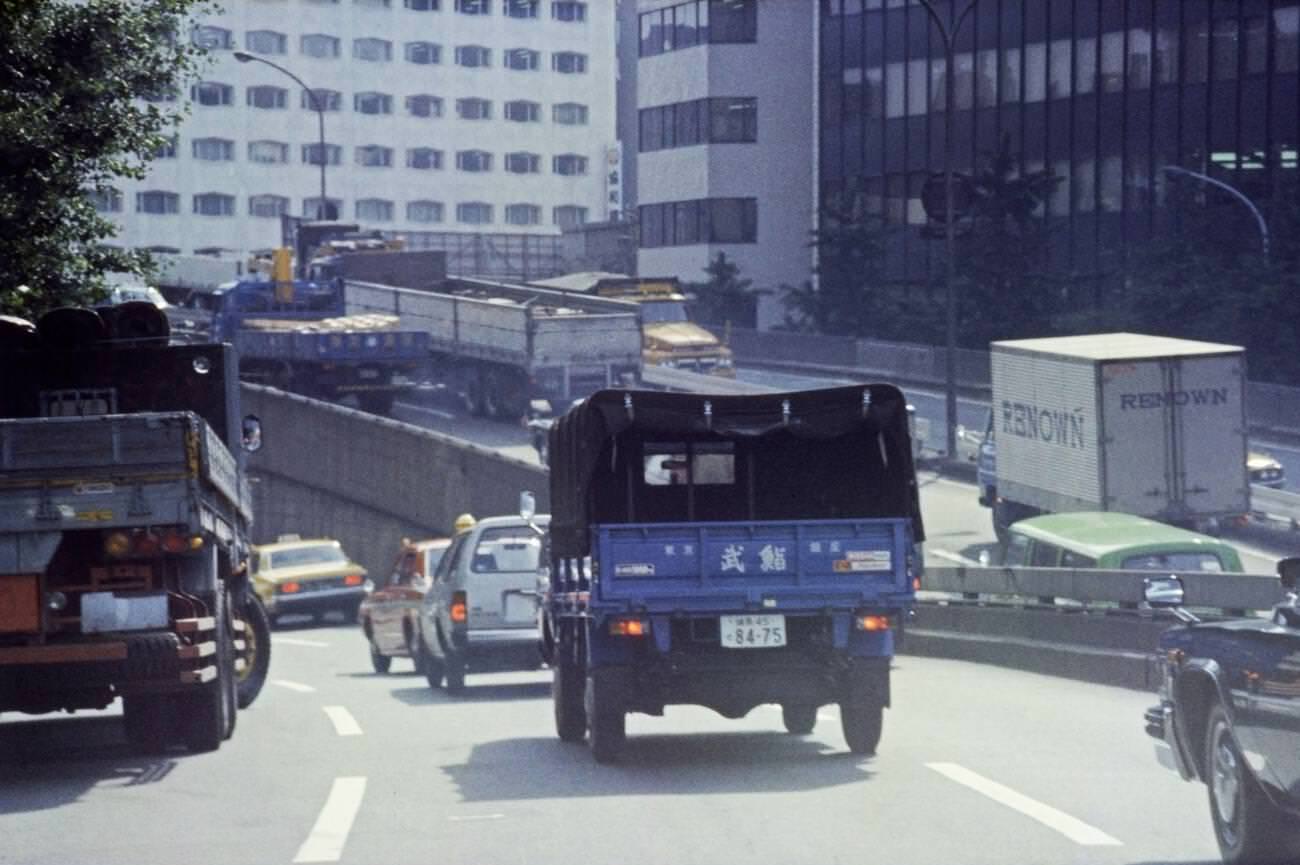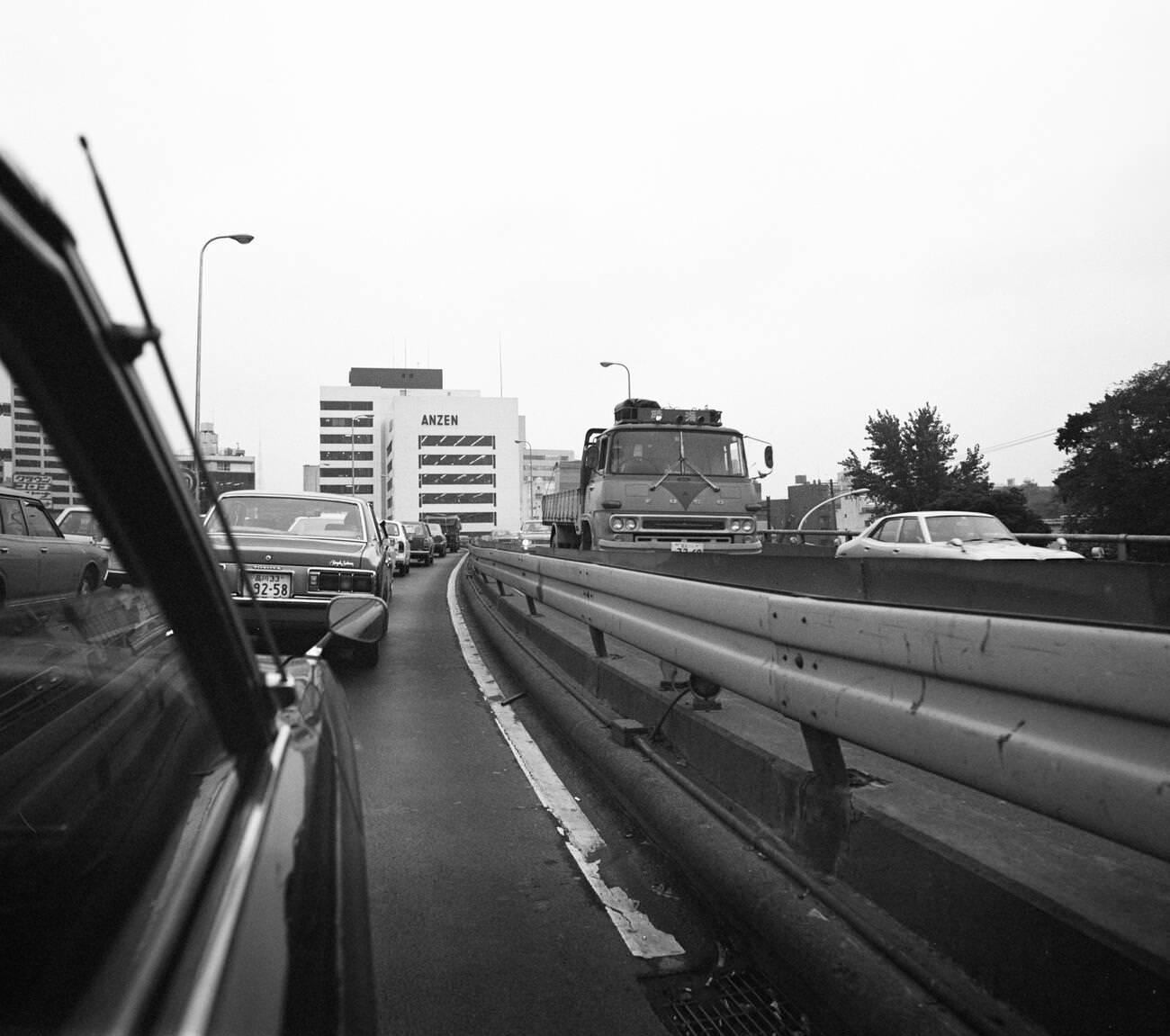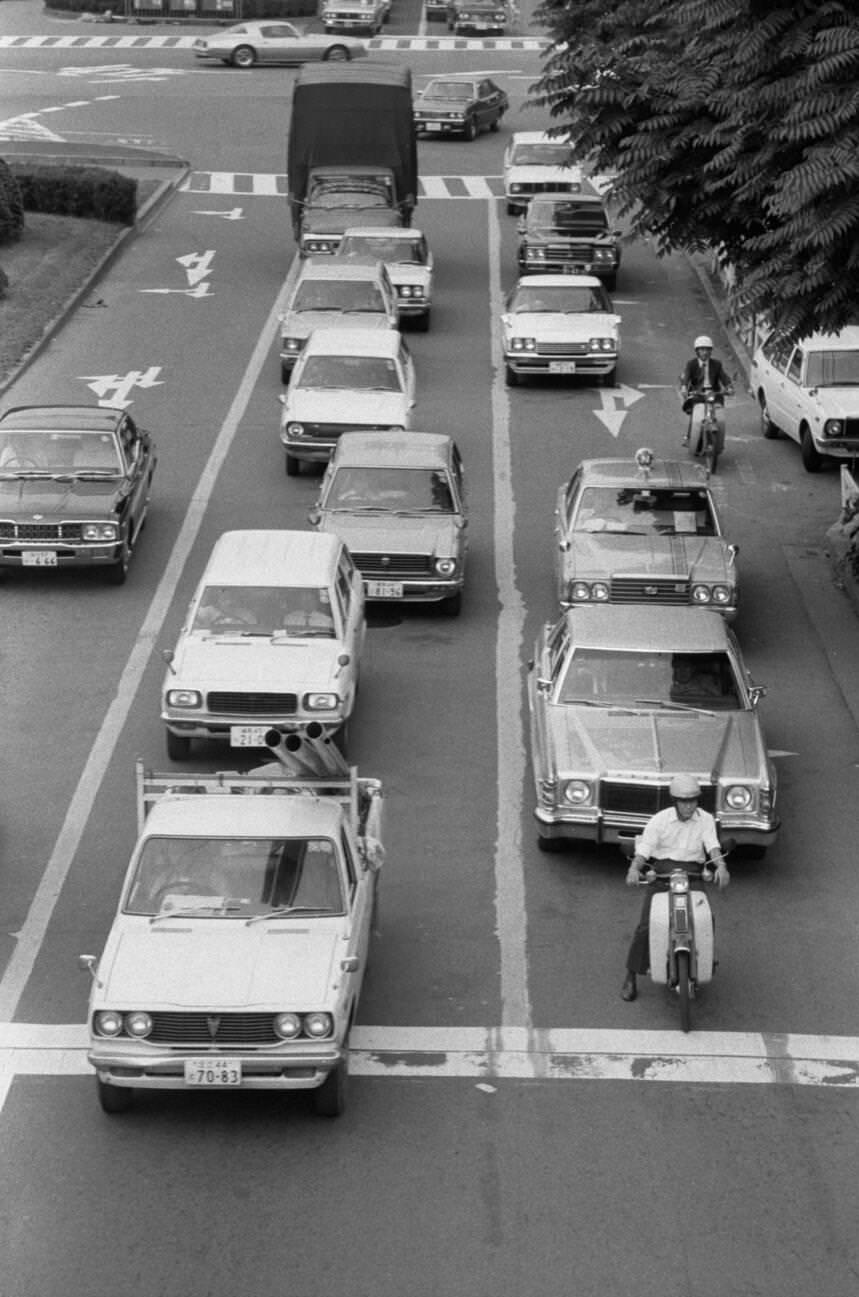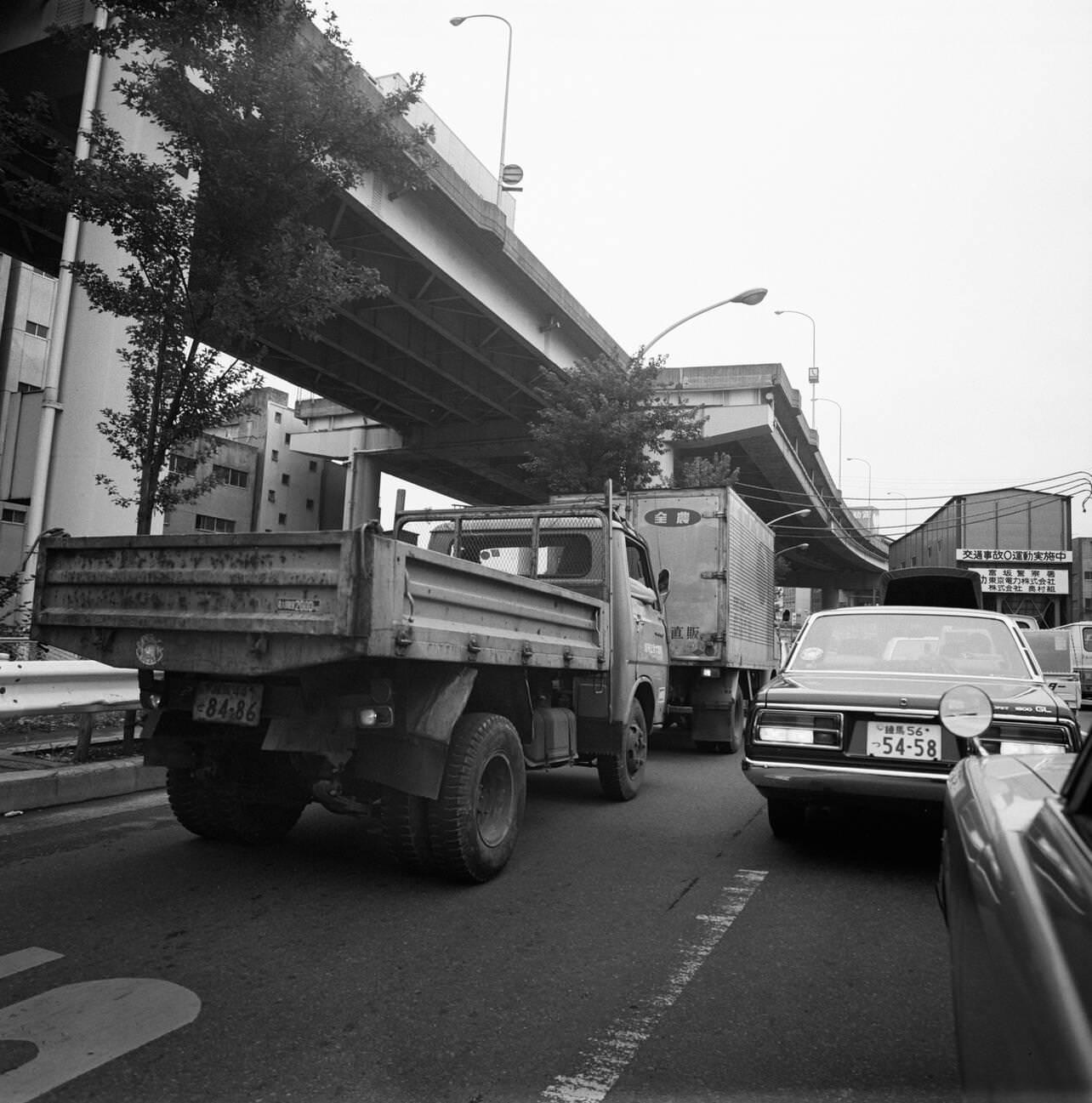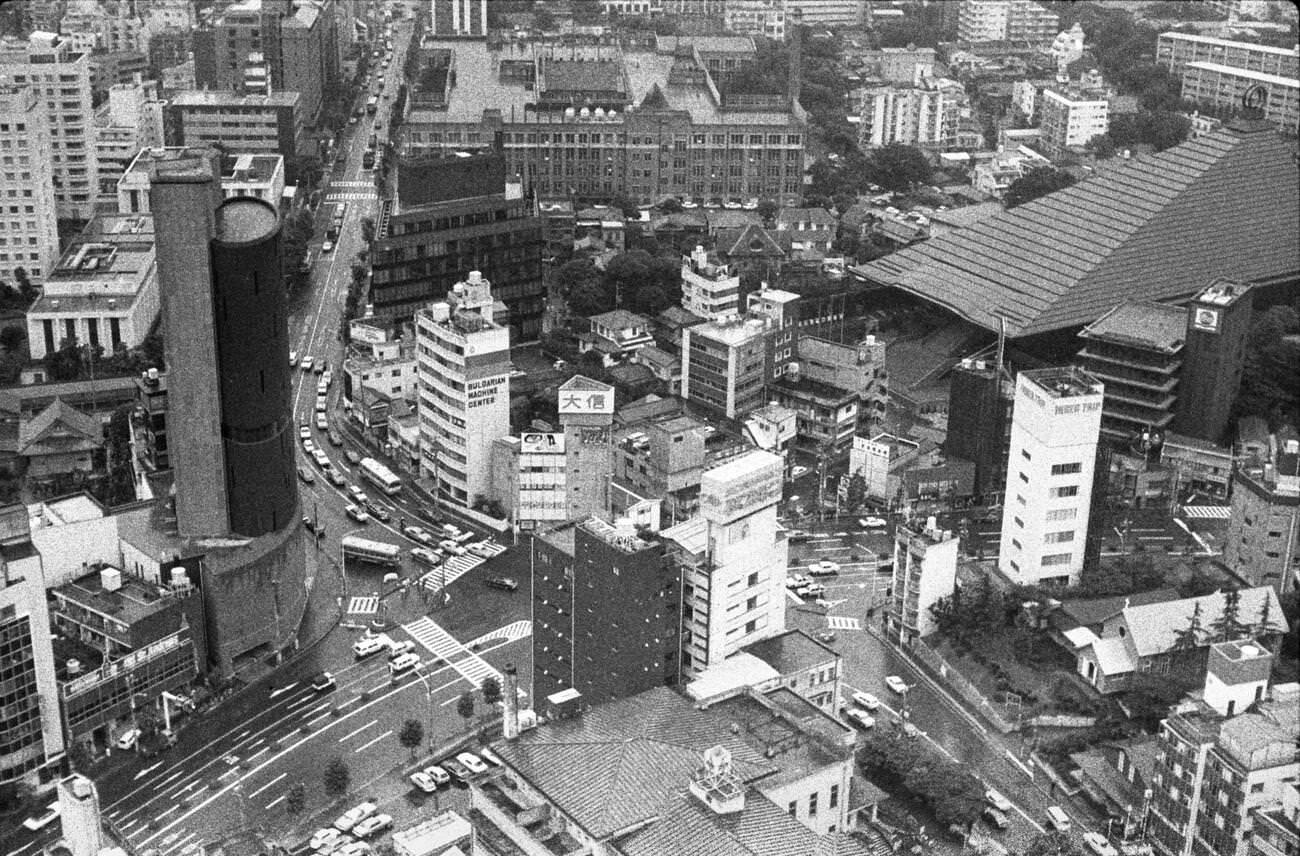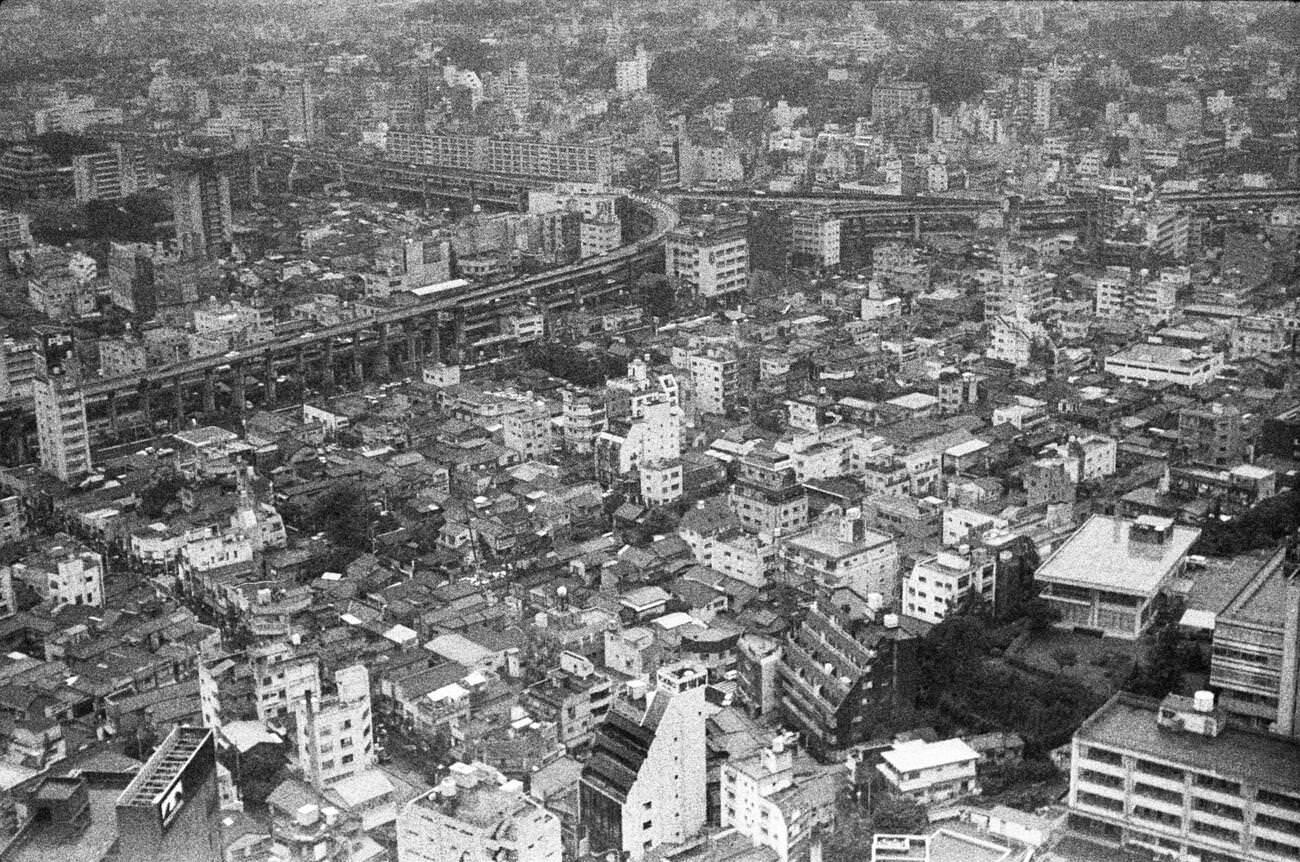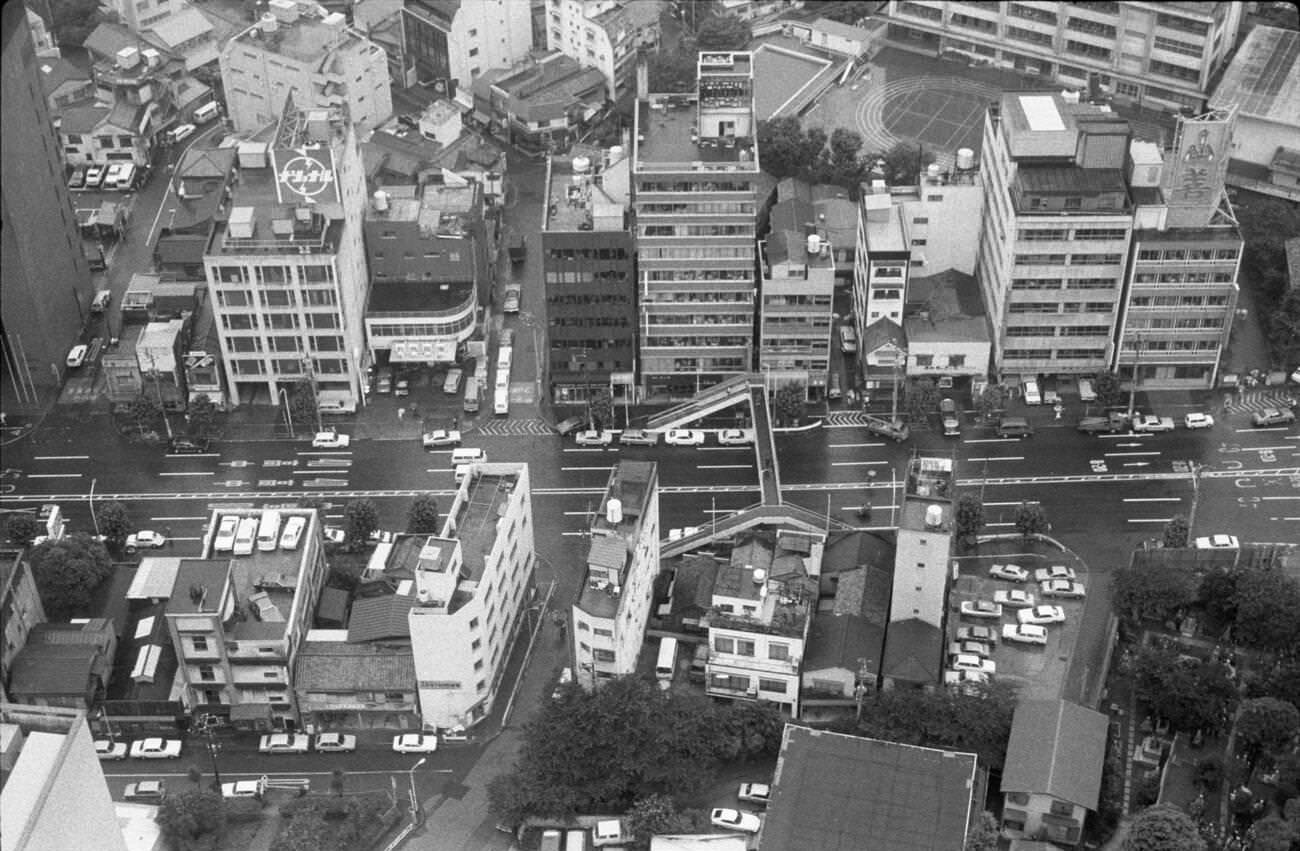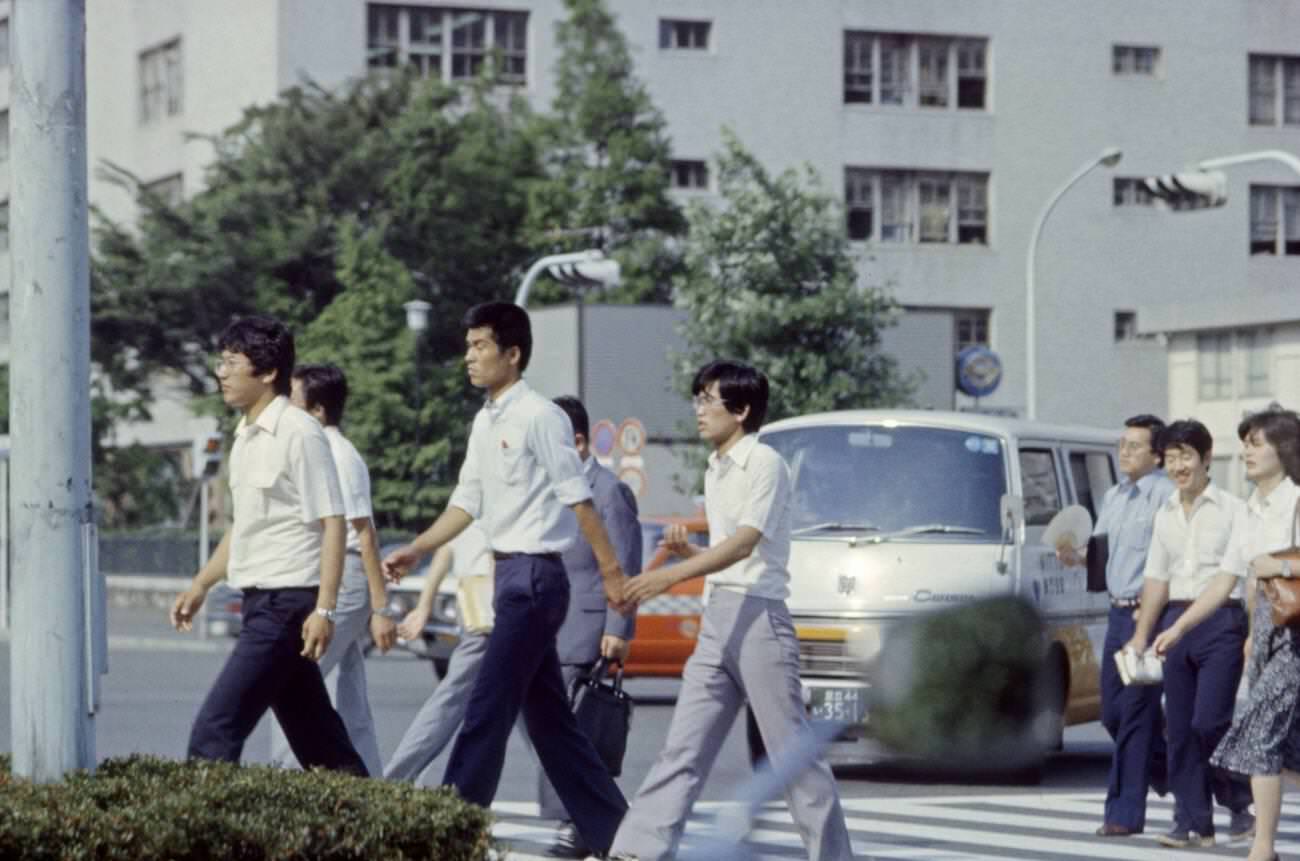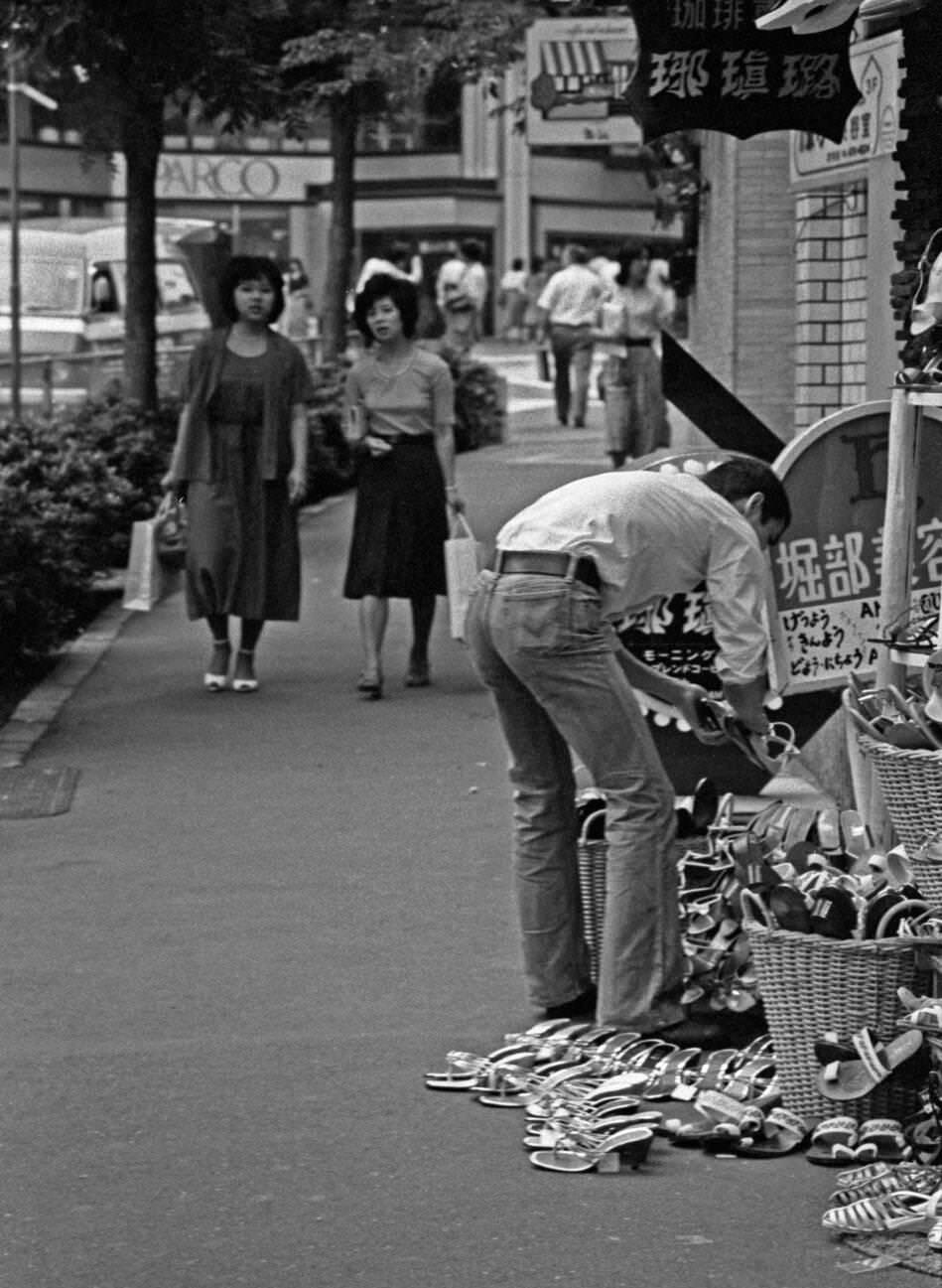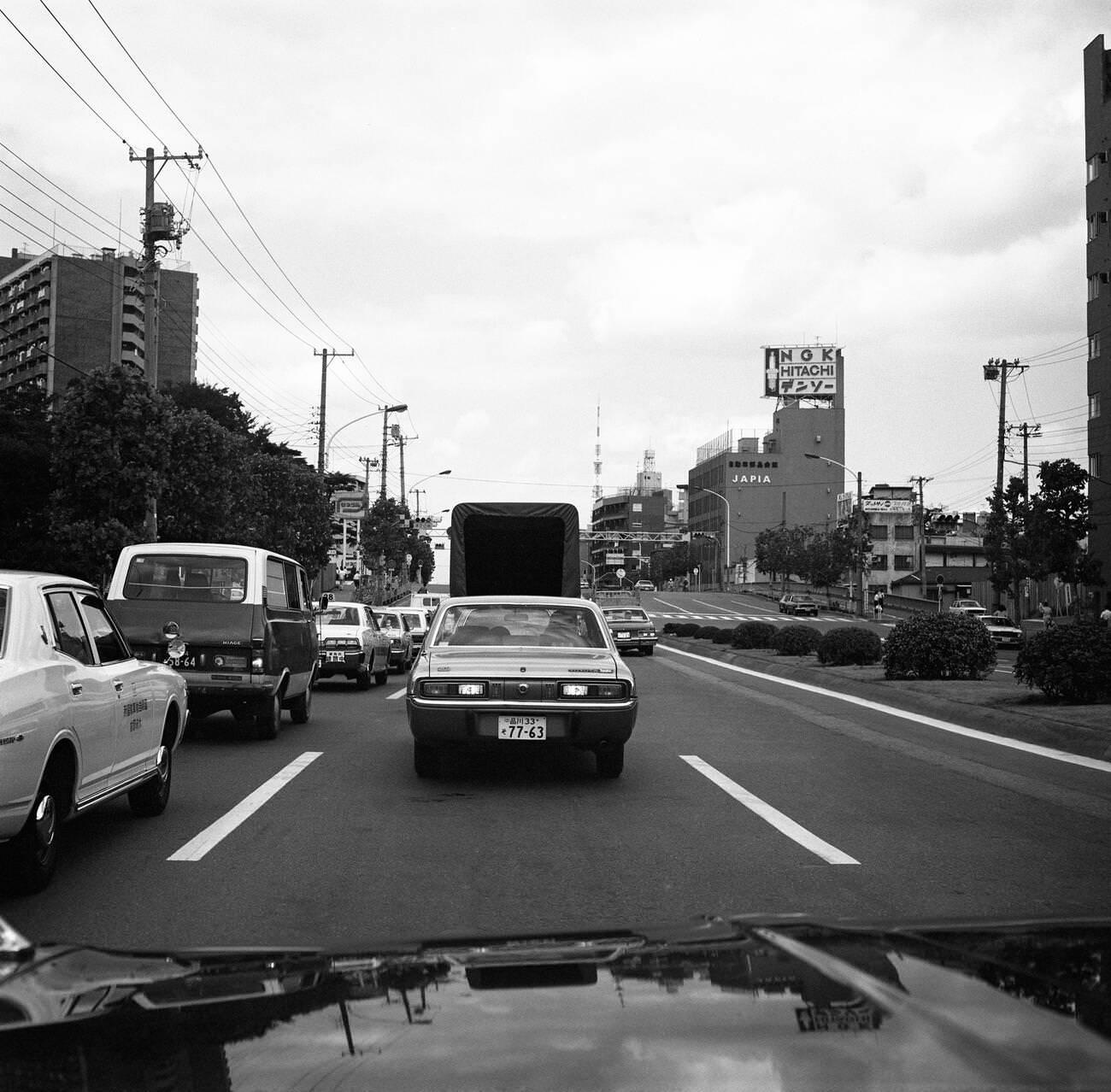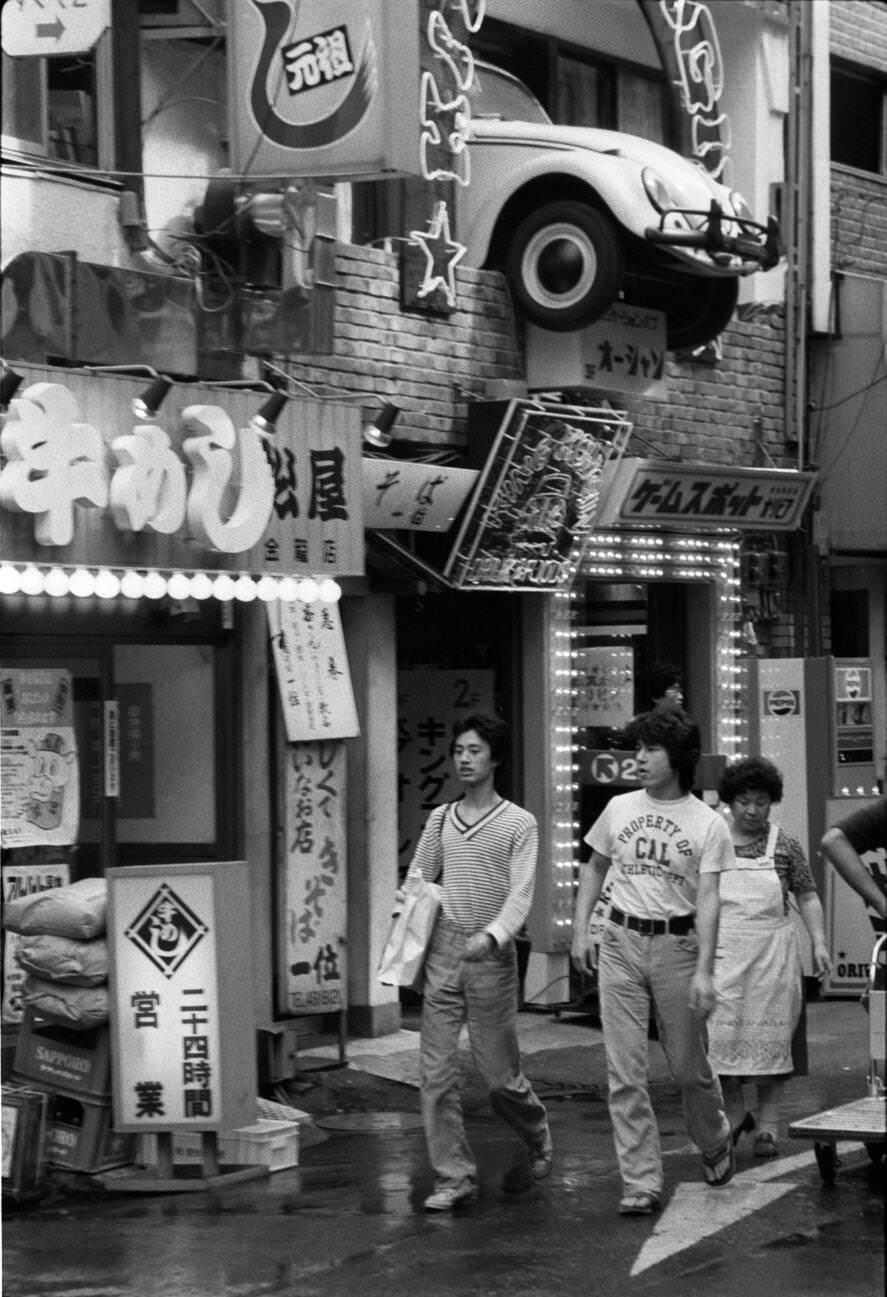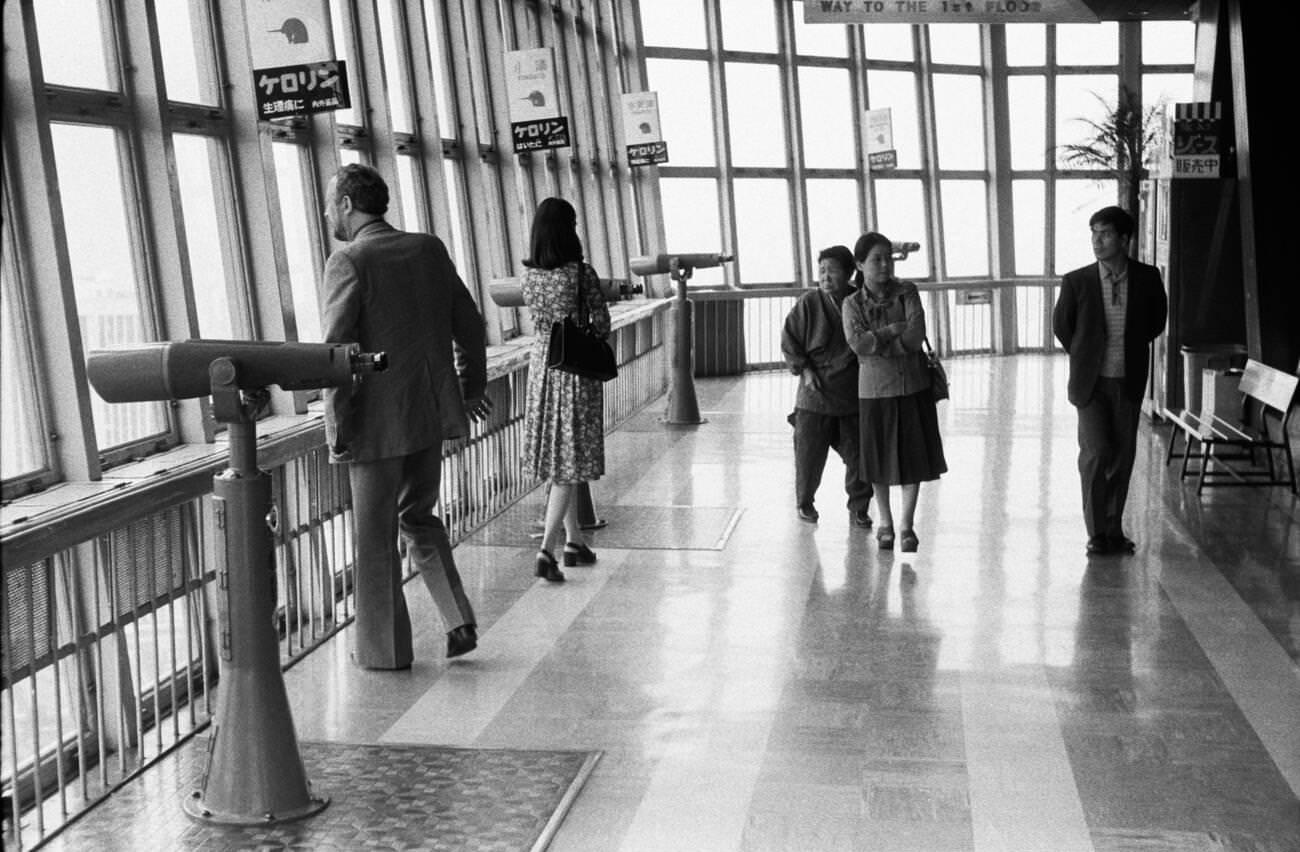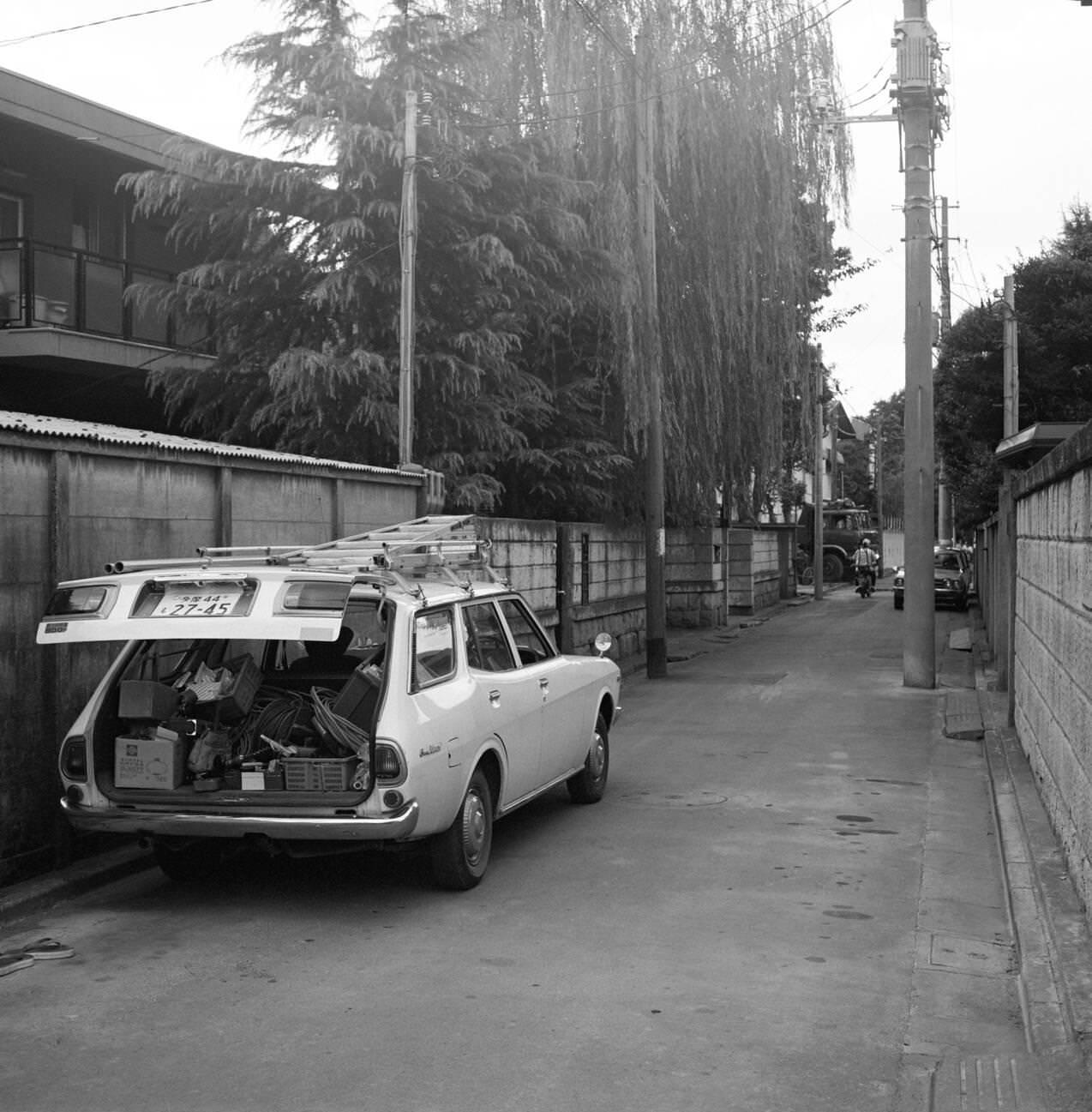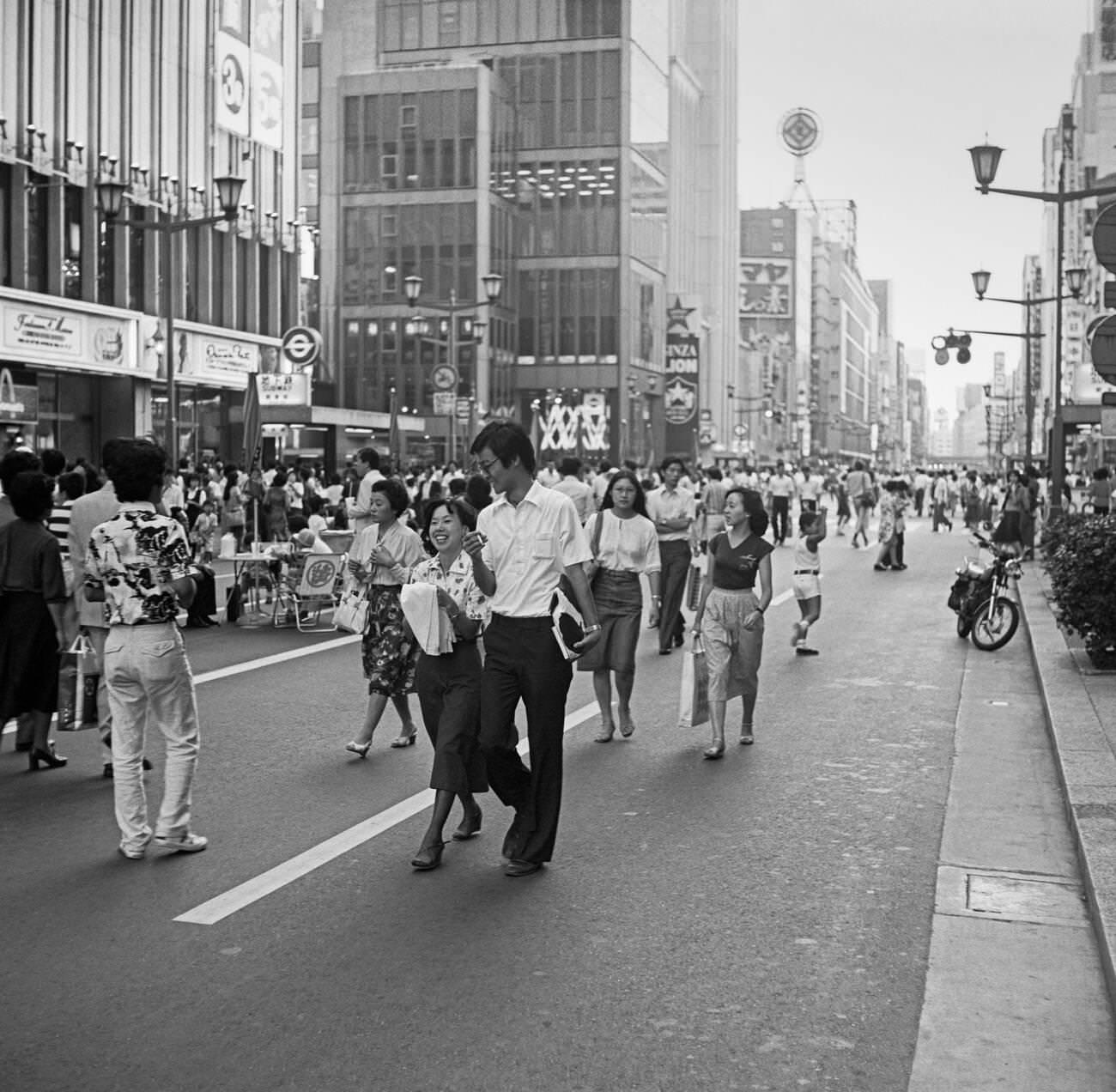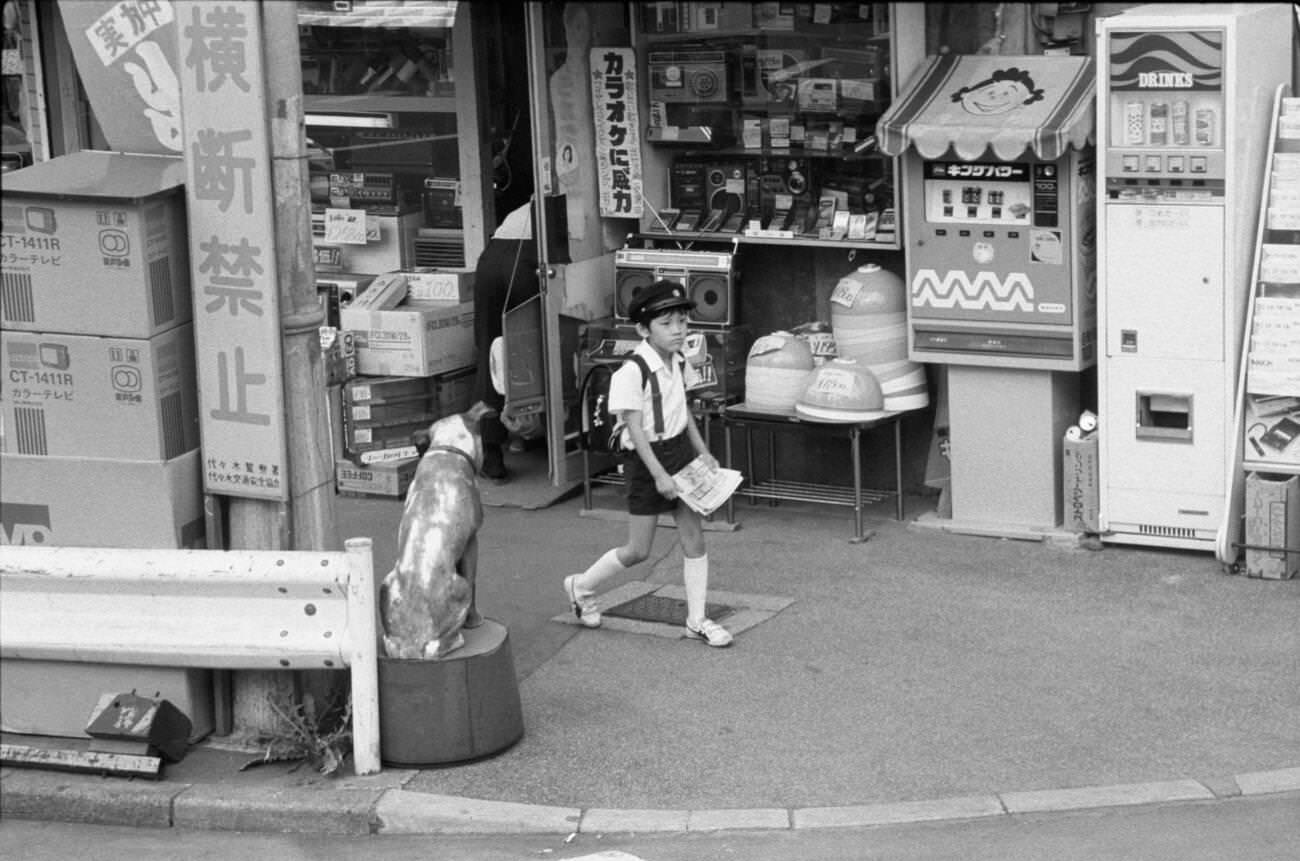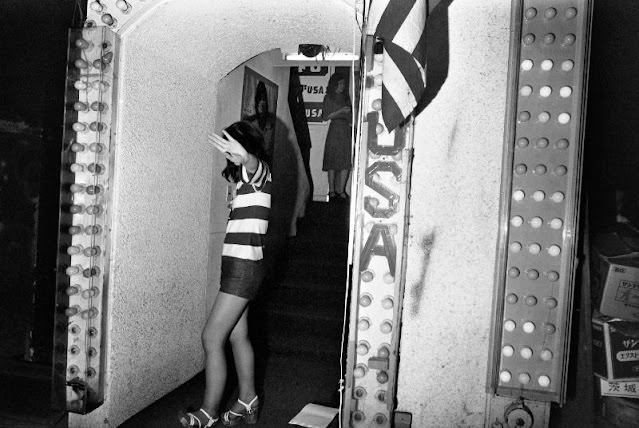The 1970s marked a period of intense urban development in Tokyo. The city’s skyline was constantly evolving, with new skyscrapers like the Kasumigaseki Building and the Keio Plaza Hotel rising to prominence. The construction boom was fueled by the upcoming 1972 Winter Olympics in Sapporo, which showcased Japan’s technological prowess and modern infrastructure. The streets were a chaotic ballet of cars, buses, and trams, while the Shinkansen bullet train whizzed past, a symbol of Japan’s progress.
Neon-Lit Nights and Urban Escapes
As darkness fell, Tokyo transformed into a neon wonderland, with districts like Shinjuku and Shibuya pulsating with energy. The Golden Gai, a labyrinthine alleyway in Shinjuku, was a haven for writers, artists, and intellectuals, with tiny bars and clubs tucked away in hidden corners. In Shibuya, the scramble crossing became a symbol of Tokyo’s urban rhythm, where thousands of pedestrians crossed paths in a synchronized dance. For those seeking a respite from the urban buzz, parks like Shinjuku Gyoen and Ueno Park offered tranquil oases of greenery and traditional Japanese architecture.
A Culinary Adventure
Tokyo’s food scene in the 1970s was a culinary melting pot, where traditional Japanese cuisine coexisted with Western influences. In the bustling Tsukiji fish market, vendors auctioned off the day’s catch, while sushi chefs meticulously crafted their creations. Ramen shops like Kyushu Jangara and Ippudo were gaining popularity, offering steaming bowls of noodles and rich broths. Western-style fast food chains like McDonald’s and KFC were also making inroads, catering to the growing appetite for American-style burgers and fried chicken.
Read more
Cultural Crossroads
The 1970s was a time of cultural ferment in Tokyo. Manga and anime were flourishing, with iconic series like “Astro Boy” and “Speed Racer” captivating audiences of all ages. In the music scene, Japanese rock bands like Happy End and Yellow Magic Orchestra were experimenting with new sounds, blending traditional Japanese instruments with Western rock and roll. The theater scene was also thriving, with avant-garde productions challenging traditional norms and pushing the boundaries of artistic expression.
Electronics and Innovation
The 1970s marked a turning point in Japan’s technological landscape. The electronics industry was booming, with companies like Sony, Panasonic, and Toshiba leading the charge. Transistor radios, cassette players, and color televisions became ubiquitous in Japanese households, transforming the way people consumed media and entertainment. Akihabara, Tokyo’s electronics district, became a mecca for tech enthusiasts, with its endless rows of shops selling the latest gadgets and gizmos. This technological revolution also extended to the workplace, with the introduction of computers and automation streamlining business operations.
Shopping Sprees and Fashion Trends
Tokyo’s shopping scene in the 1970s was a whirlwind of choices, from high-end department stores like Mitsukoshi and Isetan to bustling street markets like Ameyoko. The Ginza district was a haven for luxury brands, while Harajuku was emerging as a center for youth fashion, with trendy boutiques and vintage shops. Department stores like Seibu and Parco were not just places to shop, but also cultural hubs, hosting art exhibitions, fashion shows, and live music performances.
Everyday Life and Urban Challenges
Life in Tokyo in the 1970s was a mix of excitement and challenges. The city was grappling with issues like pollution, traffic congestion, and housing shortages. However, the spirit of resilience and optimism prevailed. People found joy in simple pleasures, like strolling through neighborhood parks, enjoying a cup of tea at a traditional tea house, or attending local festivals. The sense of community was strong, with neighbors often helping each other out and sharing resources.
The 1970s saw the emergence of a vibrant youth culture in Tokyo. Young people were eager to express themselves through fashion, music, and art. Harajuku, a neighborhood known for its trendy boutiques and street fashion, became a haven for teenagers seeking the latest styles. The music scene was equally dynamic, with Japanese rock bands like Carol and Southern All Stars captivating audiences with their energetic performances and catchy melodies. Cafes and coffee shops like Shibuya’s Café de Rope and Shinjuku’s Café Renoir became popular hangouts for young people to socialize and discuss the latest trends.
Sports Mania and National Pastimes
Sports played a significant role in Tokyo’s cultural landscape in the 1970s. Baseball, Japan’s national pastime, was a source of immense pride and excitement. The Yomiuri Giants, a powerhouse team with a devoted following, dominated the sport. Sumo wrestling, another beloved tradition, attracted passionate fans who filled arenas to watch the dramatic clashes between rikishi (sumo wrestlers). The 1972 Winter Olympics in Sapporo, a landmark event for Japan, showcased the country’s sporting prowess and fueled national pride.


